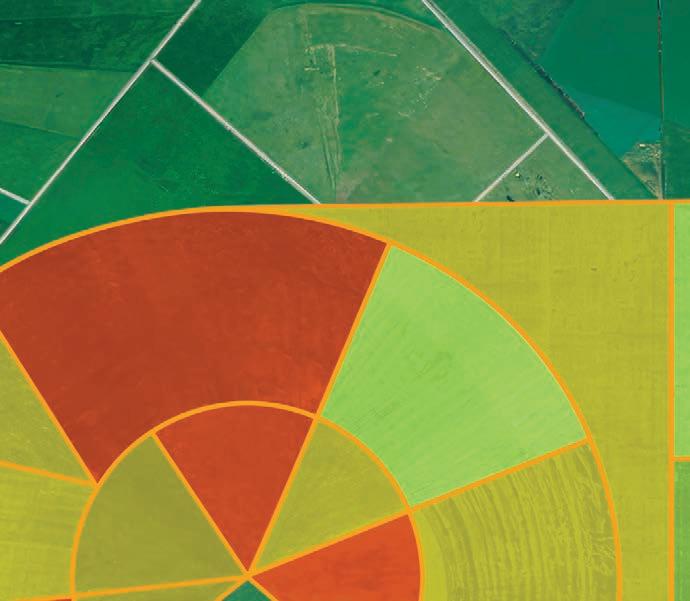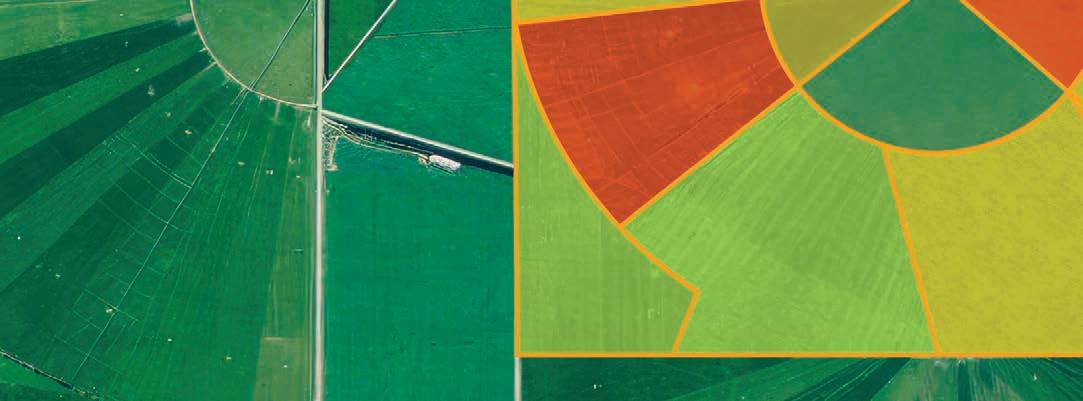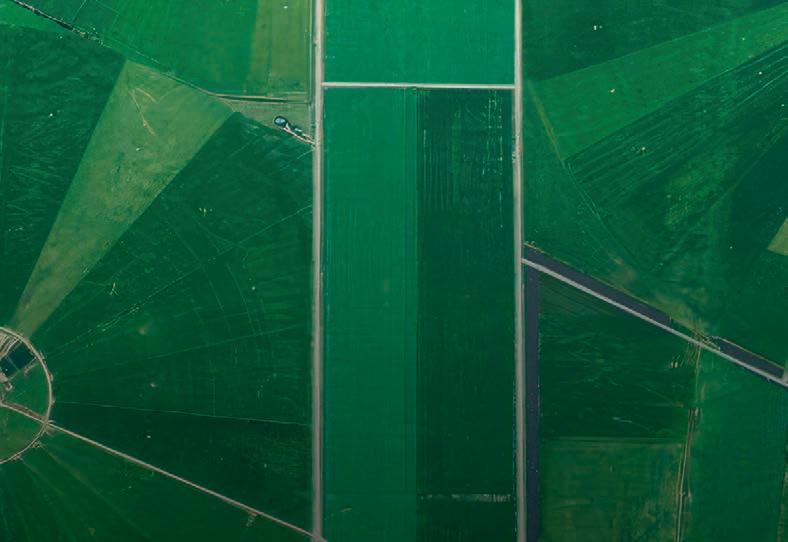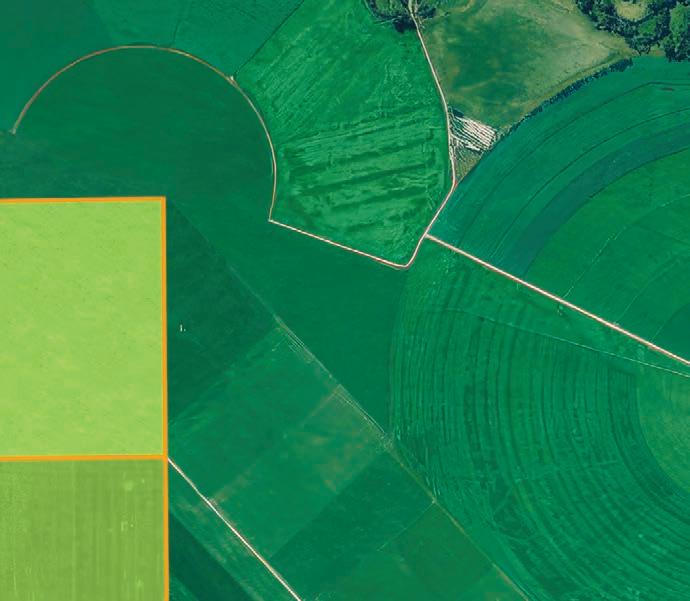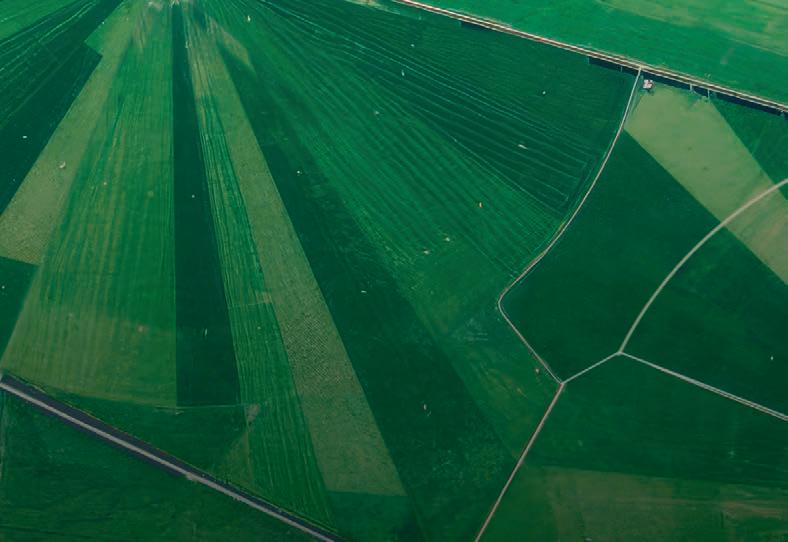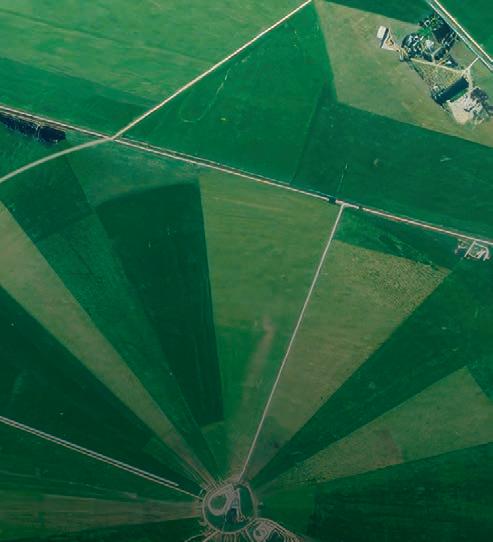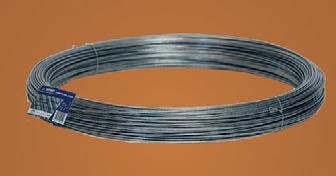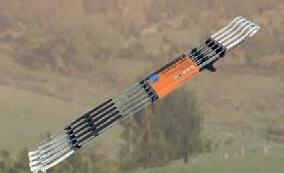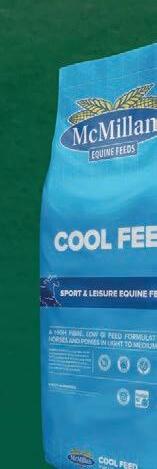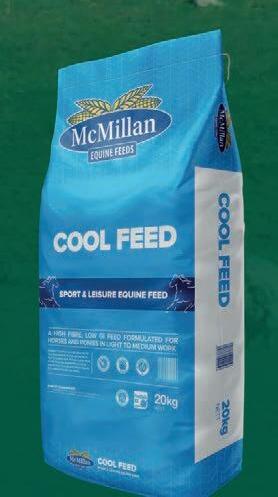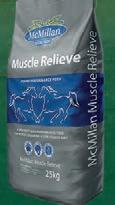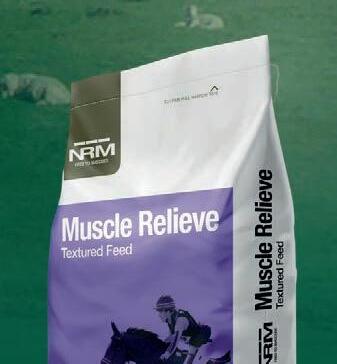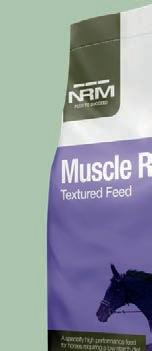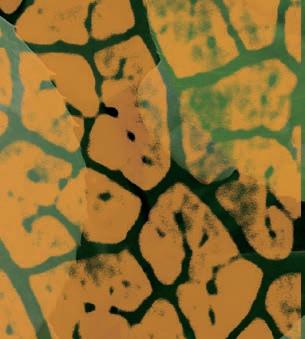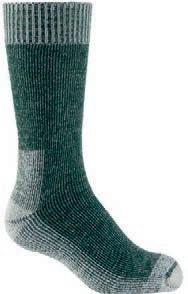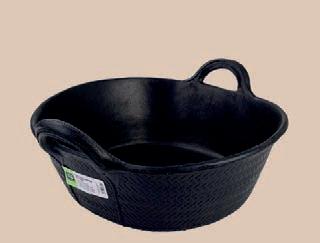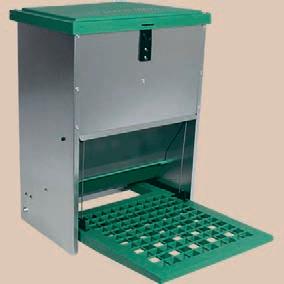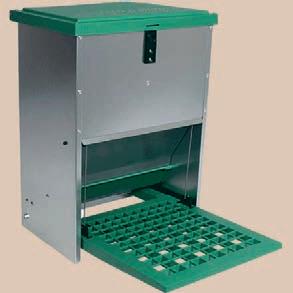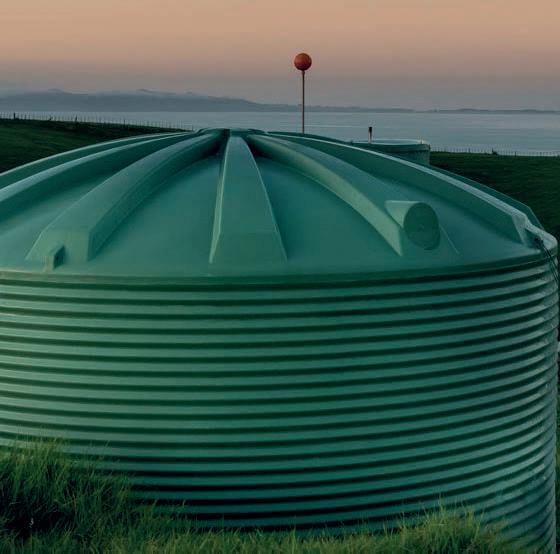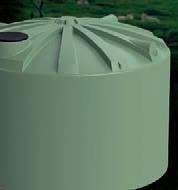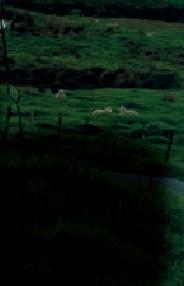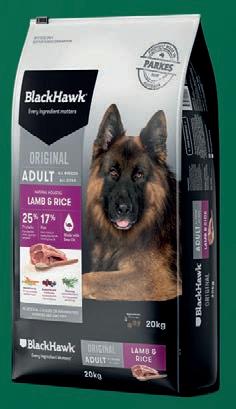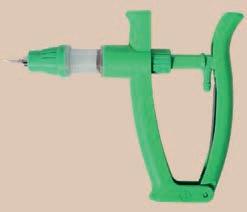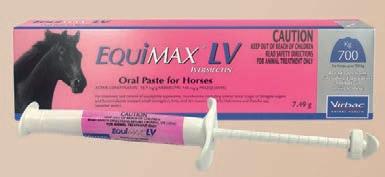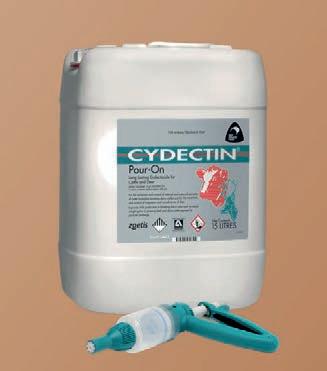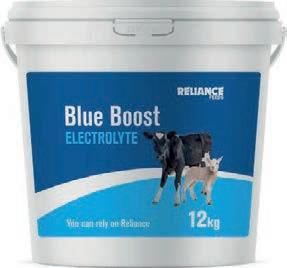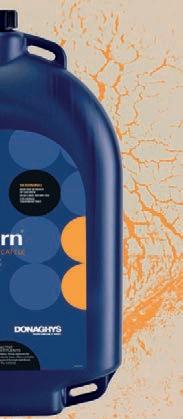



$4.95





$4.95
FARMERS are being warned there is no silver bullet in the works to stem the rapid spread of drenchresistant internal parasites in livestock.
The issue has been building in sheep for 20 years but, concerningly, cattle are now showing triple resistance to drench treatments, prompting scientists and vets to urge farmers to monitor worm burdens and consider grazing systems that enable some parasite control.
Animal health bosses say the development of a chemical white knight to stave off resistance in farmed livestock is unlikely.
“There is nothing new on the horizon and unlikely to be. There is research going on, which we are involved in, with respect to parasites but that is across all species,” said Paul Fitzpatrick, head of Boehringer Ingelheim Animal Health NZ.
Elanco’s marketing manager, Ben McFarlane, said large multinational animal health companies are focused less on pastoral parasite controls and more on high-margin pet products. It has been 10 years since the
last new drench active targeting farm livestock was released, with animal health companies instead focusing investment on more lucrative companion animal treatments.
Globally this market is worth US$22.7 billion a year ($37bn) and growing at 10% a year.
Massey University parasitologist Dave Leathwick has found drench efficacy in cattle on some sample farms has dropped to just 4070% for levamisole, a previously effective treatment against cooperia.
“One farm we visited only the other day had taken a faecal egg count only 10 days post-drenching and it was already up at 650 eggs per gram. The drench simply had not worked,” he said.
The systems most at risk are intensive single-animal-class systems such as bull grazing, “techno” cell systems, dedicated heifer grazing units and runoffs, and intensive beef finishing operations.
Dr Ian Scott, Massey University’s senior lecturer in parasitology, said the current level of drench use is not sustainable given the absence of any new active.
The most recent releases in New Zealand have been Zoetis’s
Continued page 3
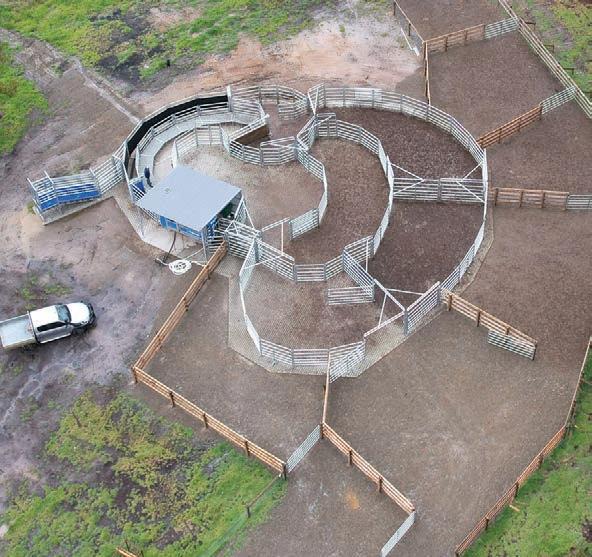

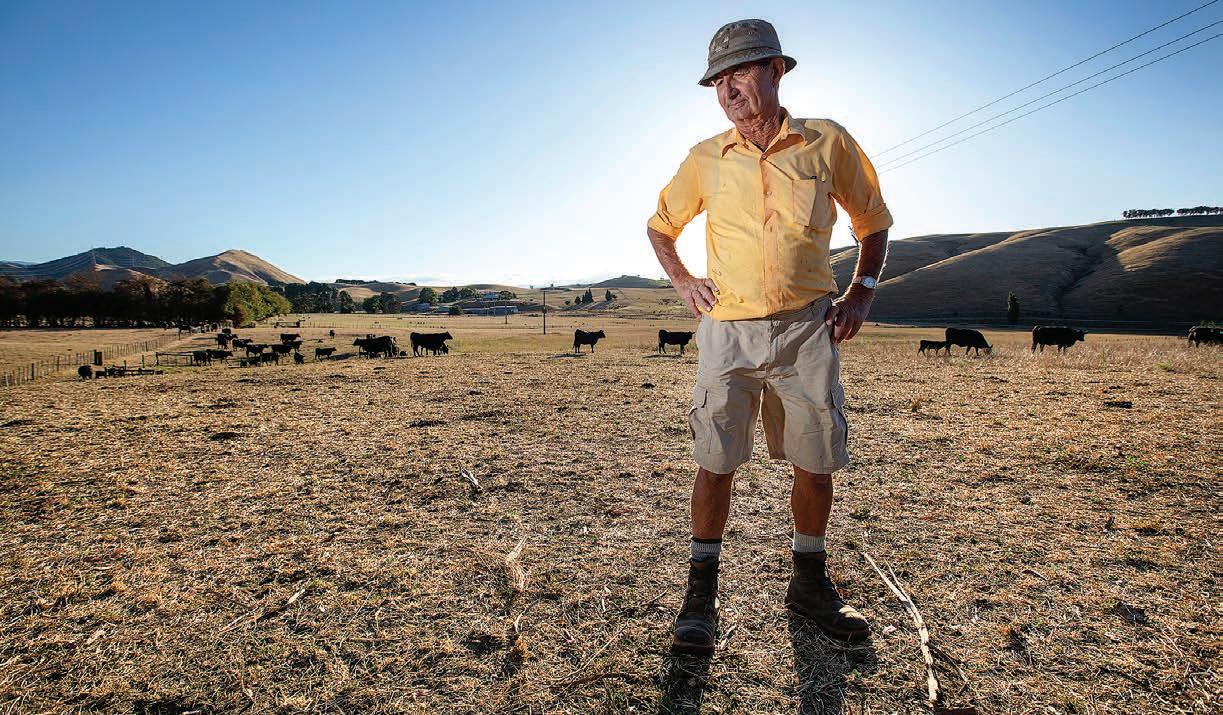
Farmers in the Tasman region are facing their driest spell since 2019. Farmer Colin Gibbs says there is not a lot of feed around and not much likelihood of rain anytime soon.
NEWS 6
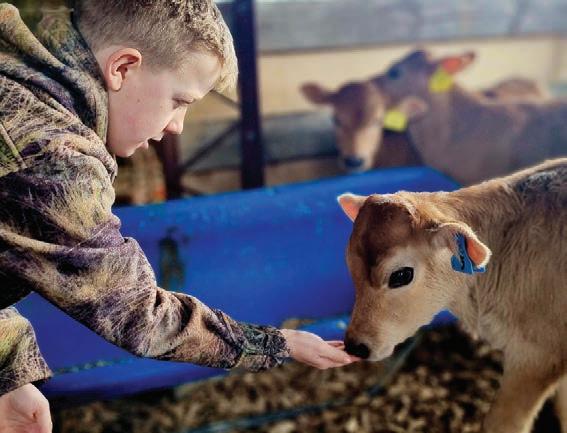
Global trade ministers fail to progress the scrapping of billions of dollars in agricultural subsidies.
NEWS 4
Donald’s Farm near Auckland is where city kids, such as Benjamin Weston, 13, go to learn the ABCs of farming.
PEOPLE 22
Prospects for Australia’s farming year ahead could put smiles on the faces of Kiwi sheep farmers.
NEWS 8
Farmers can often achieve more when they focus their energies on Just Doing It, says Phil Weir.
OPINION 21












EDITORIAL
Bryan Gibson | 06 323 1519
Managing Editor bryan.gibson@agrihq.co.nz
Craig Page | 03 470 2469 Deputy Editor craig.page@agrihq.co.nz
Claire Robertson
Sub-Editor claire.robertson@agrihq.co.nz
Neal Wallace | 03 474 9240 Journalist neal.wallace@agrihq.co.nz
Gerald Piddock | 027 486 8346 Journalist gerald.piddock@agrihq.co.nz
Annette Scott | 021 908 400 Journalist annette.scott@agrihq.co.nz
Hugh Stringleman | 09 432 8594 Journalist hugh.stringleman@agrihq.co.nz
Richard Rennie | 027 475 4256 Journalist richard.rennie@agrihq.co.nz
Nigel Stirling | 021 136 5570 Journalist nigel.g.stirling@gmail.com
PRODUCTION
Lana Kieselbach | 027 739 4295 production@agrihq.co.nz
ADVERTISING MATERIAL
Supply to: adcopy@agrihq.co.nz
SUBSCRIPTIONS
0800 85 25 80 subs@agrihq.co.nz
PRINTER
Printed by Stuff Ltd
Delivered by Reach Media Ltd
Andy Whitson | 027 626 2269
Sales & Marketing Manager andy.whitson@agrihq.co.nz
Andrew Fraser | 027 706 7877
Auckland/Northland Partnership Manager andrew.fraser@agrihq.co.nz
Jody Anderson | 027 474 6094
Waikato/Bay of Plenty Partnership Manager jody.anderson@agrihq.co.nz
Palak Arora | 027 474 6095
Lower North Island Partnership Manager palak.arora@agrihq.co.nz
Omid Rafyee | 027 474 6091
South Island Partnership Manager omid.rafyee@agrihq.co.nz
Julie Gibson | 06 323 0765
Marketplace Partnership Manager classifieds@agrihq.co.nz
Andrea Mansfield | 027 602 4925
National Livestock Manager livestock@agrihq.co.nz
Real Estate | 0800 85 25 80 realestate@agrihq.co.nz
Word Only Advertising | 0800 85 25 80 Marketplace wordads@agrihq.co.nz
Dean and Cushla Williamson
Phone: 027 323 9407 dean.williamson@agrihq.co.nz
cushla.williamson@agrihq.co.nz
Farmers Weekly is Published by AgriHQ
PO Box 529, Feilding 4740, New Zealand
Phone: 0800 85 25 80
Website: www.farmersweekly.co.nz
ISSN 2463-6002 (Print)
ISSN 2463-6010 (Online)


our pioneering spirit tells us nothing’s out of reach

Dairy prices eased 2.3% in the latest GDT, settling to an average price of US$3630/T – the largest pricing slump felt on the platform since August last year.
It is the first decrease at the auction after six consecutive gains. Skim milk powder had the largest drop, down 5.2% to US$2640/T, and whole milk powder fell 2.8% with an average price of US$3286/T.
New Zealand King Salmon has gained approval to establish an open ocean salmon farm in the Cook Strait.
The Blue Endeavour open ocean salmon farm, the first of its type for the King Salmon (Chinook) fish species, will be located 7km off Cape Lambert in the Cook Strait and comprise 20 circular pens. When fully operational it could produce 10,000t of salmon and generate $300 million in new revenue a year.
South Otago’s Stirling cheese factory has become Fonterra’s first plant to run solely on renewable energy.
Work on the $33 million replacement for the coal-fired boiler, dubbed Trees to Cheese, began in 2019 but was delayed by covid. It was commissioned last April and formally opened this month. Four South Island plants – Clandeboye, Darfield, Studholme and Edendale – still rely on coal and will be replaced over time.
Otiwhiti Land Based Training School will continue operations despite part of the station being subdivided and sold.
Part of Otiwhiti Station, in the Turakina Valley near Hunterville, Rangitikei District, was sold to a fund managed by Australiaheadquartered global forestry investment manager New Forests. The 1246 hectare estate was acquired by New Forests following Overseas Investment Office approval.

Back in 1860, exporting meat to the other side of the world seemed about as easy as nailing gravy to the ceiling. But a few determined kiwis took the bull by the horns and now our grass-fed beef and lamb is sought-after all around the globe.

At AFFCO, we see the same pioneering spirit alive and well in farmers today. We’re playing our part too – exploring every opportunity to take New Zealand’s finest farm-raised products to the world.



 TGerald Piddock MARKETS Dairy
TGerald Piddock MARKETS Dairy
HE North American consumer’s hunger for protein is a trend Fonterra is well placed to capitalise on, the co-operative’s head of Atlantic, Richard Allen says.
Chicago-based Allen heads Fonterra’s operations in the Americas and Europe. Back in New Zealand for a month, he fronted a presentation at the co-operative’s head office in Auckland.
Having strength in that part of the globe allows Fonterra to capitalise on emerging food trends, he said. An interest in health and wellbeing has manifested in high demand for protein-rich food, he said.
Consumers are paying much more attention to what is in their food and its impact on their diet.
“We call this the ‘proteinification’ of everything – and I do meant everything,” Allen said.
In any major United States supermarket, every food category has protein claims, he said.
Allen brought back with him a large selection of foods commonly seen on the supermarket shelves in the US, ranging from corn chips to whey powders, coffee and tea, confectionery, cold meal replacement drinks for adults and
Continued from page 1
Startect in 2010 and Novartis’s Zolvix in 2009, both used for sheep but which received only limited uptake by farmers due to cost. He is not confident a new chemical or product will solve the sector’s problems, urging farmers to instead adopt systems that are not reliant on drenches.
Sarah Williams of North Canterbury Vet Clinics said parasite management with no or minimal drench use is possible but
children, and breakfast food such as pop tarts.
Some of these products contain ingredients from Fonterra. While many food trends begin on the US’s west coast, this one is now seen across the country in chains such as Target or Costco, he said.
“When consumers are making purchasing decisions, there is a really natural correlation between ‘it’s high protein’ and ‘it’s good for me’.”
The market has evolved from one mostly used by weightlifters and athletes to one where there is a demand for everyday applications of protein other than drinking a shake after working out, he said.
The wonderful thing with this trend is that in New Zealand we manufacture a significant amount of protein.Richard Allen Fonterra
One of most popular of these applications is healthy snacking. This is a major trend in the US and Europe.
A decade ago high protein snacks generally did not taste great, but the R&D work done around the products mean consumers no longer had to sacrifice an eating
requires focus and planning.
Breeding parasite-tolerant animals is also an option.
Gordon Levet has devoted a lifetime to breeding parasitetolerant Romneys and said there has never been a more critical time to look within animals’ genetics to find a response to chemical resistance to worms.
Levet spent decades looking for sheep capable of tolerating high worm loads by focusing on the outliers at each end of the bell curve of animal traits, isolating
experience to get that nutrition, he said.
The indulgence category is another growing area, with high protein cookies and other confectionery becoming more popular.
“The wonderful thing with this trend is that in New Zealand we manufacture a significant amount of protein. The two main products we make are milk protein concentrate and a whey protein and they are usually in high concentrations of protein.
“Years of innovation into these products mean we can get that protein in without sacrificing the eating of the product and the flavour of the product. You no longer feel like you’re eating cardboard.”
The push for more protein is also seen in the emergence of meal replacers, particularly with the popularity of diet drugs such as Ozempic.
This drug acts as an appetite suppressant but could potentially cause harm if the user does not consume protein to retain muscle mass, he said.
Across the Atlantic, the new United Kingdom free trade agreement has also allowed Fonterra back into that market without significant tariffs.
Allen said there is significant opportunity in this market for a low carbon, grass-fed product.
those outliers and breeding from them.
Looking at the cattle sector’s issues with resistance, he said worm burden tolerance can be bred but the difficulty will be sourcing sufficient numbers for testing and identifying outliers.
This will require several farms to work together.
Ginny Dodunski, the manager of the Wormwise programme, said drench resistance is a symptom of farming systems’ reliance on drench to control parasites.
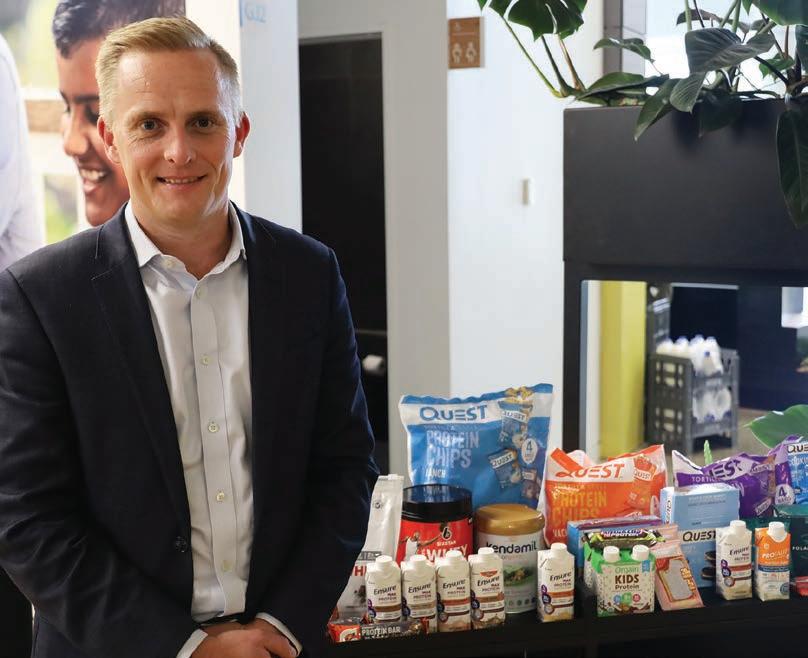
“We’ll probably get to around 10,000 tonnes of business in the first year.”
Sustainability is also “front and centre” in the minds of many of Allen’s customers in the Atlantic region.
He said it is a huge opportunity for New Zealand dairy farmers to leverage the work they have done over the past 20 years.
“Our grass-fed model means we are about on average 30%
“Drench resistance is not the question. The question is, ‘How do I set up my farm system so worms are not a cost to me?’” she said.
Such systems maintain animal condition and offer young stock feed that has as few worm larvae as possible.
There are also diagnostic tools available to help manage drench performance, such as faecal egg counts and analysis.
Having observed farm systems overseas, Leathwick said NZ is well ahead in its awareness of drench
more efficient from an emissions perspective.”
Many of the companies in the Atlantic region are starting to introduce Scope 3 targets and NZ’s efficiency puts it at a huge advantage, he said.
“We know that the traceability and the data we have been collecting for so long on our farms has put us ahead in the world in terms of traceability and transparency.”
resistance and trying to deal with it.
“The US, for example, is well behind the eight ball and not recognising they even have an issue.”
He said it may be that as these larger countries catch up, multinational drench companies will focus harder on developing new actives that benefit NZ as well.
MORE: See special report p13-17





















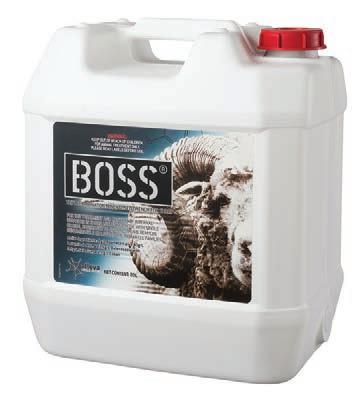










 ENigel Stirling MARKETS Trade
ENigel Stirling MARKETS Trade
XPORTERS are trying to see the bright side of yet another failure by global trade ministers to make any significant progress towards scrapping nearly a trillion dollars in agricultural subsidies.
The biennial meeting of 166 World Trade Organisation countries wrapped up in Abu Dhabi on March 2 with no agreement on agricultural subsidies or tariff reductions.
The WTO’s director-general, Ngozi Okonjo-Iweala, said officials from member countries would continue to work towards a draft agreement that hopefully could be considered for signing at the next meeting of trade ministers in two years’ time.
“I see negotiations as a process. Of course it would have been great if we could finally close that.
“I think when we return to [the WTO headquarters in] Geneva the members will better understand what each others’ concerns and reservations are right from the top, from the ministers.
“That will facilitate moving

now in a better way than it did before,” she said.
Apart from an agreement to roll over a longstanding moratorium on tariffs on e-commerce transactions the meeting failed on a number of fronts.
This included a failure to extend the scope of an agreement to tackle fishing subsidies and limited progress in rescuing the WTO’s system for settling trade disputes between members.
It continues a long run of failed WTO ministerial meetings over a decade or more.
As has often been the case in the past, India was to blame for the go-slow in the agricultural talks.
India refused to back an agreement without first getting support from other members to make permanent a dispensation for subsidies paid to its farmers for the purposes of building food reserves.
New Zealand joined the United States and others in blocking India’s request on the basis it undermined an earlier ban on export subsidies agreed by WTO members.
The executive director of the Dairy Companies Association of NZ (DCANZ), Kimberly Crewther, said exporters were frustrated at the lack of progress at the latest global trade talks.
But the high stakes meant NZ had little choice but to continue to back the WTO.
The latest research from the OECD shows $817 billion of subsidies are paid annually to farmers around the world.
DCANZ research has shown that a halving of European subsidies alone would lift global prices by 8% to the benefit of NZ farmers.
“DCANZ will keep working to illustrate the damage that is being done and hopefully that will feed into the impetus towards a future deal,” Crewther said.
“If you were to look for a silver lining it is in the fact that there is still a deal on the table ... that officials will continue working on.”
The government’s former
agricultural trade envoy, Mike Petersen, said a small country like NZ has little option but to continue to back the WTO despite its recent poor record. NZ will continue to do its best to offset the lack of progress in global trade talks through its network of free trade agreements.
But while these boost export returns by reducing tariffs and non-tariff barriers faced by exporters in overseas markets, they have no role to play in reducing global agricultural subsidies.
“We can’t, for example, as a CPTPP [Comprehensive and Progressive Agreement for Trans-Pacific Partnership] set of countries say we want to have subsidies abolished,” Petersen said.
I think when we return to [the WTO headquarters in] Geneva the members will better understand what each others’ concerns and reservations are right from the top.
“It has to be done on a multilateral basis.
“We will try and get better market access through those free trade agreements but we really need the WTO to play its part.”
Petersen said the US had not given the WTO its full backing – either under the current administration of President Joe Biden or that of his predecessor Donald Trump.
As well as rendering the dispute settlement system inoperative, it had also hindered global trade talks.
“The US is really important to getting countries like India and developing countries back on the path to having the right discussions.
“The US can exert leverage on countries like India that we desperately need back at the negotiating table,” Petersen said.

the final for the first time.
SOUTHLAND shearer Leon Samuels became the first South Islander to win the Golden Shears Open shearing title in 35 years in a dramatic six-man final of 20 sheep each in Masterton. The winner of the New Zealand Shears Open final in Te Kuiti last April and a member of the New Zealand team at the World Championships in Scotland two months later, Samuels was second in the race – the only shearer to get within a sheep of miracle-man and Wairarapa shearer David Buick, who shore the final in 16m 16.064s, one of the quicker times in the 62 years of the event.
It was just two and a half years after Buick was so badly injured in an accident on his Pongaroa farm the prognosis was that he might not walk again.
But ultimately it was a Southland one-two, with 40-year-old Samuels, originally from Mangakino in the Central North Island but based in Southland or Australia for many years, and with only one previous Golden Shears Open final beforehand (third in 2020), winning by 1253 points from runner-up and Riverton shearer Casey Bailey, in
Losing some points in judging of the sheep in the pens, Buick was a further 1.26pts back in third place, followed by Southland veteran Nathan Stratford, James Ruki, of Te Kuiti, and Hawke’s Bay-based Scotland international Gavin Mutch.
The last South Island shearer to win the open was Edsel Forde in 1989, and it was Forde who was also the last shearer from the South Island to win the New Zealand Shears Open (in 1993) until Samuels won it 11 months ago.
Stratford won a third PGG Wrightson National Shearing Circuit final, with just a 0.355pts margin to Samuels in second place, in another Southland quinella.
It was Stratford’s 20th National circuit final, and on the night he also shore his 18th trans-Tasman test, a New Zealand team record celebrated by teaming with Samuels and Marlborough shearer Angus Moore in an all-South Island win over Australians Daniel McIntyre, Nathan Meaney and Josh Bone.
But there were just 2.51pts in the test-match result, the closest margin in trans-Tasman shearing tests since an Australian victory in Warrnambool, Victoria, in 2013, and NZ’s narrowest win since 2009.



when I build rest and

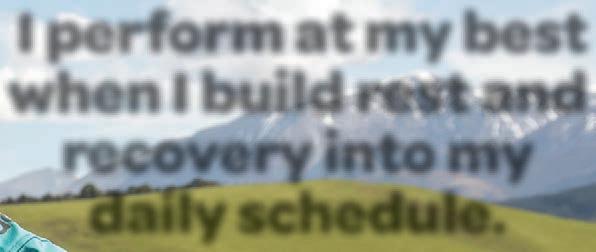


 OGerald Piddock NEWS Dairy
OGerald Piddock NEWS Dairy
NE of New Zealand’s two main sheep milking companies has told its 13 farmer-suppliers to stop milking.
Maui Milk told its farmers by email in late February to start drying off their sheep.
“Unfortunately, covid and now the current global economy has been very difficult on the entire dairy industry,” Maui Milk chief executive Greg Hamill said in a statement.
“Maui Milk is one of many companies being impacted by the imbalance between supply and demand for New Zealand sheep dairy products.
“On Monday the 26th of February we decided to shorten our 2023/24 milking season early and are currently working with our suppliers on options for the 2024/25 season.”
Supplier Allan Browne, who farms 1700 ewes near Cambridge in Waikato told RNZ that the email came as a complete shock.
“Receiving an email at 4.30 in the afternoon telling us to stop milking and to dry off our sheep immediately was a big shock.
“It’s very awkward, timing wise, because we’re trying to get them pregnant, so starving them to dry them off is not really an option.”
Browne said he had put six years of investment and breeding into the business.
“We’re a couple months behind getting the milk cheque and there’s still two more months of milk that we’re not going to get into the vat, which will have a financial impact.”
The lost income will be close to half a million dollars, he said.
Fellow sheep milker, Spring Sheep Milking Co chief executive Nick Hammond, was extremely sympathetic about the situation Maui Milk and its farmer suppliers are facing.
He said within its own business, it works closely with its farmersuppliers to ensure its milk pool is aligned with its customers and the market outlook to keep it stable.
As a result, it cannot take on suppliers from Maui Milk.
“We were asked at incredibly
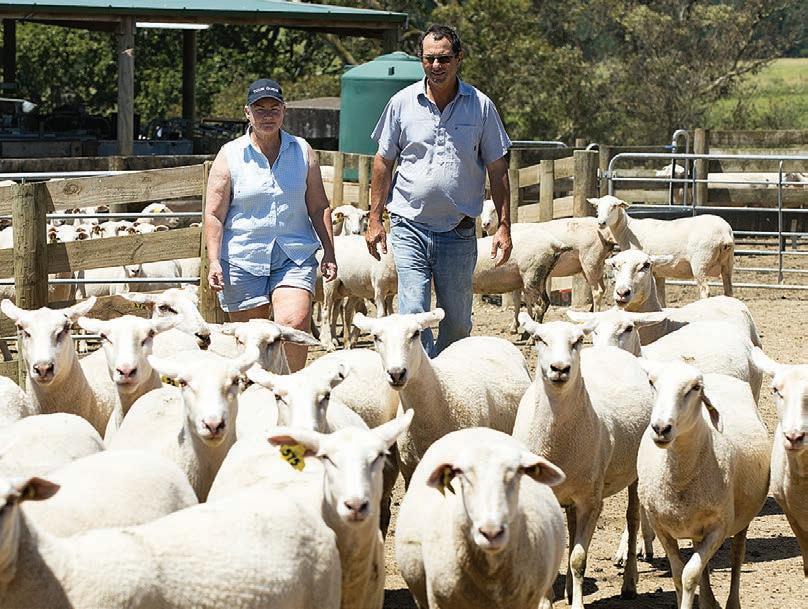
short notice by Maui to take milk from their farms – within a couple of hours’ notice. We have 16 farms, they have 13. It’s not realistic for us to take that on at such short notice.
“We would have if we could, but our production site was fully scheduled, all of our milk for this
season is already allocated to customers who have what they need.”
That said, he said they will retain an open dialogue with those farmers and he understands Maui Milk is working with its farmers to find a way forward for next season.
We’re a couple months behind getting the milk cheque and there’s still two more months of milk that we’re not going to get into the vat, which will have a financial impact.
Allan Browne CambridgeHe said there are two main pressures facing the market Maui Milk operates in. Firstly, the impact of covid-19 on the daigou market was huge.
“It’s still recovering, but not to the extent it was pre-covid. My understanding is that a lot of the industry – not ourselves – were exposed to customers for whom that was their primary market.”
Spring Sheep is not involved in this market, instead using cross border e-commerce to sell its products.
The demographics in China have also changed, with fewer people having children, Hammond said.

HIGHER remuneration is needed to attract more Beef + Lamb New Zealand director candidates, said board chair Kate Acland.
A remit to increase the director fees pool by $73,500 will be considered at the BLNZ annual meeting in Nelson on March 19, but it is proving contentious, Acland said.
Her phone has been busy with levy payers questioning the remit, and lobby group Groundswell
said young farmers in particular are angry about the timing of the proposal.
Group co-founder Bryce McKenzie said higher remuneration might be justified, but he described the timing as “insensitive” to struggling sheep and beef farmers.
“We’re not opposed to the increase, it’s just the timing.”
Acland said an increase is necessary to remove a barrier preventing people from putting themselves forward.
Only three candidates are standing for two BLNZ board roles, compared to 13 who recently
contested the two DairyNZ vacancies.
“We’re just not getting the interest,” she said.
“It’s not all just money, but finances should not be a barrier.”
Acland estimates she spends three days a week on BLNZ business, but said the role is not about earning money or career advancement.
Remuneration needs to be adequate to enable the employment of causal staff when directors are on board business, but Acland said there are also consequences from directors being unable to focus and make daily decisions



about their farming business.
She said an independent remuneration committee made up of farmers was formed to make a recommendation based on fees paid by other levy bodies, farming groups and workload.
“I’m conscious of running a very transparent process.”
The proposal will increase the director fees pool from $401,500 to $475,000, boost the chair’s remuneration to $90,000 – it is currently $76,220 – and directors’ payments to $45,000, up from $38,110.
The fund for additional director duties is recommended to
increase from $20,000 to $25,000.
In comparison, the DairyNZ chair is paid $98,000 and directors $49,000. There is a $20,000 pool for sub-committee chairs and another of $25,000 for work over and above normal duties.
Acland acknowledged the difficult times for levy payers but said delaying this recommendation would mean larger increases in subsequent years to maintain relativity.
Federated Farmers meat and wool section chair Toby Williams supports the increase given the workload and challenges that come with it.



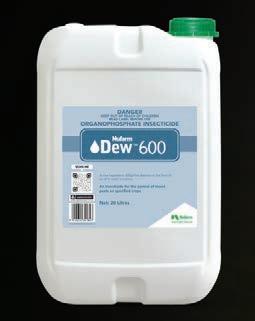



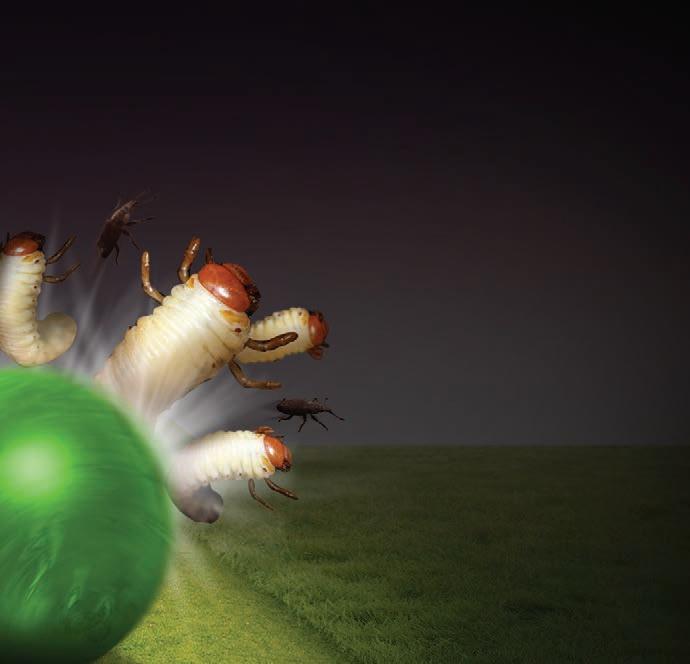


‘The
 RFiona Terry NEWS Weather
RFiona Terry NEWS Weather
ECENT rain brought a very temporary reprieve for some water-deprived farmers across the top of the south, but not sufficient to alleviate the pressure of what many say is their driest period since 2019.
“We’ve had minimal amounts of rain for the last few months,” said Tasman sheep and cattle farmer Tim King.
“It’s considerably worse into the Moutere and Dovedale, where they’ve had less rain for a longer period. They’re extremely, extremely dry, with some of the lowest groundwater levels that have ever been recorded.”
The year of the Pigeon Valley fires, 2019, was the last time King – who’s also mayor of Tasman –recalls the region being so dry.
“Increasingly we’ve found it very challenging for the supply of water to keep up with the amount the stock are drinking and that’s a situation mirrored pretty extensively,” said King, whose supply comes from a combination of pumping from the creek –

which stopped flowing several weeks ago – and wells, which are exceedingly low.
Water restrictions throughout some parts of Tasman have been alleviated by successful releases
this week from the new Waimea Dam. This assisted many horticulturalists on the plains as well as domestic users, but farmers outside the catchment
are still desperately battling to source sufficient water for stock.
Any rain that has fallen has been significantly localised.
“It’s the first time since 2019 the Eves Valley Stream’s completely
dried up and every stream from here to the far side of the Moutere would pretty much look like that,” King said.
“It’s bloody dry and people are definitely looking to shift stock earlier than they might otherwise have done.”
It’s bloody dry and people are definitely looking to shift stock earlier than they might otherwise have done.
Tim King Tasman
Rural Communities Minister Mark Patterson visited Marlborough last week, where some parts are experiencing their driest eight-month period since 1930.
“Obviously the region’s under some duress,” he said. “It’s a very serious dry and the hills are that awful grey colour they go when it’s really dry, and you could see a bit of distress in the vineyards on the vines so clearly there’s a significant event.”
Ironically, the same day







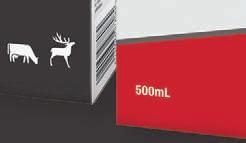


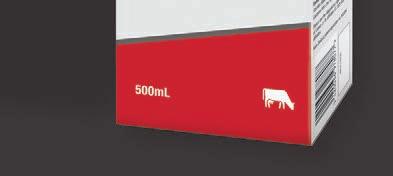
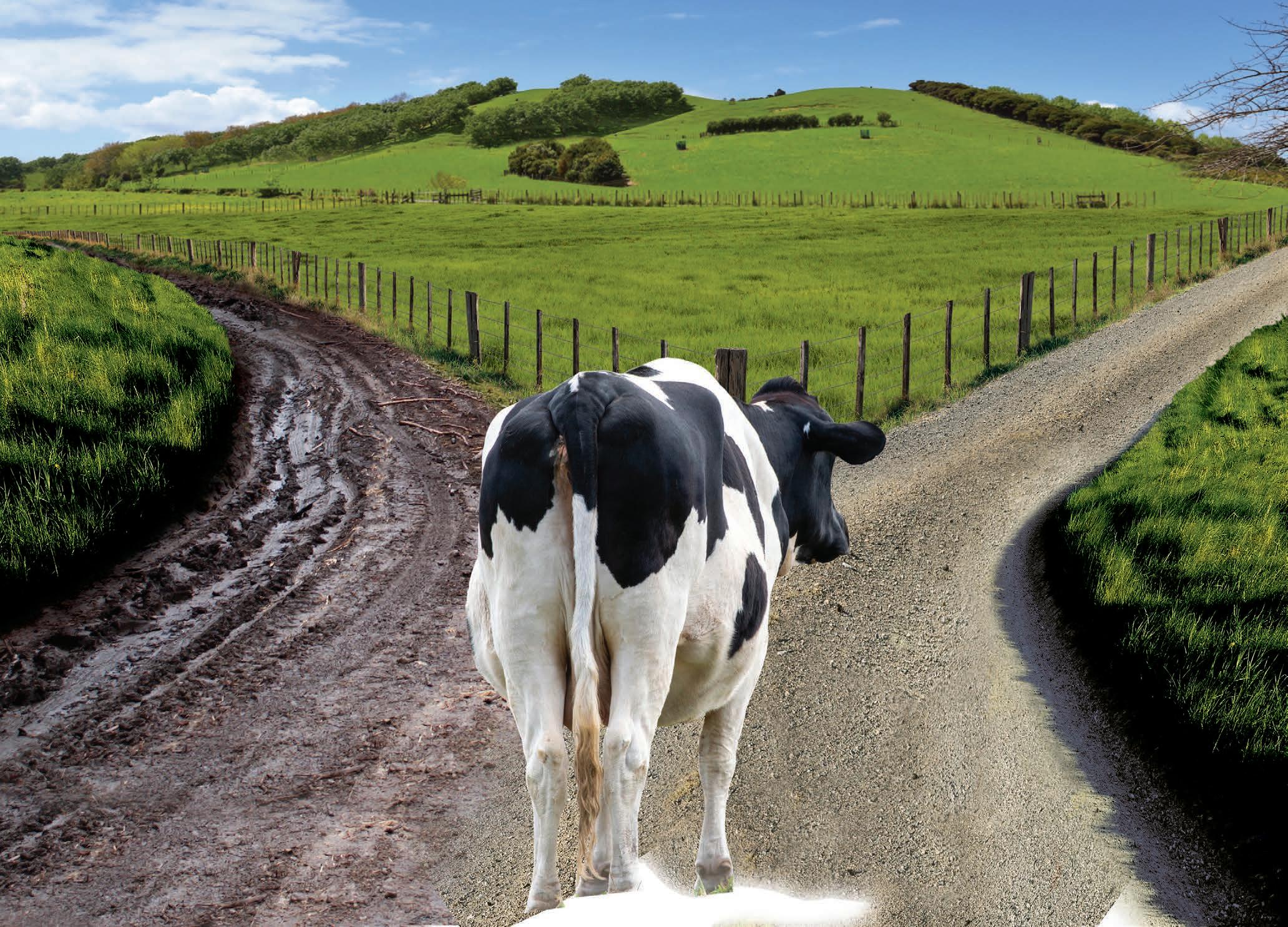

Patterson was in the region, it rained for the first time in weeks.
“My understanding is that it was pretty patchy,” he said.
“Where I was in the Waihopai Valley there was 10mm, just enough to wet the dust. There might have been pockets that had more and maybe towards the coast less. It was a morale booster but nowhere enough to be drought-breaking.”
While conditions are recognised as exceedingly dry, an official medium-scale adverse event has not yet been declared.
“We have released some money to the Rural Support Trust to dispense advice and run some community gatherings to help farmers with their farm management decisions and broadly to bring the community together,” said Patterson.
“There can be a tendency to suffer these things in isolation and everyone’s in it together clearly.
“The problem with droughts and significant dries is they creep – it’s not like something goes through and it’s over. With droughts you don’t know whether it’s going to break next week, next month or in three months, so there’s anxiety that sits around that situation.
“It’s still early into the autumn so there is a chance it could break, and there’s still a window where we can see some feed come away before winter, but we’re certainly taking advice from the Rural Support Trust and the Rural Advisory Group and are open to further discussion.”
Experienced farmers are saying it’s the first time they’ve had forage crops fail so it’s clearly a significant event emerging.
Mark Patterson Rural Communities MinisterLike those on the ground, Patterson said what he hopes for is widespread rain.
“Clearly that window for autumn growth is going to disappear quite quickly,” he said.
“Experienced farmers are saying
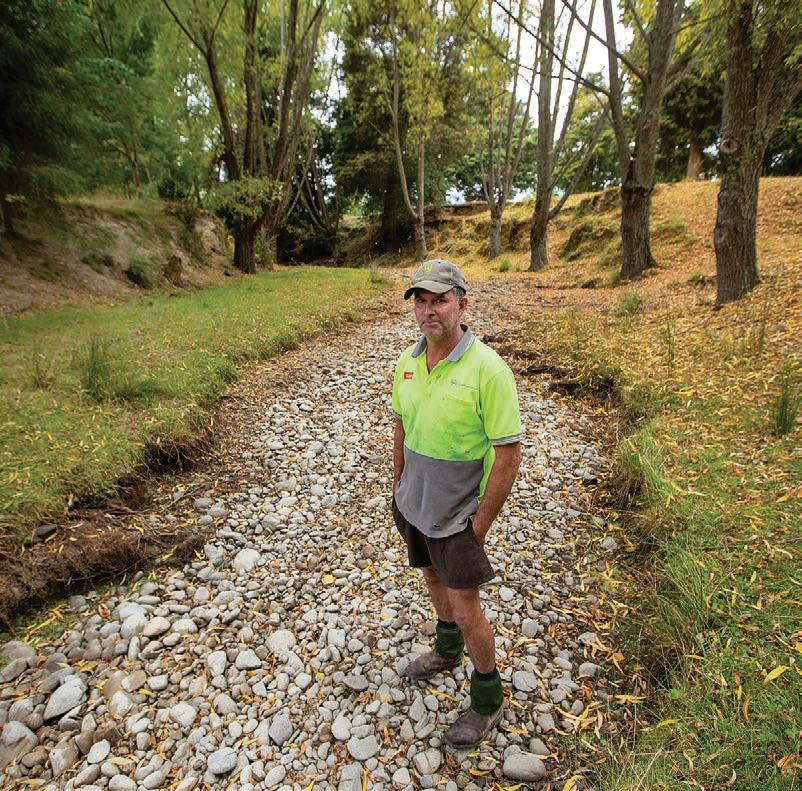
it’s the first time they’ve had forage crops fail so it’s clearly a significant event emerging. It’s always hard because different areas will be impacted differently but we do recognise that it’s getting serious.
“A medium-scale adverse event does trigger some tax relief, but we’re talking about public money, so it is a threshold we need to be confident has been reached. It’s not a step we take lightly but also we will certainly be very responsive to the direction we’re getting from the people on the ground.
“We do recognise that it’s a perfect storm for these farmers, with a climatic event on top of high interest rates and decadelow sheep prices, so we certainly are concerned for their wellbeing and recognise the pressure they’re under.”
In Marlborough’s Waihopai Valley, third-generation farmer Tim Ensor at Tyntesfield Farm has been feeding out his cattle and sheep since early February.
“We’ve had pretty minimal rain after an alright spring but it just
burned off the quickest I’ve ever seen it, starting in late November. Some of the creeks I haven’t seen dry as quick as this.”
He’s heard of farmers near Seddon who have had issues with stock water completely drying up and no further rain of any
significance is forecast for the next couple of weeks at least.
Ensor’s strategy has been to sell store stock and buy in barley for ewes, as well as purchasing additional baleage, and utilising a silage pit that’s been in the ground for a few years.
He has 40 hectares of lucerne, which is cut and baled every year.
“Generally on a normal season that’ll get us through the winter but that’s what we’ve started to feed out, so we bought in some additional local baleage while we could. It should be enough to get us through winter if the rains come in March.”
If they don’t, he hopes it won’t be a repeat of the 2020 drought when significant rain didn’t arrive until May.
“On average we’d get around 650mm of rain annually but that year it was half that.”
In February the government contributed $20,000 to the Top of the South Rural Support Trust for farmers and growers in need.
Fourth-generation Tasman farmer Colin Gibbs is one of the founding members of the local branch of the Top of the South Rural Support Trust and a member of the Dry Weather Task Force, which is made up primarily of Waimea water users, and works to manage water during dry periods.
“There’re some gulleys that
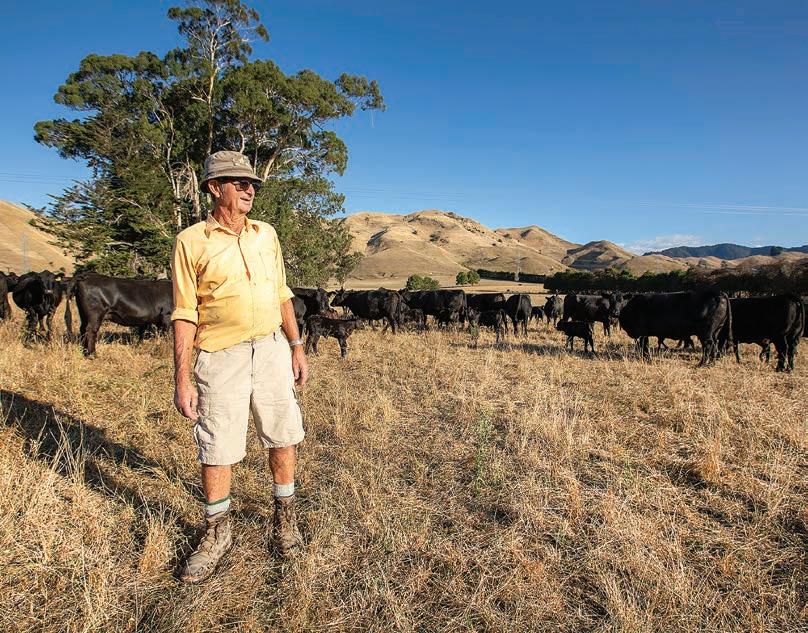
usually hold a little bit of water but they haven’t got much in them now, so that’s all got to be supplement-water fed.
“Compared with 2019 we are probably drier than that particular year, and we thought we were dry enough then! We are getting to the stage of being water short – it’s something to be reckoned with all the time.”
Homegrown baleage is already being fed to cattle.
“We’ve got supplementary feed for now but we’ve still got trading stock on hand at the moment, particularly lambs. There’s not a lot of good lamb feed about and the pundits are saying there’s not much likelihood of rain for the next 10 days, although things might change.”
Kerry Irvine, of Federated Farmers’ Nelson Provincial Executive, has sheep and cattle on 700ha southwest of Nelson in the lower Wangapeka Valley. The recent 15mm of rain was swiftly blown off by the wind the following day, he said, and no further rain was forecast.
Compounding the dry weather, he said, is the fact that winter and spring were also dry.
“We’re dry but we’re managing to get through but there’s isolated pockets in Nelson that are really dire, that have lost their house water and all their stock water’s gone. All some people are doing almost all day is cart water for their stock.”
He knows of some farmers who’ve been feeding out since early January.
“The stock a lot of us have got on farm now is capital stock ewes and I know there’s been a number where those older capital stock ewes that would traditionally do one more year have gone too.”
Irvine has water restrictions already and is anticipating additional cuts without further rain soon.
“We’ve got 18ha of irrigation and we’ve been cut by 25%. Further cuts are a concern but you’ve just gotta keep walking forward and play what’s in front of you. If you need to sell store stock, don’t pretend, don’t try and be a hero, just move them.”
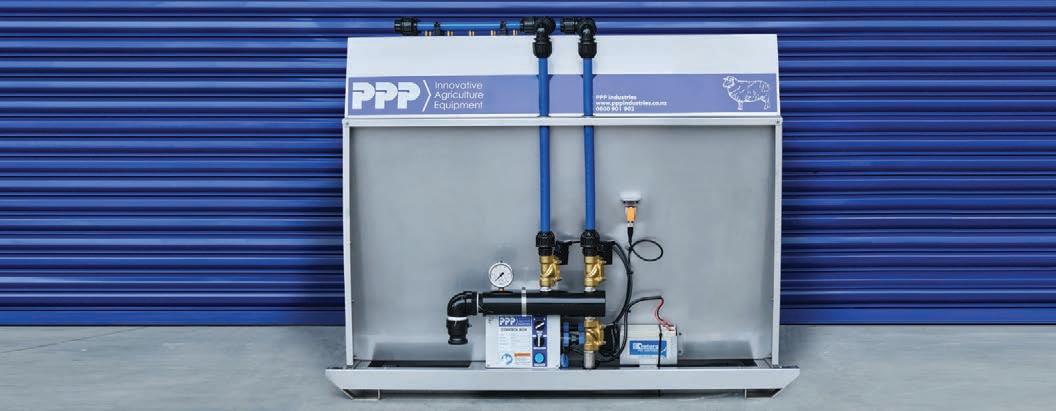








New Zealand farmers are not alone in facing the challenge of striving for value while mitigating their environmental footprint. Senior reporter Richard Rennie is in Australia to find out how our neighbours are approaching the issues of gene technology, carbon farming and sustainability.
NEW Zealand sheep farmers still stinging from Australia’s rampage across their coveted Chinese market may take some comfort from news across the Tasman on prospects for Australia’s farming year ahead.
Dr Jared Greenville, director of Australian Bureau of Agricultural and Resource Economics and Sciences (ABARES), presented an upbeat picture of the year ahead for ag Australia to delegates at the agency’s annual Outlook conference in Canberra.
It came on the back end of a summer when Australian farmers had offloaded millions of animals in expectations of El Niño drought conditions, only to find on average the summer has been wetter than expected in many areas, other than Western Australia.
“We did get a significant reaction to some of the announcements made about El Niño and had a definite rush to slaughter early on,” he said.
That has resulted in slaughter rates for sheep being up 12.5% on
last year, which has had a major impact on pulling down prices internationally to unsustainable levels.
“That came after three years of restocking, causing prices to collapse in local saleyards,” Greenville said.
“The seasonal forecasts were not that extreme, but when it started getting dry last year producers did not want to take the risk. The quality of some of the stock offloaded was also lower. Then it did start to rain, and supply has now held up.”
Offering some relief to Kiwi farmers feeling the effects of Australian sheep offloading, he said expectations are for a more average season in the year ahead.
Slaughter rates are anticipated to be lower, and only a very small drop in numbers for the nation’s 75 million sheep is expected.
“We usually flip from wet to dry, and dry to wet, without really having neutral conditions, so there is some upside risk there,” he said.
Four years after the devastating
drought period ended with the bush fire summer of 2018-2019, Australia’s primary sector is gathering a head of steam.
The sector is surging from its current production value of A$85 billion (about $90bn) towards $100bn, possibly within the next five years. Greenville said it has surprised many who had long anticipated it running steady at a value of about A$60bn a year.
“The cropping sector’s ability to respond has been phenomenal, but the biggest risks there are cost pressures for smaller producers.”
Key crops have included significant growth in cotton production with growing areas expanded further south into states including Victoria.
Longer term growth is also coming from horticultural production.
Shifts in tastes and improvements in water management have the sector’s vegetable fruit and nut production almost doubling in under 10 years.
Similarly, beef production has also doubled in that time to

SOAKED: Unexpectedly high rainfall through summer across large areas of Australia’s eastern states has prompted sheep farmers there to slow their stock reduction, says Dr Jared Greenville, head of ABARES.
account for about A$12.5bn of agricultural value.
The coming year promises to deliver Australian farmers better balance sheets, with expectations average broadacre properties will swing from an average of $40,000 loss to $40,000 profit.
The prospects of continuing growth are coming in a sector that was subsidised as heavily as European producers were up until the late 1980s to the tune of 13% of farm incomes. That is now estimated to be about 4%.
Productivity gains, once the strongest of all sectors, have since fallen to well under 1% a year from highs of 2.2%.
While a better year may signal lower lamb sales into NZ’s valued Chinese market, Australia is talking a strong case for being among the world’s lowest for agricultural carbon emissions. The sector sits among the world’s top three for lowest emissions intensity, and ahead of NZ on a kgCO2 per US$ of production, at 1.5kgCO2/US$ compared to NZ’s 2kgCO2/US$.
“It has us in an enviable position when it comes to sustainability credentials, but more is required, as we are on track to become 20% of total emissions by 2030, compared to 16% at present,” Greenville said.



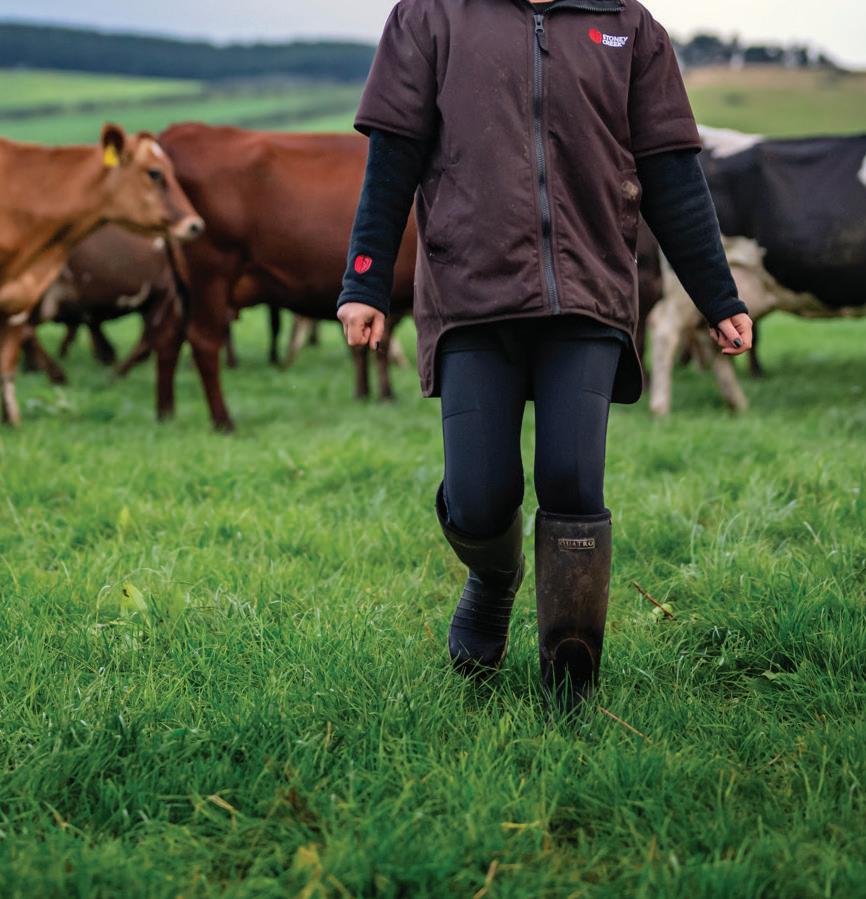
 GRichard Rennie in Canberra NEWS Sustainability
GRichard Rennie in Canberra NEWS Sustainability
LOBAL agricultural producers will struggle to meet the triple challenges of improved sustainability, greater productivity and maintaining profitable farm operations over the coming years, despite signs of improvement in reducing greenhouse gas intensity globally.
So says Dr Marion Jansen, director of trade and agriculture for the OECD, who presented her outlook on global agricultural challenges to delegates in Canberra at the ABARES Outlook conference.
Her data indicating that globally agriculture’s carbon intensity is projected to decline was encouraging, but was countered by the need for large productivity increases to offset the rise in hunger that is now plaguing the planet.
After a period of relative stability when global hunger affected about 7.5% of the world’s population, it has risen since covid to nearer 10%, with estimates that up to 780 million people now facing extreme hunger.
This includes extreme differences in global dietary protein sources, with meat forming the main protein source in higher income countries, while developing countries continue to source from staples, namely cereals, tubers and sorghum crops.
But future protein sources are likely to see a continued move to meat, driven by mid-lower income countries’ gains in livestock productivity.
Much of the anticipated growth


in future agricultural production is likely to come from Africa, with crop production expected to be drivenby productivity improvements, rather than expanding land use.
Meantime India continues to push on with gains in dairy and meat productivity.
“And this is good news for global greenhouse gas emissions. We even see some regions in Africa where land use will decline,” Jansen said.
“But while we expect the intensity of greenhouse gas emissions to go down, it will not be by enough for the entire production of greenhouse gases to go down.
“Ruminants remain a key source of GHGs and are likely to continue to only increase.”
To meet demands for more food and reduce net GHG emissions requires a tripling of the productivity gains made in the past
10 years, something Jansen said is almost impossible to achieve.
For livestock productivity this would represent an increase of 31% and for crop yields an increase of 24%.
Uncertainty and global shocks such as the war in Ukraine have only made the task tougher for farmers, with hikes of up to 40% on input costs including nitrogenous fertiliser.
“And those cost rises have come higher than the rise in commodity values.”
A 1% rise in fertiliser costs feeds through to a .14% increase in beef prices and a .16% increase in dairy, for example.
Global trade and a rules-based trading system need to be preserved to play a vital role in at least maintaining nutrient flows to the world’s population, she said.
 Richard Rennie in Canberra MARKETS Economy
Richard Rennie in Canberra MARKETS Economy
INSIDIOUS tax creep has been putting the brakes on Australian household wealth for the past two years, and has started to have a greater effect than the rapid rise in interest rates.
Westpac Australia’s chief economist Dr Luci Ellis painted a mixed picture of how New Zealand’s largest trading partner is managing post covid, sharing some of the issues familiar to many New Zealanders.
Australia’s household wealth matters to NZ for more than just its envy factor. The US$1.7 trillion ($2.7 trillion) economy accounts for about $8 billion worth of exports, much of them from the primary sector –making it NZ’s second most valued market after China.
Typically, tax creep has people paying more tax not because of a shift in tax rates but due to rising nominal incomes being captured in a higher bracket, despite real incomes remaining static or falling.
“There has been a real squeeze upon the Australian households, not only from inflation, but also bracket creep. As a share of household
income, this is now at its highest ever level.
“What a lot of people do not realise is the tax drag is sucking out more purchasing power than higher interest rates now.
“So, policy matters, but it is not just about monetary policy.”
She said covid’s marks still linger in the economy, with effects not only on inflation, but also population growth, which slumped, only to surge significantly when borders fully reopened last year to Chinese students, in particular. Rents have soared.
In covid’s wake has come a more restricted fiscal policy after covid expansiveness, and a rash of interest rate rises.
After seeing unemployment rise to 7.5% over covid, it dropped to 3.5% within a year – something Ellis said she would never have believed back then – and now sits at about 4%.
“It is expected to drift up to 4.5%, but that is still lower than in the previous 20 years.”
Meantime the economy is experiencing its highest level of labour force participation in history. This is partly attributed to demographics, with an ageing population that would have been expected to be stepping out of work,
actually continuing to be engaged.
“This has been a surprise to all economists who expected us to have a shrinking labour market due to people retiring.”
She described Australia as having a “pretty soggy” economy for the second half of 2023.
Expectations are that any cuts to Australia’s interest rates are unlikely to kick off until September.
Australia’s total mineral exports account for almost two-thirds of all export revenue, and prices of commodities such iron ore matter to the economy’s direction.
With ore prices sliding off their historic high of AU$120 a tonne, the ease back to AU$110 a tonne still sits significantly above budgeting average of AU$60 a tonne.
“The corporate tax implications of that are massive, and an important element in our terms of trade, and plays a huge part in supporting our national bottom line,” she said.
Coal and gas make up the big three resource export components.
With the export of such bulk commodities comes the impact of bulk shipping costs, soaring in recent months as a result of the Red Sea disruptions.
“But they still remain below where they got to over 2021.”




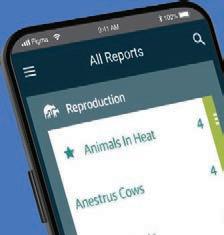

 Annette Scott NEWS Land
Annette Scott NEWS Land
CONCERN is mounting as regional councils nationwide work through their long-term plans – with many forecasting a hefty double-digit rate rise.
“Every council is coming for the farmer’s wallet, we feel we have really had the whip taken to us,” Federated Farmers local government specialist Nigel Billings said.
“The struggles local governments are having with infrastructure is ending up farmers’ problem in rate bills.”
Billings expects 17 regional consultations will go live this month and while councils normally have a June 30 timeline to adopt their long-term plan (LTP), this year they have until September 30, on account of the rollback of Three Waters.
“I am anticipating the process nationwide will be quite drawn out this year,” Billings said.
“The LTP is important, but this time is a crunch year with all regional councils going hard on environment and infrastructure and the huge swing on Three Waters and what that uncertainty generates.”
Billings said there is more to

DISCONNECT: Nigel Billings says there is a big disconnect in funding arrangements in what local government is being asked to do and what they are doing.
be concerned about than just inflation.
“We are really concerned. This is not just about inflation or regulatory changes, but a lot of councils are losing their focus on core responsibilities.
“Regional councils are amongst economic development now and hence why we expect big rate increases coming, double digits for sure from most.
“Water, roading projects, general works – when they planned for those three years ago it was in a different economic climate to now.”
Whatever regional councils impose is a problem for land.
“Farming is land-intensive with a lot of land involved so farmers have huge rate bills, easily in the tens of thousands of dollars.
“Every problem local government has ends up a farming problem.
“Farming communities are ballooning from a central government that’s failing and really needs sorting out.
“I have been in local government for 20 years and the situation seems to me to get more dire for councils with huge briefs – cultural, social, economic wellbeing of communities.
“I feel a big disconnect in funding arrangements in what local government is being asked to do and what they are doing.
“The picture really is a messy one,” Billings said.
Federated Farmers is working on the case he said.
“For Feds, because of the problem we have and the amount of rates an individual farm attracts from councils with aging infrastructure and broken balance sheets, this year is a big one and we are putting together a submission guide to help farmers engage with regional councils.
“We have Feds staff with good expertise to do a lot of the heavy lifting but farmers themselves are the ones in the box seat to be a
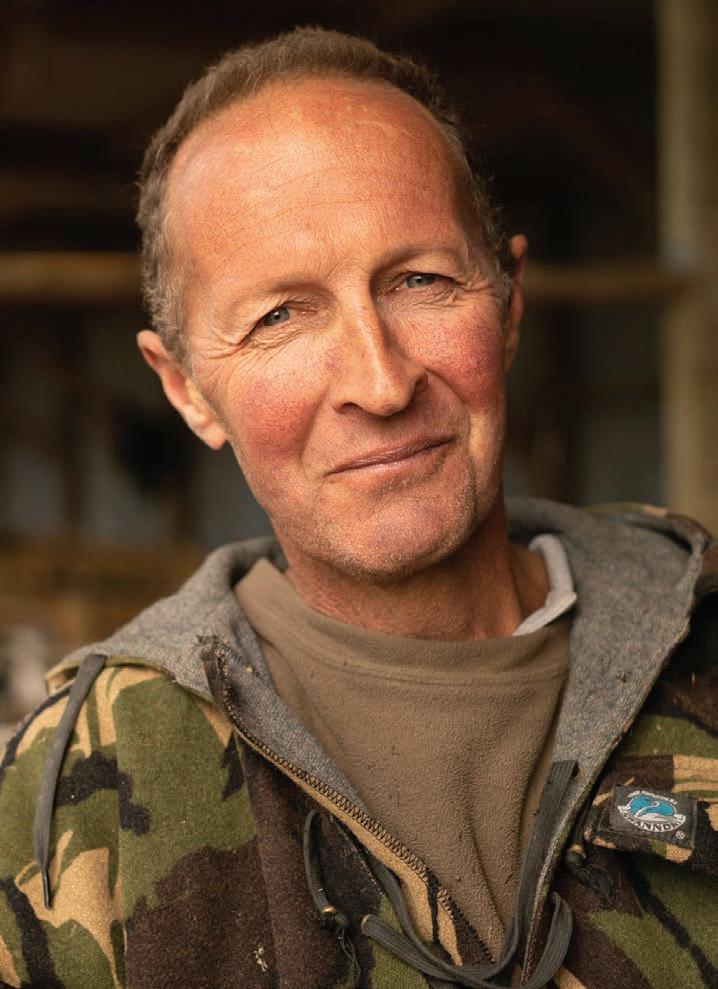
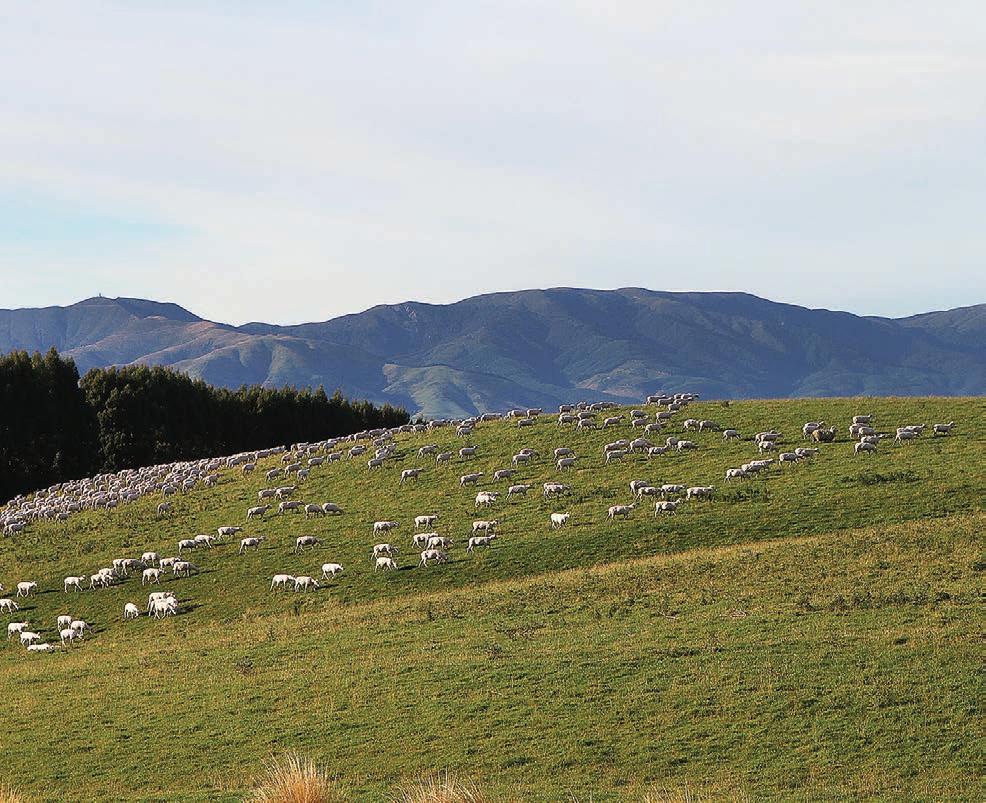
good advocate,” Billings said. He encouraged farmers to have their say.
The Canterbury Regional Council has announced a proposed 24.2% rate increase to support its LTP for 2024-2034.
This proposed increase is part of the council’s draft consultation document, which outlines a $346.3 million work package for the first year, aimed at addressing environmental and community needs.
The council is gearing up for a public consultation period from March 13 to April 14, inviting community feedback on its 10-year work plan and funding strategies.
This will allow residents to express their priorities and concerns regarding the allocation of resources to various services, including environmental regulation and protection, community preparedness and response to hazards, and public transport.
“It’s been a real balance, as we
weigh up the must-do work with affordability,” chair Peter Scott said. He said the proposed rate increase reflects the council’s response to various pressures, including central government policies, community expectations, and environmental challenges.
This is not just about inflation or regulatory changes, but a lot of councils are losing their focus on core responsibilities.Nigel Billings Federated Farmers
“The proposed rates rise reflects the full impact of the pressures regional government is under,” Scott said as he, too, urged ratepayers to engage in discussions.
“We won’t know what tradeoffs you’re prepared to make, or
INTENSIVE: Federated Farmers local government specialist Nigel Billings says farming is landintensive with a lot of land involved, so farmers have huge rate bills.
if you’re comfortable with where we’ve landed, unless you tell us.”
Taranaki Regional Council is proposing a 16.3% rate increase as it calls for the public’s views on key focus areas.
Decisions have to be made on six areas that are crucial to many of the work programmes, including freshwater, biodiversity, predator control and climate change adaptation.
Chair Charlotte Littlewood said the LTP will enable the council to respond to the gathering pace of regulatory reform and funding changes.
“We want as many people as possible to get involved with our community conversation and share their views on the big decisions we have to make,” Littlewood said.
Feedback on Taranaki’s draft 2024-2034 LTP will run from March 10 to April 12, 2024.
Several more regional council LTP proposals are expected to land for consultation in the public arena as this month rolls on.



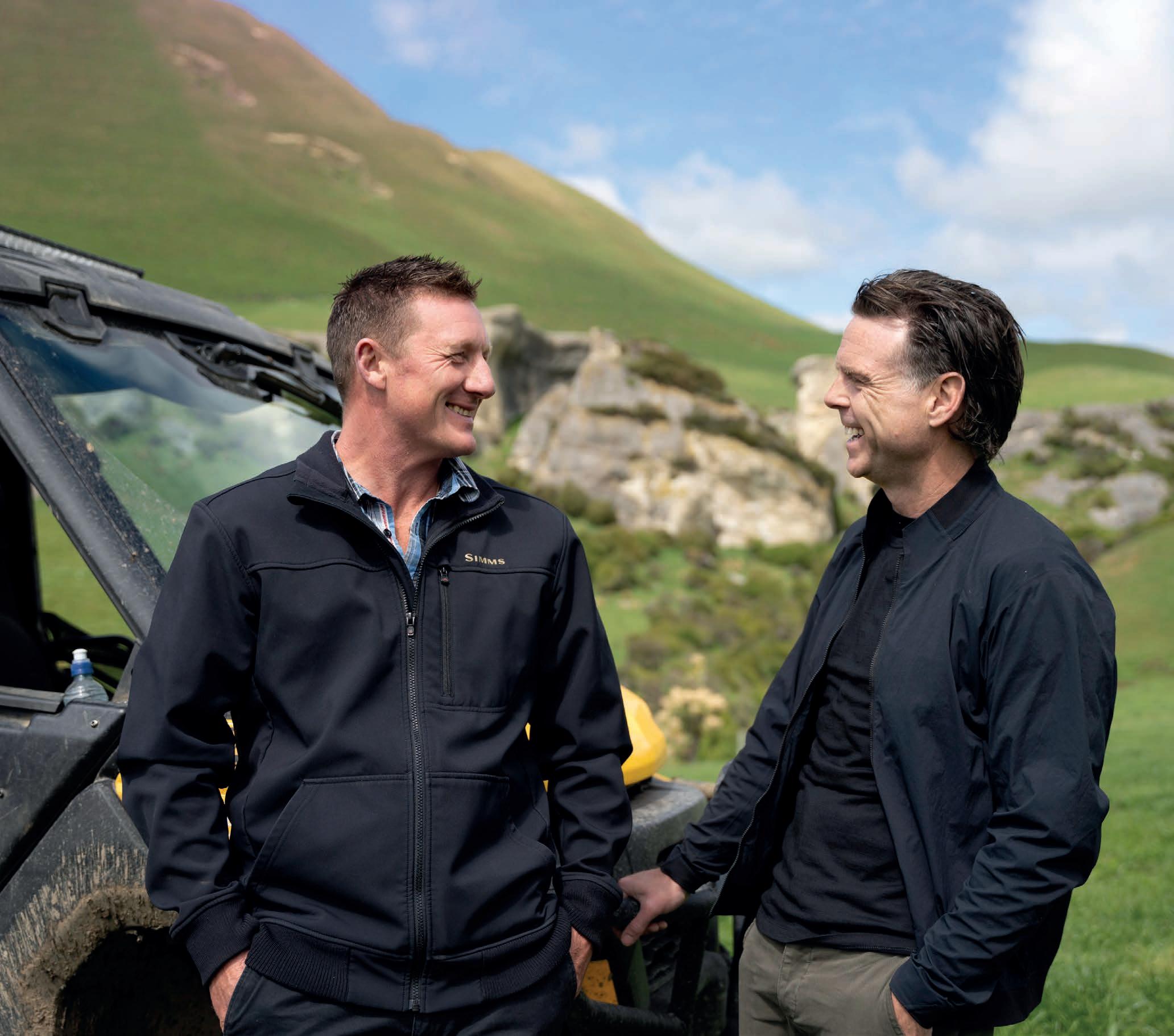
We love sharing the stories of our local food producers, who are not only growing world-class food, but also leading the way in sustainable farming practices. Ian Knowles, who you’ll recognise as a Ballance Farm Environment Awards winner, shares his picturesque Canterbury farm with Ben Bayly in the latest episode of A New Zealand Food Story on TVNZ1. “We’ve gotta leave things in at least the state we found them, if not a better state.” – Ian Knowles.
Scan the QR code to watch the Ian Knowles episode on A New Zealand Food Story.




 Ben Bayly and Ian Knowles
Ben Bayly and Ian Knowles

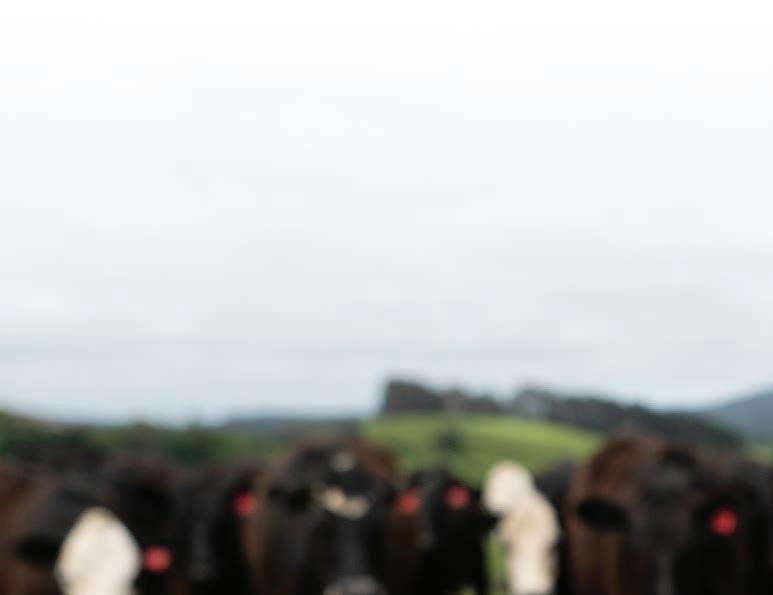

 Annette Scott NEWS Horticulture
Annette Scott NEWS Horticulture
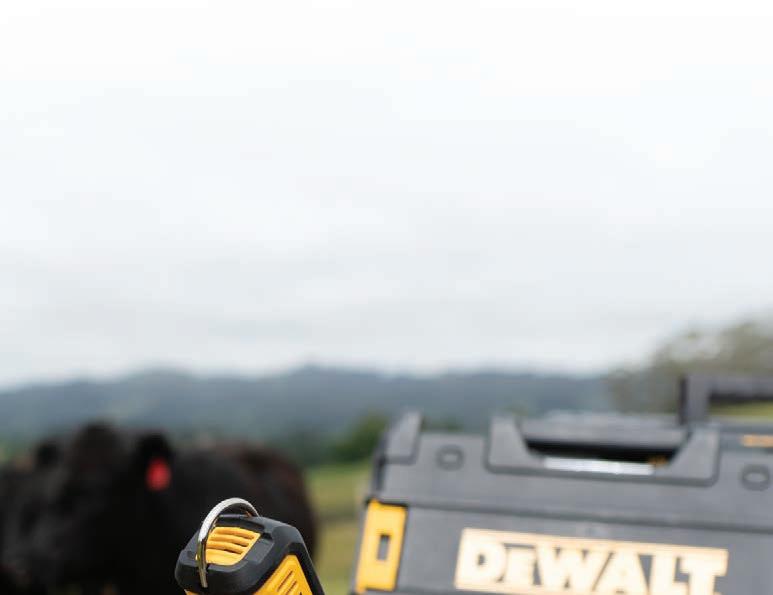



harvest gets underway and produce hits supermarket shelves.
About 97% of New Zealand kūmara are grown in Northland due to its warm and rich soil, but last year’s cyclone battered crops before most could be harvested.
Kūmara are harvested only once a year, between February and June, and placed in cool storage to maintain supply for the rest of the year.
“The cyclone essentially wiped out a huge part of the country’s supply at a crucial time and it’s taken 12 months to be able to build that back up again,” Foodstuffs North Island head of produce and butchery Brigit Corson said.
Growers have faced a tough reality over the past year with hopes now New Zealanders will show their support and make the most of the new season kūmara.
“Many of our customers have told us how they’ve missed having a regular supply of kūmara and we hope they’ll get behind our growers as the season reaches its peak over the coming months and produce is in abundance. That’s when we’ll start to see great value as well.”
Delta Produce, the largest supplier of kūmara for Foodstuffs stores across NZ, reported after the cyclone it lost about 60% of its crop, which either didn’t yield or was rotten.
The early season kūmara is the best shape and taste I’ve ever seen, so we’re hopefully looking at a good season ahead.
“Working for more than 25 years in this industry, I’ve never seen anything like it,” Delta Produce general manager Locky Wilson said.
“We had to scale back our operations just to see us through this last year and some growers were impacted more badly than others, so we concentrated on how we could help see them through to be able to carry on into the future.
“The biggest concern was ensuring all growers had sufficient seed, and thankfully we managed to get there.
“We’ve had huge hopes that this year’s crop would be good and thanks to the warm weather we’ve had, the early season kūmara is the best shape and taste I’ve ever seen, so we’re hopefully looking at a good season ahead.”


Stats NZ latest Food Price Index has reported that many fresh food favourites, like tomatoes and avocados, have decreased in price, some by more than 20%, which comes back to bumper produce supply at the right time of year.
Corson said warmer temperatures are having a direct impact on the seasonality of produce this year, with new season produce like kūmara, apples, and Packham Pears in good supply.
Watermelon and blueberries, also heavily impacted by the cyclone, have had a bumper season due to the warmer weather, with shelf prices also reflecting this.

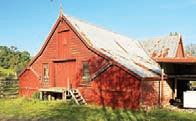







SIn December Farmers Weekly broke the news that a looming threat to New Zealand ag had come to pass: triple drench resistance in cattle was now a clear and present danger to the beef and dairy industries. In this special report, the FW team unpacks what that means for the sector, from revisiting farm systems to heeding the sheep farmers whose experience could o er a solution.
CIENTISTS and vets have added their voices to concerns raised by Massey University parasitologist Dave Leathwick about triple resistance to drench treatments emerging in New Zealand’s cattle population.
Leathwick raised his concerns in Farmers Weekly late last year in “Drench time bomb blows”
(December 11), after his research revealed definitive resistance across all three drench classes in the majority of tests done on four farms where resistance had become clinically evident.
Drench efficacy on some of the sampled farms had dropped to only 40-70% for levamisole, a previously effective treatment against cooperia – only 15 years after levamisole was touted as the most effective means of control against the worm in cattle.
Since releasing his work, Leathwick has continued
to witness resistance issues throughout the summer.
“One farm we visited only the other day had taken a faecal egg count only 10 days post-drenching and it was already up at 650eggs per gram.
“The drench simply had not worked,” he said.
Dr Ian Scott, Massey University’s senior lecturer in parasitology, shared Leathwick’s surprise that it had taken this long for triple resistance to arrive.
When efficacy drops from 99% to 97% it’s not moving very fast, then it drops to 95% – then it really accelerates.Dr Ian Scott Massey University
He also shared Leathwick’s doubts that a solution will come through another chemical active emerging in the near future.
“People say the current level of
drench use is not sustainable. It would have been if companies had been coming out with a new active every 10 years.”
The most recent releases in New Zealand have been Zoetis’s Startect in 2010, and Novartis’s Zolvix in 2009, both used for sheep.
“We have had no new drenches for over 10 years, but we had seen lots of new companion animal flea treatments on the market,” Scott said.
He believes research into options for pastoral parasite control tipped over around five years ago when companion animals became a higher profit, higher sales area for animal health companies.
There has also been a concentration of animal health companies down to three main ones, limiting the number of participants willing to take a punt on R&D for a new product aimed at the pastoral livestock sector.
But Scott said he had some sympathy for the companies’ reticence about investing.

He pointed to the huge outlay made into Zolvix and Startect as alternative sheep treatment actives, only to receive a merely moderate level of uptake by farmers.
“So, to ask them [companies] to step up and do the same for cattle, that may be unlikely to happen.”
He likened the emerging resistance problem as being a roller coaster.
“When efficacy drops from 99% to 97% it’s not moving very fast, then it drops to 95% – then it really accelerates.
“But we needed to have been aware of it well before then, back at the 99% stage. But it’s hard as a farmer to try to deal with it then, because it’s not a problem and you have other issues to address that are.”
Leathwick has also placed some of the blame on a sales-focused marketing system that has incentivised the sales of certain drench types, driving the wrong purchase decisions.
Like Leathwick, Scott is not
optimistic about the issue being resolved chemically.
Nor is he crossing his fingers for vaccines like the ones that control barber’s pole and lungworm worm, due to complications around how the worms more endemic to NZ livestock function in relation to vaccine antibodies.
“I don’t see it as the end of sheep and cattle farming. The challenge is how can we continue to farm without so much reliance upon drenches?”
He sees concerted efforts to breed livestock more tolerant to parasite loads as a more sustainable pathway.
For farmers already struck with resistance in cattle the way back is a long one, but possible.
“Some evidence suggests it is not irreversible, but it could take many years, and take longer than it did to get to where we are today.”
Want to share your thoughts on this issue? Text us on 027 226 8553 with the keyword DRENCH followed by your comments.
 Neal Wallace TECHNOLOGY
Neal Wallace TECHNOLOGY
GINNY Dodunski concedes that the Wormwise internal parasite project has failed to stem the growth of drench resistance. She intends to rectify that.
Dodunski was appointed manager of the Wormwise programme 18 months ago and said stemming the trend requires innovative ways to provide farmers with advice and guidance.
Wormwise was established as a national worm management strategy in 2005 by Beef + Lamb New Zealand (BLNZ), DairyNZ, Deer Industry NZ, Animal & Plant Health NZ and the NZ Veterinary Association and funded by the Ministry for Primary Industries’ Sustainable Farming Fund.
For 20 years it was known that drench resistance was a looming problem, reinforced by a 2021 review that highlighted the need for changes to livestock and pasture management.
Dodunski said the decision by BLNZ to take over the programme’s day-to-day operations has provided the necessary impetus and coincided with a noticeable surge in farmers seeking information on how to deal with drench resistance.
“People are waking up to the issue of drench resistance. They have the problem or their neighbour does, or they know someone who does.”
She said the issue is a symptom of farming systems being reliant on drench to control parasites.
“It sounds perverse, but we should see drench resistance as an
opportunity to lift farm systems to a new level.
“Drench resistance is not the question. The question is ‘How do I set up my farm system so worms are not a cost to me?’”
There are ample examples of that transition being succesful.
Dodunski said the starting point for farmers is ensuring they’re not running systems that create an environment conducive to worms.
That means offering young stock feed that has as few worm larvae as possible. Keeping condition on breeding stock is also key.
When worms become immune to drench, the effect can seem almost instantaneous. Sometimes farmers will notice that young stock aren’t growing, but not always.
“It’s not like you drench your
lambs in January and a few months later think they’re not growing very well.
“Parasite resistance hits like a wave.”
Drench programmes can be broken up by temporarily using the new – but generally more expensive – novel drench varieties, but Dodunski said this is not a long-term solution.
Seven to 10 days after drenching stock, farmers should sample faeces to determine the status of the parasites.
If there are worm eggs in the faeces, resistance is likely.
Dodunski initially wanted to increase the visibility of Wormwise by visiting farms, but soon realised the scale and cost precluded that.
Instead, information is being distributed through farm
workshops, social media and via a new website.
Further out, Wormwise is planning training programmes for retail and advisory staff that interact with farmers and provide guidance on drench use.
Dodunski is confident the livestock sector can win the battle, especially with the help of new technology such as electronic tracking of individual animals.
Instead of treating animals on a flock or herd basis, in reality only a portion need treatment – and that can be identified through electronic tracking.
“I can see treatment will be individualised in 10 to 15 years.”
Dodunski knows when her role will become superfluous.
“That will be when people stop asking me about drench resistance.
Then I’ll know we have won.”
 Richard Rennie TECHNOLOGY Animal welfare
Richard Rennie TECHNOLOGY Animal welfare
SELF-TAUGHT scientist and respected Romney breeder Gordon Levet says the cattle sector could have something to learn from his work in developing worm-resistant sheep.
With drench companies signalling no likelihood of new actives on the horizon, he maintains it has never been more critical to look within animals’ genetics to respond to chemical resistance to worms.
Levet speaks with the experience in a farming career where decades were spent honing an almost instinctive scientific ability, breeding sheep capable of tolerating high worm loads.
His work started from simple observation, noting how some lambs were significantly less affected by worm challenges than others.
Working with the encouragement of AgResearch’s Dr Tom Watson, Levet started a comprehensive sampling programme monitoring faecal egg counts (FEC) and individual lamb
responses to drench doses.
Over the years, 300-400 ram lambs were tested twice with 1012 sires used, and assessment was also done on ewe lambs.
Noting the average FEC of each sire’s progeny, Levet was greatly encouraged by a five-fold genetic variation between the sons of the best and worst sires.
But the difficulty for cattle is that you need the numbers for testing and identifying the outliers. You would have to get several farms working together.
Gordon Levet Farmer and sheep breederIn the late 1980s his genetic programme for breeding sheep with a level of worm resistance began in earnest.
“In the first 10 years progress was painfully slow, as there were only susceptible sheep, with some slightly more resistant than others,” he said.
His lucky break came in 2000 with a genetic freak in sire 76598. The ram had 22 of his sons

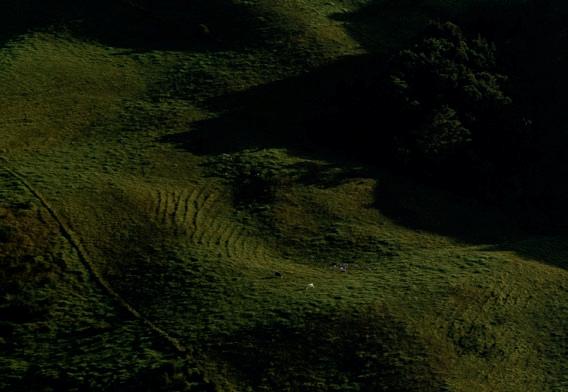
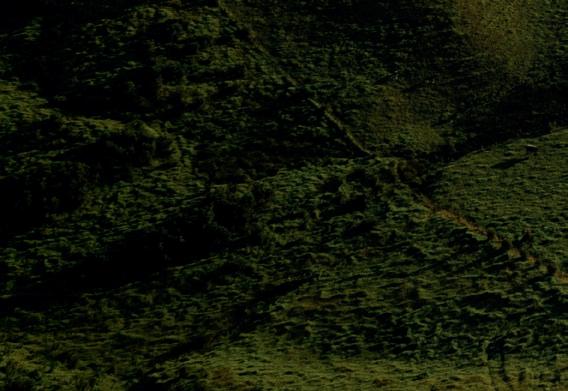
ranked from No 1 to No 22, and none in the bottom 60% of poor performers.
“That one sire with his wide use greatly accelerated progress.”
Levet said breeding focuses on finding the outliers along the bell curve of animal traits, isolating those outliers, and breeding up from them.
Making the big call not to drench between sampling later that decade was also a gamechanger. To Levet’s surprise FEC numbers did not explode, and in fact dropped by week 16 of no drenching.
He opted not to drench lambs after birth, while continuing to drench the tailenders, about 10% of the flock.
From then on, he never drenched the ram lambs, a risky move in an environment with the bloodsucking haemonchus worm present.
His other major breakthrough came not long before he retired.
In 2020 he witnessed a 30-fold drop in FEC counts – something genetics alone could not account for.
He concluded the absence of pneumonia risk that year ensured lambs’ immune systems were more
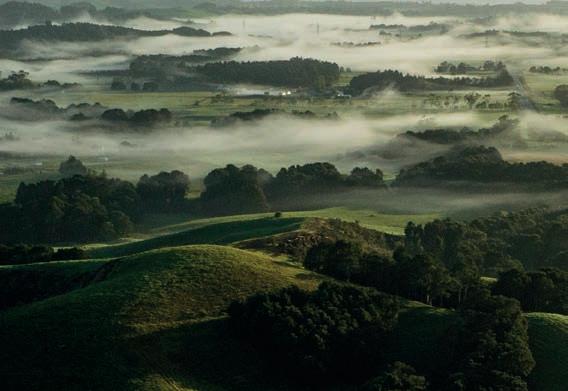

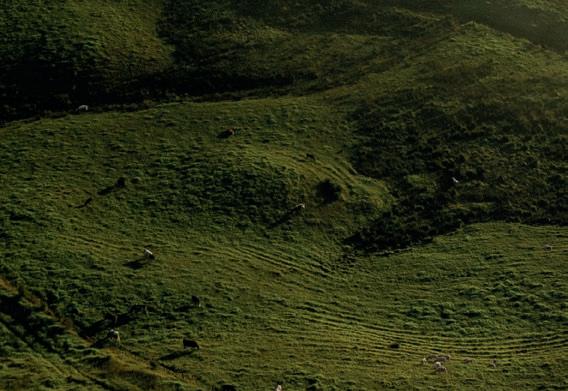
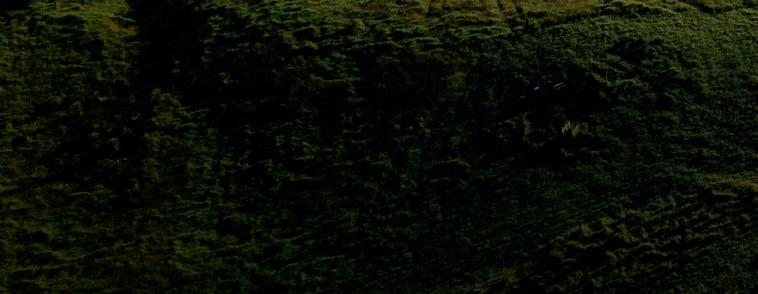

OUTLIERS: Renown Romney breeder Gordon Levet said breeding parasite resistance into cattle would require the same principles as his sheep programme – sampling multiple sires for outlier traits.
capable of handling the worm challenge.
“It illustrated the immense power an enhanced immune system has to control all internal parasites.”
He cites it as a personal high over 34 years of work in the field.
Looking at the cattle sector’s issues with resistance, Levet said the ability of cattle to tolerate a level of worm loading will also prompt a healthy immune system response, as he witnessed in his sheep.
“But the difficulty for cattle is that you need the numbers for testing and identifying the
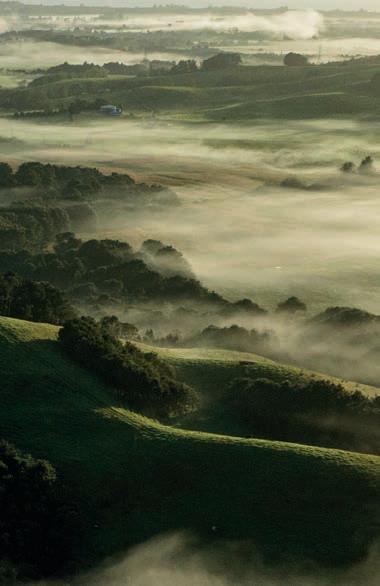
outliers. You would have to get several farms working together.
“I was testing the progeny of 800 rams and had a few lucky breaks. I was totally dedicated. There were a lot of breeders who started out doing this but found no money in it and pulled out.”
Meantime he, like many in the sector, laments the lack of funding into pastoral parasites.
This includes the need to better understand and prove his theory that a level of worm loading in animals is vital to stimulate the immune system in a healthy way, and therefore the animal’s ability to live with them.
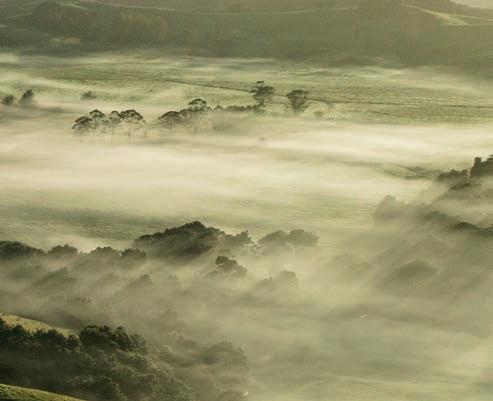
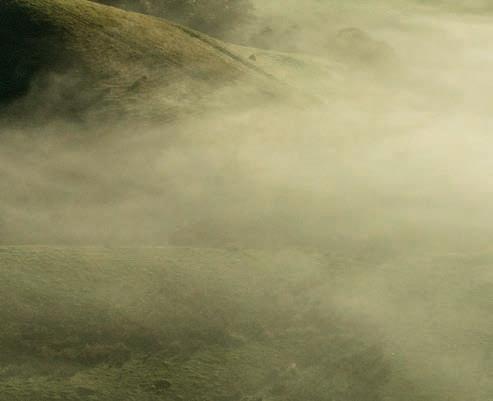
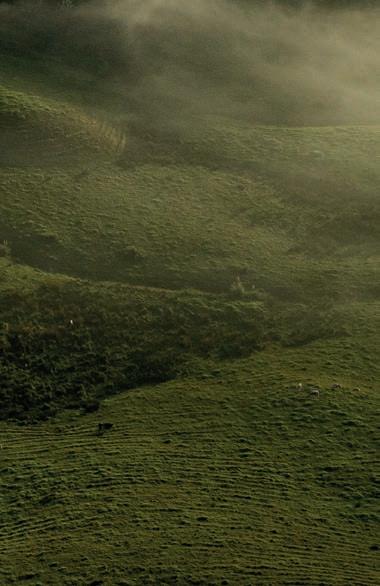

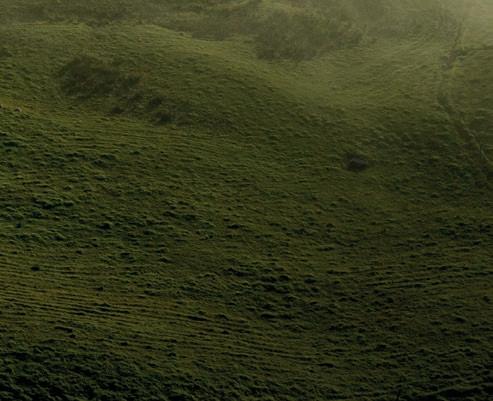

 Richard Rennie TECHNOLOGY Animal welfare
Richard Rennie TECHNOLOGY Animal welfare
HIGH-earning pet treatments are drawing animal health companies’ research away from pastoral parasites, with little likelihood any new drench actives will counter rising resistance in the near future.
Animal health bosses have delivered a uniformly negative response to any hopes farmers may have had for a chemical white knight to stave off resistance.
“There is nothing new on the horizon and unlikely to be. There is research going on, which we are involved in with respect to parasites, but that is across all species,” Paul Fitzpatrick, head of Boehringer Ingelheim Animal Health NZ, said.
There is nothing specific to ruminant parasites, and this reflects a swing that has occurred in the past decade in the global veterinary animal health profit centres.
Almost two-thirds of the market now sits in treatments for companion animals.
Yahoo Finance reports the global companion animal health market is valued at US$22.7 billion (about $37bn) and is experiencing compound annual growth of 10%.
“That is being reflected in the New Zealand landscape, and covid accelerated it,” Fitzpatrick said.
“Meantime the reality is that for dairy, beef, and sheep in NZ, the numbers are going down, not up.”
His view is shared by Elanco’s marketing manager Ben McFarlane.
McFarlane said large multinational animal health companies are less focused on pastoral parasite controls, with the focus going on high-margin pet products.
Both bosses agreed that any new actives are only likely to come incidentally from work in the companion animal market.
Fitzpatrick pointed to Australia, where MSD has just launched the first orally administered lice control treatment, Flexolt, for sheep. Its roots lie in a new novel active fluralaner, developed with the companion animal lice control market in mind.
The strong growth segments in animal health also lie elsewhere, including pain management and natural products.
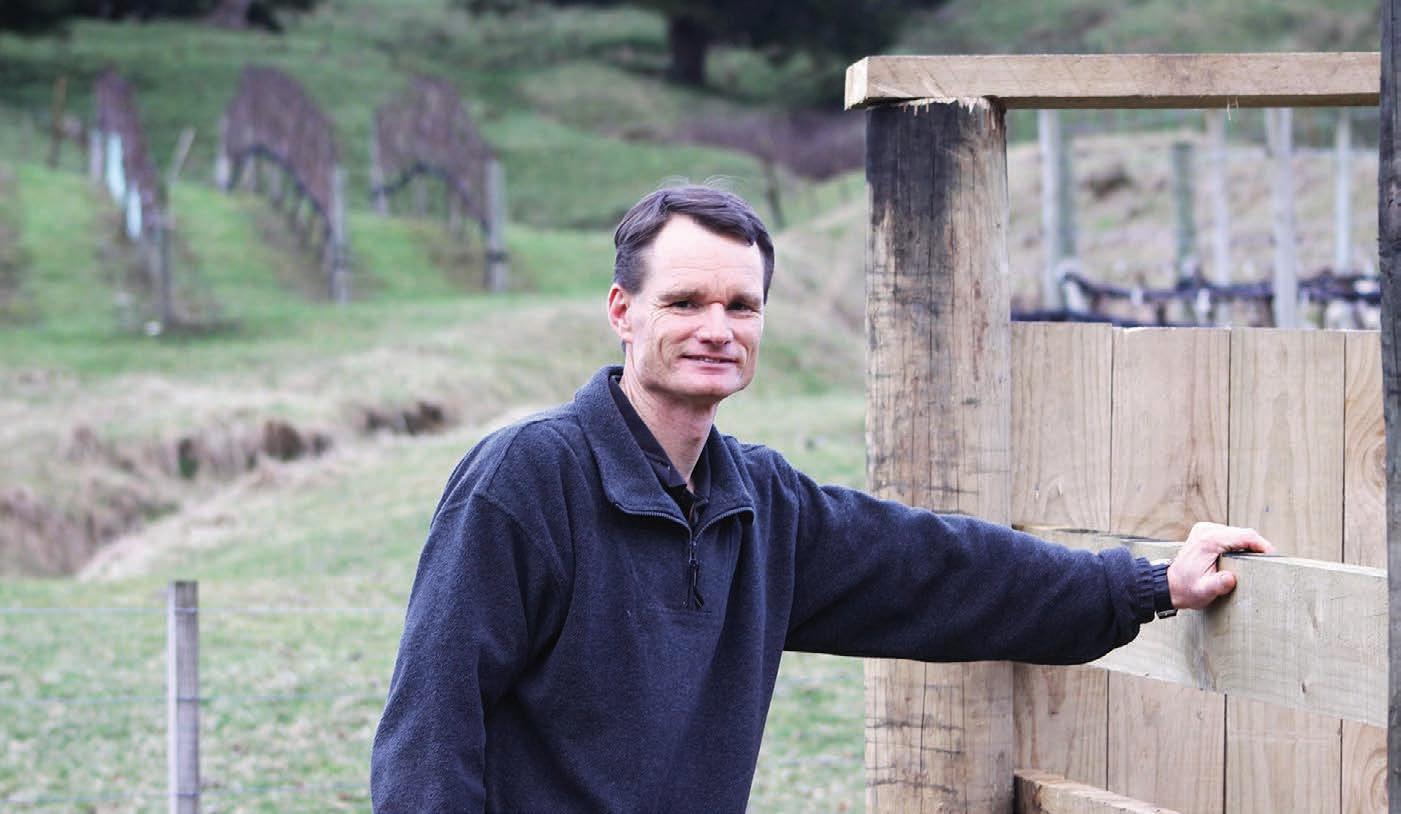
Fitzpatrick is adamant farm management practices running intensively grazed large numbers of single class animals are going to have to change.
“They will have to think of other ways, that includes changes to stock classes, pasture, grazing patterns, the whole system on a farm-by-farm basis, season by season.
“Systems like techno grazing in Hawke’s Bay, that’s something people will have to look at changing going forward.”
Elanco markets Zolvix, a newer active – but it has been constrained by supply shortages this season and the company is
shying away from marketing its cattle drench version until supply improves.
Despite having a new active, McFarlane cautioned there is always a risk the resistance issue now experienced will only be repeated with such new actives, unless farm practices change.
“There is a need for a larger conversation on how farmers can use all drenches more responsibly.”
McFarlane also said there is a challenge in educating vets on drench use.
“They understand the science of it, but to get on top of resistance requires a farm system
conversation, and that is a challenge, getting everyone on the same page.”
He also estimated there are a greater proportion of farmers not faecal egg count (FEC) testing, particularly for cattle parasites.
“My feeling is there is a lot of work focused on getting better diagnostics, but still not enough farmers taking advantage of them.
FEC in cattle is not as accurate as with sheep, but it’s still better than nothing.”
The industry has been accused of using sales incentives to move drench, hastening use of too much drench of the wrong type.
UNSURPRISING:
Zoetis’s vet operations manager Clive Bingham said triple resistance in cattle is no surprise.
overseas, he said New Zealand is proving to be well ahead in its awareness of drench resistance and trying to deal with it.
“The US, for example, is well behind the eight ball and not recognising they even have an issue.”
He said it may be that as these larger countries catch up, multinational drench companies may focus harder on developing new actives that benefit NZ as well.
DOWN ON THE PHARM: Paul Fitzpatrick, Boehringer Ingelheim NZ’s head of animal health, is adamant farm systems will have to change, in some cases signi cantly, in the absence of any new drench actives coming to market.


McFarlane said it would be hard to determine if incentivisation had contributed to use of the wrong brand, or the wrong active on farms.
Zoetis’s vet operations manager Clive Bingham said triple resistance in cattle is no surprise, given cooperia worm has already been resistant to the macrocyclic actives for a long time.
He cautioned that work by Massey University parasitologist Dave Leathwick identifying cattle triple resistance was based on only four farms, but agreed intensive “techno” and heifer grazing systems are highly vulnerable.
My feeling is there is a lot of work focused on getting better diagnostics, but still not enough farmers taking advantage of them.
Ben McFarlane ElancoMeantime Zoetis is stepping away from the traditional incentivised drench purchase model with its new Change it Up campaign due for launch.
“It is about starting a conversation with vets and farmers.
The ultimate resource for sustainable parasite management in NZ livestock




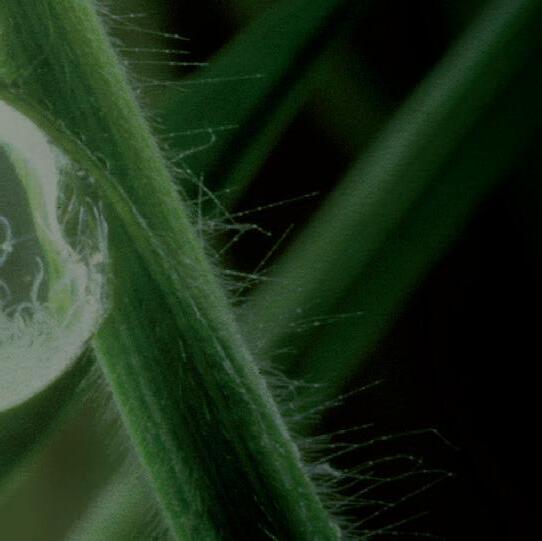

“However it can be hard to get farmers to change their systems, it has to be something drastic to prompt that after they have invested in that particular system.”
After observing farm systems

“It is that it’s not all about drenching – that there are four key areas to focus on for parasite control: these are refugia, nutrition, pasture contamination and having an effective drench programme.”


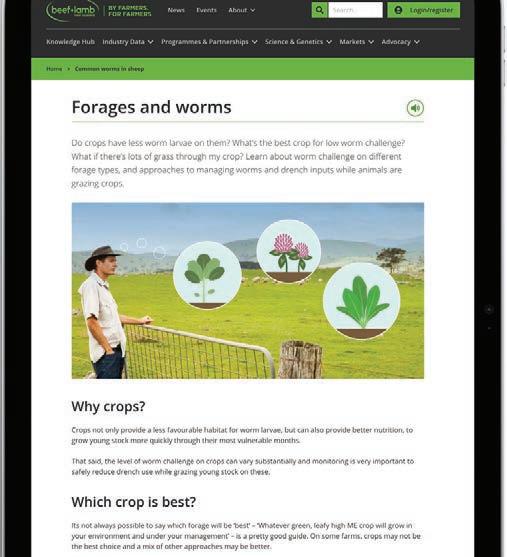
 Richard Rennie TECHNOLOGY Animal welfare
Richard Rennie TECHNOLOGY Animal welfare
AS CATTLE and dairy farmers grapple with emerging triple drench resistance, a North Canterbury vet believes there are valuable lessons they can learn from sheep farmers already living with the problem.
Sarah Williams of North Canterbury Vet Clinics has not seen a great deal of triple resistance in the region’s cattle and dairy farms, but suspects this may be because far fewer operators are looking for the problem, or are even aware of it.
The Wormwise regional facilitator describes many of her dairy clients in the Amuri district as “blissfully unaware” of their drench’s effectiveness, and the problems resistance can bring upon them. At the least, she encourages more to do post-drench faecal egg count (FEC) checks 12-14 days after administering a drench to give an approximate indication if the drench they are using has been effective.
“If suspicions arise from these results, this could then prompt you to do a full FEC reduction test (FERCT), which is a lot more comprehensive and informative,” Williams said.

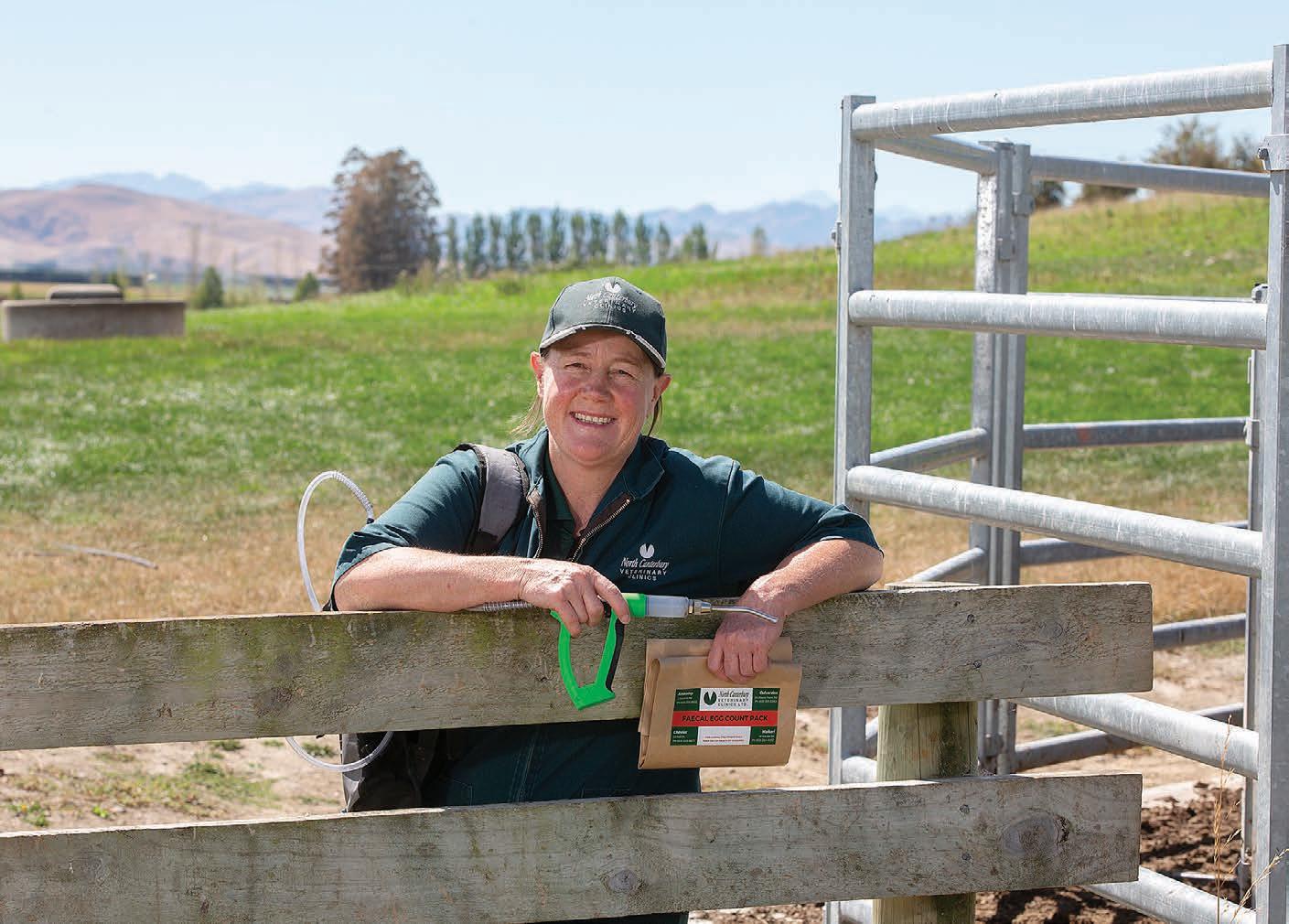
Doing a FECRT involves taking FECs prior to drenching, then drenching at very precise doses to match liveweight to different drench types, and sampling
afterwards to determine what parasite types remain. Drench efficacy can then be calculated. “It would be a whole lot better if we could just get more people looking and checking with their vets to investigate.”
Lessons from sheep farmers’ experience with triple resistance include getting the basics right.
“Choosing an effective drench, something a basic postdrench check can help you do, using drenches correctly, drenching to the heaviest animal in the mob, ensuring you check your drench gun is working well, and calibrating it to deliver the correct dose.
“Then working with your vet, discussing what farm practices you are doing in your programme, including weighing your mob, calibrating your drench gun.”
and could be done using crops, different grazing rotations, reducing the monoculture of cattle by mixing livestock types.
As tough as triple resistance in sheep has been, Williams said she did not know of any farmers who stopped farming because of it.
“None have walked away, but it is challenging. It requires more planning and thinking about your farm system in depth, rather than just reaching for the drench gun.”
She said farmers who have the problem are “doing okay” and have been a lot more proactive than their cattle/dairy counterparts.
It would be a whole lot better if we could just get more people looking and checking with their vets to investigate.Sarah Williams North Canterbury Vet Clinics
In Tararua district, Totally Vets director Rachael Fouhy has also had lengthy experience dealing with resistance in sheep.
She said the region’s soils do not lend themselves well to intensive cattle systems.
“But I bet there would be some less-than-ideal results on some of our dairy runoffs. Dairy farmers are not so receptive to looking at this problem,” Fouhy said. She said many drystock farmers in the region run integrated farm systems to reduce larval loadings on pastures throughout the season.
BLISSED OUT: North Canterbury vet Sarah Williams said she feared many of her dairy farming clients were blissfully unaware of drench e ectiveness, and resistance implications.
no thought given to the worm populations they engender.
Simple changes can make big differences, such as getting young stock off earlier.
She agreed with Ben McFarlane of Elanco who suggested vets need a greater understanding of farm systems to give farmers practical advice to avoid resistance.
“People generally understand dairy systems. They are often a lot simpler than drystock that have multiple animals and multiple ages, and with farmers who do not engage as much with vets.”
She said every farm drystock system differs, and avoiding resistance has to be tailored.
“It’s more like having a barbecue compared to making a cake – it very much depends upon the farm itself.”
John Meban of Eastland Vets in Gisborne has also dealt with triple resistance in clients’ flocks for years.
He has clients with dedicated beef areas on their farms likely to be hit harder by cattle resistance than more extensive, mixed species farm types.
He likens his main advice of “right drench, right time, right place” to another catch cry on the coast – “right tree, right place.”
“And monitoring is critical. FEC monitoring is not as easy as it is for sheep but at least do postdrench FEC checks.”
He said it has been difficult enough to get farmers on board for sheep monitoring, even when the clinic subsidised the tests.
“It is like a boil, it has come to a head. I think the loss of [long-acting] capsules has been beneficial in changing mindsets and seeking better options.”


Larval challenges also need to be reduced
“It could be even on the flattest country where lambs are usually run that you must run adult sheep and cattle over it once a year.”
She described techno cell systems and heifer grazing blocks as “worm factories”, with often
He believes better nutrition will also ensure greater tolerance to worm loadings.
“And genetics is probably an area that has been forgotten about.”
 Gerald Piddock TECHNOLOGY Animal health
Gerald Piddock TECHNOLOGY Animal health
FARMING drench-free is one of the biggest challenges at Pāmu’s organic dairy farm operation in central North Island.
Switching to this form of farming meant restrictions on what it could use to maintain animal health on its 11 certified farms at Wairākei near Taupō and at Moutoa in the lower North Island.
“That was a really scary one for us,” Pāmu dairy farm business manager organics Cleo Te Kiri said at an open day at Earnslaw, its combined dairy farm and support block north of Taupō.
“Obviously we had utilised antiobiotics, dry cow therapy and drench in our conventional world and going to organic, those tools are completely gone from the toolkit or heavily restricted,” Te Kiri said.
Phasing those out was a massive learning curve and a challenge, she said.
There are very heavy restrictions around when they can drench their young stock.

All inputs going into the farm have to be approved, including the drench.
“Typically for a drench, the animal can have it only once per year for the ones that we are using, and we are really conscious of when we pull that trigger, if we pull it at all.
We are really conscious of when we pull that trigger, if we pull it at all.
“We barely ever drench our young stock with conventional drench and the conventional drench that we can use is a very restricted one.”
That drench is MoxiPor.
They use a digestive drench that she describes as “a potion of herbal remedies” from Homeopathic Farm Support.
Many of Pāmu’s staff come from conventional operations, where there is a programmed time for when young stock are drenched.
Te Kiri said the young stock
perform exceptionally well and are comparable to their peers on Pāmu’s conventionally run farms, if not better.
Pāmu’s organic stock manager, Jo Triggs, is a recent addition to the organic operation, having worked on the state-owned farmer’s conventional farms for 20 years, caring for its younger stock on its 1000 hectare organic runoff operation.
The block has 342 heifers and 190 heifer calves.
Triggs said she was very skeptical about coming to a farm that does not drench.
“I felt sure they had to have a secret drench that they use but I can assure you they don’t.”
Shifting to the organic farm excited Triggs, but also made her nervous.
“For the last 20 years I’ve been drenching young stock every four to six weeks and to come here and find you don’t have to do that, it made me wonder what we were doing for the past 20 years.”
Once the young heifers arrive on the farm, Triggs and her staff monitor the cattle daily for signs of ill-thrift by driving through the mobs and watching for any that do not follow. If one is by itself in a





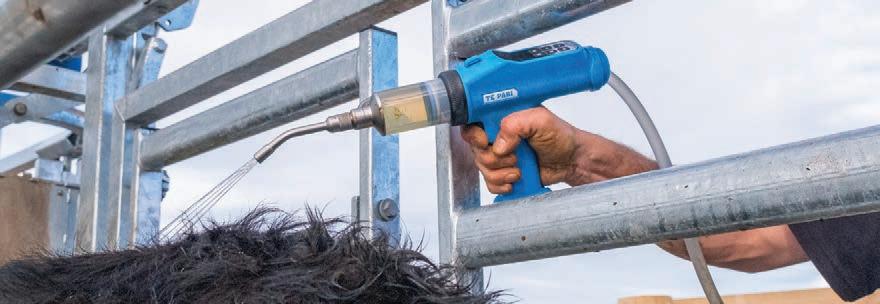


paddock corner, they investigate. If it needs to be pulled away from the mob, it is placed in a quarantine paddock where it is monitored further and a vet is called if required.
Crushed maize is used if the calves fall behind their growth targets or if weather conditions are harsh enough to cause pasture quality to drop.
Triggs weighs the cattle every five to six weeks, at which point they receive the digestive drench.
Any cattle that have a low weight gain relative to the mob are separated and monitored.
They also keep their pasture residuals longer than a conventional farm, at no shorter than 1800kg DM.
The death rate of stock is low at 2%, something that surprised Triggs, who assumed it would be higher given that it is an organic farm.
The in-calf rate for the heifers was 95.6% last season, she said.

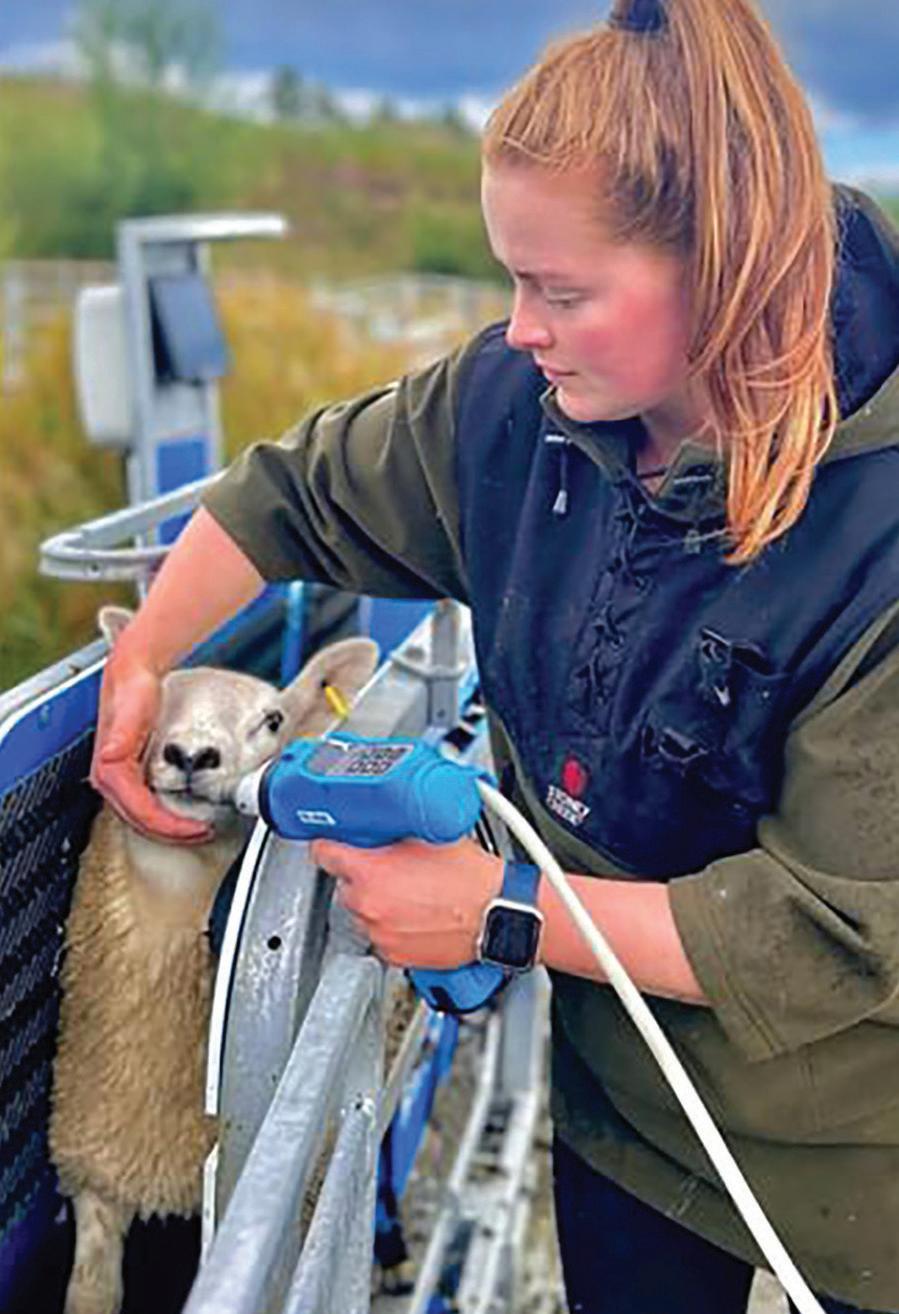











 TCraig Page Deputy editor
TCraig Page Deputy editor
HE drench resistance “time bomb” is ticking for New Zealand’s beef and dairy industry. The question is, who is prepared to help defuse it?
In December last year Massey University parasitologist Dave Leathwick and colleagues released a research paper that identified triple resistance in cattle on four farms that were part of their study.
Drench effectiveness on some of those farms had dropped to be only 40-70% for levamisole, a previously effective treatment against cooperia.
Fifteen years earlier, levamisole was touted as the most effective means of control against the worm in cattle.
The news shocked many, but Leathwick admitted the only real surprise was that triple drench resistance had taken so long to surface.
In this week’s edition of Farmers Weekly we dig deeper into the issue of drench
resistance, and how it might be addressed.
Industry experts are adamant there is still time to avoid a potential disaster, provided farmers are prepared to act now. They must learn from the sheep industry, which has already suffered the consequences of drench resistance at a significant financial cost.
Since releasing his work, Leathwick has seen more resistance issues.
“One farm we visited only the other day had taken a faecal egg count only 10 days post-drenching and it was already up at 650 eggs per gram. The drench simply had not worked,” he said
It is telling that those behind Wormwise, a national worm management strategy established in 2005, concede the programme has failed to stop the growth of drench resistance.
Wormwise was set up by Beef + Lamb New Zealand, DairyNZ, Deer Industry NZ, Animal & Plant Health NZ and the NZ Veterinary Association and funded by the Ministry for Primary Industries’ Sustainable Farming Fund.
Wormwise manager Ginny Dodunski said for 20 years it was known drench resistance was a looming problem. That was reinforced by a 2021 review.
The bottom line is farming systems relying too heavily on drench to control parasites. Rather than lament its arrival, Dodunski sees the drench crisis as chance for farmers to address and reinvent their farming systems to offer more natural protection from parasites.
“Drench resistance is not the question. The question is ‘How do I set up my farm system so worms are not a cost to me?’” she said.
All those spoken to during our series are adamant farmers need to do more to help themselves rather than just relying on drench to solve their problems.
Gerard Pain
Hinerua, Central Hawke’s Bay
IN BEN Anderson’s Eating the Elephant column “Water’s transformative power” (February 26), he suggests in-river dams might be the answer to all our prayers.
But he overlooks the fact that they are extremely damaging to ecosystems.
With most east coast rivers, they will fill up with shingle fairly quickly, they never come in on budget (for example, Waimea Dam near Nelson), irrigators have to pay for a set amount of water even in wet summers like we have had here in Central Hawke’s Bay (until recently at least), the resulting intensive agriculture ends up polluting waterways even more than they already are, and the water level in an industrial reservoir goes up and down leaving bare (and ugly) walls with consequent dust storm slumps.
He does touch on questions like who will pay for them (hopefully not us ratepayers as was the case with the rightfully ditched Ruataniwha Water Storage Scheme), will the water be cheap enough (only if it is heavily subsidised by ratepayers as was the case with the RWSS), and will it just make a small group of landholders wealthier (most likely – unless we have wet summers end on end).
If water storage is the answer then in my opinion it should be off-river and preferably on the farms where it is wanted, rather than destroying an already struggling environment like the upper Makaroro River.
And then there is the “elephant in the room” – namely wiser water use. As I understand it, here in Central Hawke’s Bay there would be enough water in the Ruataniwha Aquifer if it was not used to grow grass in the summertime for cows on formerly shingle riverbed.
Dr Ian Scott, Massey University’s senior lecturer in parasitology, believes research into pastoral parasite control stopped as some animal health companies put their focus into the money-making companion animal markets. The number of companies willing to invest in the research and development of livestock drenches quickly dwindled.
Vets spoken to say cattle farmers can learn plenty from sheep farmers who have already had to deal with the perils of worm resistance. Larval challenges need to be reduced and could be done using crops, different grazing rotations or reducing the monoculture of cattle by mixing livestock types.
It is clear the answers to toppling drench resistance are out there. Farmers need to be ready to take them on board.
The cheapest option for those landholders who want to irrigate therefore would be to club together and buy one of the bigger dairy farms and then convert it into some form of farming that is not so wasteful of aquifer water.
I’m sure the residents of small towns like Ongaonga, Takapau, and Tikokino whose groundwater supplies have been compromised by over-extraction from the aquifer would be happy with that too.

In my view ...
THE relatively steady improvement in Global Dairy Trade prices over recent months will be of some relief to dairy farmers across New Zealand, but staying prepared for potential volatility is critical.
In Rabobank’s recently released annual outlook, it has suggested currents of change will likely run deep for our agriculture industry this year, highlighting China’s economic recovery and geopolitical tensions among key contributing factors.
On dairy specifically, the report states that “current fundamentals provide the perfect ingredients for price volatility to be a key theme in 2024”.
One thing Fonterra is monitoring particularly closely is the disruption to shipping lines in the Red Sea, which began late last year following Houthi attacks in the area.
Last month, major carrier Maersk warned customers that its lengthy detours – most notably going around the Cape of Good Hope – could extend into the second half of this year.
The Suez Canal issues are made worse by the fact that there have been blockages through the Panama Canal due to drought.
What’s important for any exporter in times like these is controlling the controllables and playing to your strengths.
In Fonterra’s case, we can provide reassurance to our farmer owners that we’ll keep getting their milk to market because of the Kotahi joint venture we established with Silver Fern Farms just over a decade ago. We were able to form this logistics company thanks in large part to our scale. With around 95% of our product going overseas, Kotahi helped our co-operative’s supply
We can provide reassurance to our farmer owners that we’ll keep getting their milk to market because of the Kotahi joint venture we established with Silver Fern Farms just over a decade ago.
chain remain resilient through covid and so far it’s proving invaluable again in light of recent events.
We’re also working to provide

farmers security through this period of volatility in other ways. Our scale and optionality enable us to move our farmers’ milk within and around the diverse range of products we make, and the countries in which we operate, to get the best value and therefore maximise the returns we deliver to them.
Last year, this helped us achieve an impressive return on capital of 12.4%, and we’re currently looking at an FY24 forecast earnings range of 50-65 cents per share. The profits Fonterra makes ultimately flow through regional New Zealand, as farmers have shown to spend almost 50 cents of every dollar they earn in their local community.
Our farmgate milk price – from which most other processors in this country set their price – also benefits from our economies of scale and efficient operations. Most recently, we’ve seen increased demand for our product from the Middle East and southeast Asia help to offset reduced demand from China.
Beyond this, we’re always
looking at the tools and solutions we can put in place to help farmers with cash flow or earn more for their milk.
For example, this season’s new advance rate schedule enabled us to get cash to farmers sooner, and we also offer our fixed milk price tool for farmers to give farmers certainty of the price they receive for a portion of their milk, should they want it.
Meanwhile, farmers who achieve our Co-operative Difference framework this season will receive an additional 1-2 cents per kilogram of milk solids supplied, with key customer Nestlé providing the funds for this as one way to recognise farmers who are making continuous improvement with on-farm sustainability.
Looking out past this year, we are excited about the future of the industry and the potential of our co-operative.
Overall demand for dairy continues to grow, with trends towards more Westernised dining, rising incomes and recognition of the nutritional value of dairy
helping to lift consumption.
We aim to grow our share of sustainable NZ milk, and this is helped by the fact that our new flexible shareholding capital structure makes it easier than ever for new farmers to join.
We’re further strengthening the partnerships we’ve built with some of the biggest multinational companies across the globe and continue to innovate alongside them across the Ingredients, Foodservice, and Consumer channels.
We already differentiate ourselves with our reputation for lower-emissions, safe and high-quality dairy, and we see the potential to derive further value by meeting the evolving sustainability needs of our customers.
But probably our most important point of difference –and the thing that motivates me the most to ensure we continue making progress – is that we are a co-operative.
Our heritage is based on the foresight of Kiwi dairy farmers who knew they were stronger together. This is hugely important, particularly if you look at the struggles that dairy farmers have faced in some countries where there isn’t a strong co-operative like ours.
We want to be here for generations to come, riding the different waves of change that come and go and providing our farmers with the security that helps them get on with doing what they do best.
It’s perhaps best summed up by one of our farmers from Waka Dairies in Dannevirke, Michael Phillips: “We currently have a competitive edge because of what we do on farm and because of what Fonterra does above and beyond that.”
Alison Dewes
Dewes is a fourth-generation dairy farmer and a second-generation veterinarian. She is the owner director of the Tipu Whenua environmental planning and support consultancy.
THIS month, catchment and farming leaders from across New Zealand will be participating in a first-of-its-kind agricultural summit in Tauranga to share insights into work being undertaken around the country, and to hear from leaders of change in the field.
Keynote speaker at the Our Choice: Better Farming, Better Business, Better Future summit will be Dr Tanira Kingi, Emeritus Scientist at the Scion Crown Research Institute, and a director of Pāmu. He will outline the scope of the problem we face and why there needs to be change.
The summit has been organised by the Wai Kōkopu catchment project, which I worked on for two and a half years alongside 15 Bay of Plenty farmers, exploring innovative approaches to transition to lower footprint systems.
The initiative, funded through the Ministry for Primary Industries’ Jobs for Nature fund, was part of an ongoing community-led programme to improve the health of the heavily impacted little Waihi Estuary at Pukehina on the Bay of Plenty coast.
In addition to farming in the Bay of Plenty, I am an adviser on sustainable agriculture and have been lucky enough to be working alongside leading farmers willing to share their numbers and their stories of change.
Following the completion of this part of the Wai Kōkopu initiative, I have been reflecting on the obstacles and challenges facing catchment groups and the successes they are achieving for freshwater environments.
I have seen first-hand the urgent need to change faster in our local communities to protect our precious freshwater, but at the same time, there are barriers to change.
Regulation is one lever, but it’s not getting results fast enough.
What works and what doesn’t?
What are the important lessons we can take from the mix of
work I have been involved with in Upper Waikato, Upper Waipa, Waikato Peat Lakes and most recently, coastal Bay of Plenty (Pukehina, Waiotahe and Te Mania Catchments)?
The coastal Bay of Plenty project at Pukehina is just one example of good work being done by catchment groups led by local farmers.
To cite just some of its outcomes: it resulted in the retirement and restoration of over 230 hectares of land from pasture into natives or exotic forest, and by the end of 2024, will have planted over 250,000 native trees.
A new pan-sector digital farm planning tool was developed, 1200 water samples monitored, and 40 pastoral farmers established their GHG, N Loss and P Loss numbers to assist them with change. This helped demonstrate how leading farmers can reduce contaminant loads while still remaining profitable and resilient.
New Zealand has progressive farmers who are already working well ahead of the curve, with thoughtful and well-planned farm systems and approaches.
Catchment leaders from
around the country are also now working together, with the goal of becoming a strong collective voice on behalf of these progressive farmers.
They’re hoping the new coalition government is aware of the good work that was started with the Jobs for Nature funding in 2020-2021.
There is a clear need to equip more of these visionary and technically competent farmers to feel safe to take a lead in their localities, supported by good science, to empower regional communities to bring everyone onto the same page.
We need to take really decisive, effective steps to recognise and reward farmers for good practice and to inspire and motivate more farmers to get involved.
These are all issues that will be considered at the highly interactive summit this month. Speakers, many of whom are farmers, include agribusiness leaders and practitioners in the fields of aquatic and indigenous ecosystems, forestry, sustainable finance, the dairy industry and veterinary science.
As well as looking at why there needs to be change, we will
look at how that change can be brought about while ensuring farm businesses are resilient. We’ll discuss lower footprint and nature-positive farming, where animals fit into the system, and we’ll also consider the risks of doing nothing.
We’ll be brainstorming alongside our new parliamentarians in working groups, finding ways to inspire and innovate to get everyone on the same page, and sharing ideas on how we develop a positive and hopeful vision for NZ agriculture in 2030.
• The Our Choice: Better Farming, Better Business, Better Future Agri Summit will take place on March 13 at Baypark Stadium Lounge, 9.30am-4.30pm.
Tickets $15 from Eventbrite. https:// www.eventbrite.co.nz/e/our-choicebetter-farming-better-businessbetter-future-tickets-726403080167
 Alan Emerson Semi-retired Wairarapa farmer and businessman: dath.emerson@gmail.com
Alan Emerson Semi-retired Wairarapa farmer and businessman: dath.emerson@gmail.com
IWAS pleased to hear
Federated Farmers President Wayne Langford telling me that Greenpeace is nothing but an anti-farming lobby group.
That it has charity status is anathema.
I’m always astounded by the media coverage Greenpeace receives as the rules that apply to normal organisations seem to go out of the window when Greenpeace emerges from under whatever.
Whereas the media generally questions bald statements from bandwagon jumpers, it seems Greenpeace gets a free ride.
Going to the Greenpeace website was an interesting experience but not one you’d want to take remotely seriously.
For a start it labels Messrs Luxon, Peters and Seymour “climate extremists”. I’m sure they’ve been called many names over the years
but “climate extremists” wouldn’t have been one.
Then, unsurprisingly given its myopic vision, it gets stuck into Fonterra, claiming it is “New Zealand’s biggest climate and river polluter”. It goes on to criticise the mega co-op’s profit having jumped from $583 million to $1.577 billion.
My personal belief is that the entire country should be celebrating Fonterra’s huge increase in profits. We’d be in major strife without it.
As for Fonterra being our “biggest climate and river polluter”, I’d want a second opinion, one that is rational and scientifically based.
Greenpeace posted an article under the headline, “How big agriculture is borrowing big oil’s playbook at the recent (talkfest that was) COP 28”. My reaction to that, in a word, would be “bollocks”.
It is a bodice-ripping document telling us that food systems are “responsible for a third of global GHG emissions”. It adds that “57% of GHGs associated with agricultural production are caused by animal farming”.
I don’t know whether those figures are correct or not and I’m not going to waste time checking them out as they are irrelevant. People need to eat and producing that food will encourage GHGs as most human activities do. What is Greenpeace suggesting? That people stop eating, in the interests of saving the planet of course.
The diatribe concludes with the statement, “Here in Aotearoa, where Fonterra is our biggest polluter of climate, rivers and
drinking water, we must push for stronger government regulation to cut cow numbers and stop synthetic nitrogen fertilizer being used to grow grass”.
You’d hold your breath for that one and there obviously aren’t any fact checkers at Greenpeace HQ. For a start the biggest pollution concern we currently have is all the raw sewage going into the sea from Auckland and Wellington.
I’m totally unaware of any cows in either Queen Street or Lambton Quay.
I’m also unaware of Fonterra’s contribution to the pollution of that drinking water. There must have been cows grazing the main street of Hastings during the campylobacter outbreak.
If we reduce cow numbers and nitrogen fertilizer, we reduce our income. Does Greenpeace want that or are they all supported by private incomes?
They also go rabid on nitrogen pollution with raw emotion ruling the debate. Again, they’d have found a fact checker useful.
It must have also galled Greenpeace to have lost its challenge to the High Court’s ruling on the expansion of the synthetic nitrogen plant at Kapuni.
Mind you, I’m happy that Greenpeace wasted resources with its court losses. It means it can’t use those resources to annoy the farming community.
On the positive side it was great to see Langford with the bit between his teeth over the extravagant Greenpeace claims.
His accusation that “Greenpeace is spreading harmful misinformation that there is a link between nitrates in water

I’m happy that Greenpeace wasted resources with its court losses. It means it can’t use those resources to annoy the farming community.
and colorectal cancer” was on the button.
He said “it is a new low for Greenpeace, who are using misinformation about a human health issue to prey on people’s fear of cancer and to push an antifarming agenda”.
I can’t argue with that. To Langford’s credit, he listed all the highly qualified experts – including the World Health Organisation, Bowel Cancer NZ and the NZ Ministry of Health –who disagree with the Greenpeace rants. I know who I would believe.
What I found really interesting
was an interview with Greenpeace co-founder Dr Patrick Moore on television in the United States.
He told me that our path to net zero is “crazy” and that nuclear energy is “the only technology that can replace fossil fuel”. He added that relying on solar and wind ahead of nuclear power is “absolutely insane”.
I agree with him.
I’m really pleased that the Feds are calling the fringe lobby group known as Greenpeace to account.
I agree with the Langford suggestion that “Greenpeace gets back to saving whales”.
We just need to convince them that saving whales would encourage far more donations than slagging farmers with emotive garbage.
Now there’s a thought.
I’d also back a campaign to have Greenpeace’s charitable status removed. The government promised it during the election campaign – let’s see it happen.

THE market outlook for red meat in 2024 appears only slightly better than it was in 2023, which will make discouraging reading for sheep and beef farmers hit by lower returns and higher costs.
As noted by Meat Industry Association CEO Sirma Karapeeva in last month’s media release on meat industry exports for last
year, these are a “barometer of the global economy”. This means there is unlikely to be a significant improvement until consumers across the world become more confident of a lift in their standard of living and security of employment.
The meat industry does extremely well in finding alternative market destinations for all the products New Zealand produces, but it is always to a great extent at the mercy of what world markets are prepared or able to pay for those products.
Last year’s sales value of $10.2 billion was 11% below the previous year’s record, although the actual tonnage exported was higher for both beef and sheepmeat. This proves consumers are still keen to buy NZ’s beef and sheepmeat, but not to pay more than they can afford.
The other important constituent of our exports is the “fifth quarter”, which comprises edible offals, casings, tripe, hides and skins, petfood, meat and bone meal, tallow, and blood products for
pharmaceuticals. All these must be saved and processed for sale at a price that does not exceed the recovery cost.
Coincidentally the export value of all these byproducts of the red meat processing sector is approximately one-fifth of the total. Without the fifth quarter, New Zealand red meat returns would be 20% lower than they are.
The best prospect for performance improvement is the United States economy, which is finally showing distinct signs of growth.
The year-on-year value drop was equivalent to more than a billion dollars off meat companies’ revenues, which was reflected in lower payments to farmers.
Alliance’s published pre-tax loss of $97.9 million for the year ended September was a stark reminder of the susceptibility of company profitability to
market conditions, even if costs, including payments to farmers for livestock procurement, are strictly controlled.
Alliance’s result is unlikely to be the only sign of red ink among meat companies for last year, although both Silver Fern Farms and ANZCO are yet to declare their 2023 calendar year results.
The best prospect for performance improvement is the United States economy, which is finally showing distinct signs of growth, coupled with a decline in beef production following heavy slaughter rates as a result of drought in 2022 in some regions.
Last year the US took the same amount of New Zealand beef exports by value as China, a dramatic turnaround from the previous year, although China remained the biggest market by tonnage. This trend has continued into 2024 with exports to the US increasing 12% by value on January 2023, while the value of beef exports to China was 19% lower.
The China trend reflects difficult
economic conditions there leading to a loss of confidence and spending power on the part of Chinese consumers, as well as a high level of competition from exporters like Brazil and Australia.
As reported recently, the hoped-for lift in sales for Chinese New Year does not seem to have happened and this does not bode well for the current year.
This pattern is even more pronounced in sheepmeat, for which China continues to import well over half NZ’s exports. In 2023 it took 56% of NZ exports by volume, which was 10% more than the year before, although the value was 10% lower, effectively a 20% drop in the average price received. This change may unfortunately turn out to be longer lasting because of serious competition from Australia which, following flock rebuilding, not only has higher quantities of lamb and mutton to sell, but also from the beginning of 2023 a zero tariff on sheepmeat exports to China.
Continued page 21
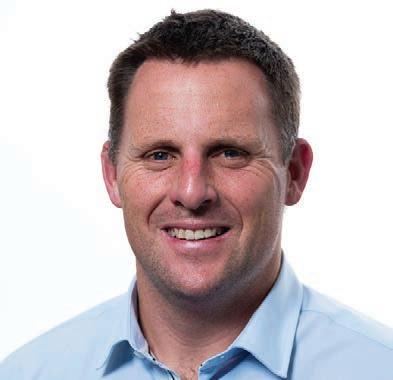
Phil Weir
Phil Weir is a Waikato sheep and beef farmer and AgFirst agribusiness consultant. eating.the.elephant.nz@gmail.com
In this series, the lads discuss levers.
IBOUGHT a new shirt last week, one with a well-known swoosh across the front and the popular slogan “Just do it”. Showing it to wife Megan, I was asked which word of the famous slogan is the most important. My take on the lever of what will best move New Zealand agriculture
Continued page 20
Australia’s free trade agreement with the United Kingdom is also likely to have a negative impact on NZ’s lamb exports to that market, where our lamb has long enjoyed a prime position.
However, the UK is no longer anything like as crucial to the fortunes of our red meat sector as it used to be, though it remains our second largest market by tonnage.
Last year the value of UK exports fell below $300m, well behind the US at $544m and China at $1.4bn.
These figures put China’s importance into perspective and indicate why the downturn in that market has had such a disproportionate effect on the whole red meat sector, but most critically sheepmeat. All the other markets, essential as they are to overall value, are supplementary to China.
For beef, NZ is fortunate to have two main importers – the US and China – which provide the pricing
forward is to Just. Do. It.
Let’s start with “Just”.
Being in my forties, I am part of the maligned generation of softies mocked by the Boomers as the Participation Generation. We received medals or certificates just for turning up.
As a prop forward coming 83rd in the school road race, I got a certificate. I also got one for a year’s hockey and tennis. As a parent now, I do not scoff at participation certificates or medals, I encourage them.
These incentives seem barely enough. In our world with similar school rolls, finding the numbers to make the cricket, rugby or hockey teams work is increasingly difficult.
Physically participating is difficult, you must sacrifice. Heck, technology probably allows you to dial in or “play” the same game on the PlayStation to a higher standard.
However, not participating physically is a missed opportunity to connect, to build friendships and business relationships, create community cohesion and have fun.
Apathy has always existed in parts of our communities to local council or levy elections (I know as a candidate). Maybe the
tension missing in sheepmeat.
Apart from these two buyers the remaining importing countries follow a similar pattern, with Japan, Canada, Taiwan and Korea all taking substantial but not game-changing amounts of product.
There is no doubt NZ’s farmers and exporters do a magnificent job of maximising the returns from our red meat production, producing and selling a massive range of cuts and co-products to a diverse set of markets.
The gains to be made from trade negotiations in an increasingly protective world are fewer and smaller than they were, with the remaining big prizes like FTAs with India, the US and the Gulf States still looking frustratingly out of reach, despite optimistic statements from the new trade minister.
The best hope for 2024 is a recovering global economy and the avoidance of greater geopolitical unrest.
first part of a lever to improved sector outcomes is to continue to participate, to not think and therefore possibly hesitate, but to show up regardless of whether you run first or 83rd.
And now on to “Do”.
The new shirt was bought to support an inconsistent habit of physical exercise, an important part of my life.
Exercise is important, not because it results in a summer Speedo body or the completion of an ironman, but because it allows me to play more fully with my children, for my brain to work better, to not be an arsehole and hopefully results in a few more laps around the sun.
Visiting a local gym, I see people there for a range of reasons.
Training methods vary from weights to bikes to leaning on the wall for a chat.
Farming, like the gym, is about turning up consistently without excuse and getting it done. The goals and the methods will vary significantly because, like every person, every farm and farm business is different. But what is observable at the gym is that regardless of training method, the results come from the discipline of repeat performance.
Whether the end game is a number on the scales, a time run, or a weight lifted, the winning result comes from the act of DOING the work.
Finally, the word “It”.
My family have been playing the infinite farming game of battling Californian thistles for years.
Anyone who has had a go at taming thistles knows they are a real prick.
As a parent now, I do not scoff at participation certificates or medals, I encourage them.
The formula is simple: you need to persistently top, chip, spray, slash and bash these suckers multiple times a season.
The assault needs to occur when the plant is at a certain stage, but in waging war, you need to also hit them when they are down. If they get away, hit them harder. Just hammer the buggers.
What you also find is that if you miss a few, winter comes and Californian thistle dormancy creates complacency. The pest disappears – only to return the following year.

Some might say you are foolish to worry about Callies and that doing the same thing again and again with the same result is insanity.
Not for us and our farming business. We have a goal about how we want the farm to look and produce and IT does not include a summer of Californian thistles.
By having a documented goal, the work has a purpose or a why, it is not forgotten or neglected, and year on year the thistle patches get smaller and smaller.
Farming is hard, but we often achieve the most when we focus most on Just Doing It. Yes, there will always be distractions from the government, the media and forecasters (economic and weather), but we will not be accused of being the Shane Jones neffs on the couch, we will succeed by getting out there and Just Doing It.
Enough from me, there’s thistles to chip.


EVERY morning dairy farmer Sam Waugh sees the Auckland Sky Tower through his window. It’s a great reminder of one of his key life goals – giving young people from towns and cities insights into farm life.
The 31-year-old runs New Zealand Young Farmers’ Donald’s Farm in Whitford, about 30km southeast of Auckland. Last year, the farm hosted 900 primary and secondary school visitors. It aims to build up to 5000 a year.
“It’s awesome showing young people around the farm to learn how milk goes from grass to glass. We’re hoping to attract the next generation of farmers,” Waugh said.
“Most of the students haven’t been on a dairy farm before so it’s great seeing their reaction when they see cows close up and check out the native tree planting we’re doing on the farm.”
Dairy farmer Donald Pearson donated Donald’s Farm to NZ Young Farmers because he wanted to support a strong future for Kiwis in agriculture.
“There are lots of career opportunities including farm assistants, managers, farm owners and rural professionals. There are also great opportunities at industry-good organisations such as DairyNZ, which supports farmers with research, resources and advocacy,” Waugh said.
This year, DairyNZ supported Donald’s Farm’s March 10 open day as part of the national Open Farms initiative, where farms of all types throughout NZ host members of the public to see farming first-hand.
Waugh’s love for agriculture began when he was a high school student in Kimbolton in Manawatū, working on local farms. He knew it was his future so studied for a Bachelor of Commerce and Agriculture at Lincoln University.
While studying, he developed a passion for community
service and got involved in NZ Young Farmers, which he finds tremendously rewarding. The nonprofit organisation connects and empowers young people in rural communities.
Waugh said it’s a lot of fun. “You meet a lot of great people and volunteer for awesome initiatives, giving back to the sector and local communities.”
Over six years, Waugh chaired NZ Young Farmers’ Lincoln Club, then the Christchurch district and Tasman region, as he moved up through the organisation. He then served on the national board for two years, helping give young people a voice in local and national decision-making affecting rural communities.
After working as a farm consultant for four years, Waugh lived in England with his wife Liana for 18 months. Waugh said they had a great time exploring new places and seeing different ways of living and farming.
When they returned to New Zealand in 2020, Waugh jumped at the chance to manage Donald’s Farm – his first management role.
“I get a lot of personal development out of making all the farming decisions and get a real kick out of developing the education programme with the farm’s board of directors.”
Donald’s Farm has 74 hectares and is home to 125 cows, including milking shorthorns – a rare breed on Kiwi dairy farms – and lightbrown Jerseys.
Future plans for the farm include creating an educational centre for children to learn about food, farming and nature, adding to the farm’s role as an outdoor classroom.
“We’re keen to have students come back to the farm multiple times throughout their schooling to develop their knowledge of what it’s like on a farm,” Waugh said. “It’s awesome to see young people grow more confident around the animals and on the farm every time they visit.”

The visits teach children about the whole agriculture sector including dairy, sheep and beef farming, horticulture and forestry.
I get a real kick out of developing the education programme with the farm’s board of directors.
Sam Waugh Donald‘s FarmOne of the programmes offered to schools involves people from more than 35 primary sector organisations showcasing the work that they do, helping to highlight the breadth of opportunities within the sector.
“This encourages students to realise there is so much more to agriculture than they might have realised,” Waugh said.
He is keen to inspire young
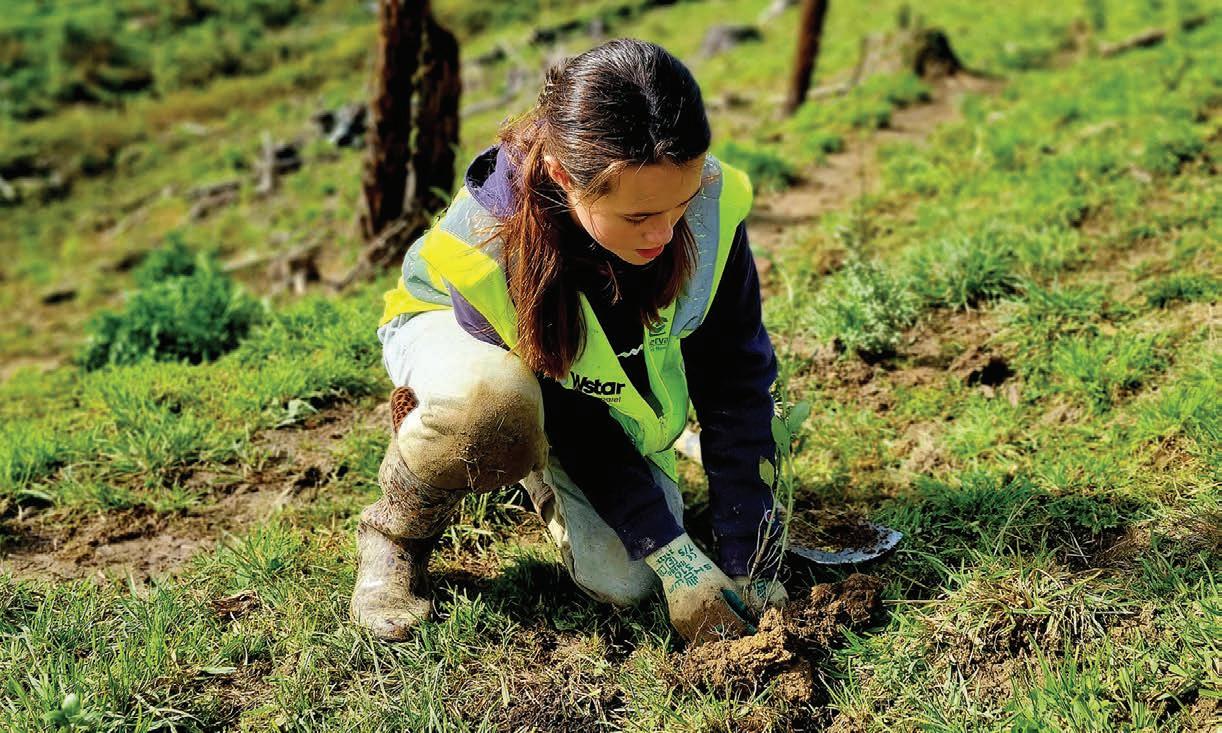
people to get involved in environmental initiatives on farms and in their communities.
“We’re committed to a healthy habitat on Donald’s Farm so native wildlife including birds can thrive,” he says.
“With help from Trees for Survival, Conservation Volunteers NZ, corporates and members of the public, we’ve planted about 20,000 native trees, plants, flax, grasses and sedges. We’re aiming to plant at least 100,000 more over 7.5ha –about 10% of the farm.”
The Trees for Survival Charitable Trust works with schools and communities throughout NZ to grow and plant native trees alongside waterways, on farms and community spaces.
“We’re also working with Conservation Volunteers NZ to establish a native nursery on the farm, to grow 50,000 native plants every year to plant alongside the Papakura Stream.”
Donald’s Farm is also involved with Nature’s Den, an organisation helping Auckland children explore and learn about nature, including on farms and forests.
As part of this, students visit Donald’s Farm once a week to spend time in one of the farm’s native bush blocks and learn about the outdoors.
In November 2023, Waugh and Nature’s Den founder Alex Sherie put on their gumboots and walked around Donald’s Farm for 24 hours to raise money and awareness for the charity I Am Hope.
The charity provides counselling services for young Kiwis. Sam and Alex’s Gumboot Crusade raised $3400.
Waugh is excited for the future, including for his one-year-old son Albie, with so many people learning about nature and giving back to their communities.
When everyone pulls together, the sky’s the limit, he said.
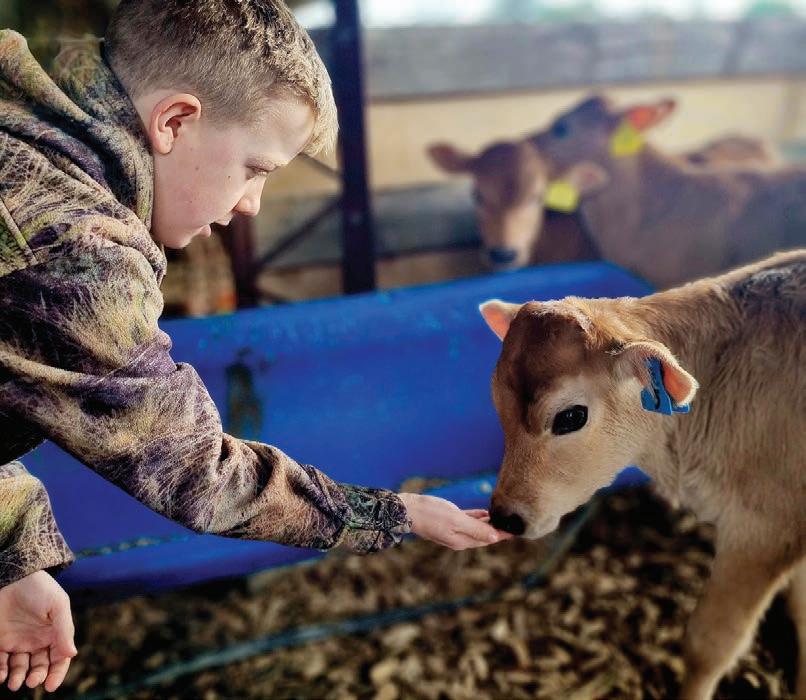
Scion researchers study social and practical aspects of using unmanned aerial vehicles for pest control.
Annette Scott reports.
UNMANNED aerial vehicles are taking off to make pest control more targeted, safer and less invasive.
As climate change increases the risk of invasive pests affecting New Zealand’s multibillion-dollar primary sector, Scion researchers are hopeful the tool will provide a more efficient biosecurity solution.
Scion’s plant protection physics and chemistry team lead Justin Nairn says using unmanned aerial vehicles (UAVs) could be a new tool in the biosecurity toolbox making pest control more targeted, safer and less invasive.
We must be prepared with a number of solutions developed from Western science and mātauranga Māori to ensure we are ahead of the game and move from a reactive to proactive biosecurity system.
Desi Ramoo Better Border BiosecurityUAVs can fly closer to the target than a helicopter, coming within about 2m versus more than 10m, have a smaller footprint and fly more slowly, meaning they can be more precise.
The research comes two years since the discovery of fall armyworm in NZ in February 2022. The moth threatens crops in its larval stage.
Nairn’s initial studies in March
2021 into the general efficiency of spraying using UAVs worked with fluorescent dye to investigate how they performed in aerial spray operations.
In February last year, one year after fall armyworm’s arrival, scientists trialled a key bio-insecticide for combating Lepidoptera moths.
The findings of this trial are still being finalised, but Nairn says using UAVs for pest control is growing quickly as operational limitations such as cost, weight and flight time are reducing in the face of technological advances.
Scion has been involved with pest incursion responses and field research in aerial spray methodology for decades, looking for new, more targeted ways to tackle pest and insect outbreaks.
The invasive pest problem has been highlighted many times over the years, from a sevenyear, $65 million response to the painted apple moth in Auckland in 1999, through to the ongoing battle against fall armyworm and managing myrtle rust.
Scion social scientist Andrea Grant says fast and effective pest control is vital to prevent pest and pathogen establishment.
However, she says, there needs to be a balance between engaging communities ahead of incursion responses and the potential need for fast action.
“If community concerns are not addressed and they have no opportunity to respond to planned operations, they may lose confidence and support for urban biosecurity operations in future.”
In aligned research, Grant ran focus groups looking at social and cultural considerations of UAV spraying.
These groups included social researchers, UAV researchers, Māori involved in forest protection and management, and forestry managers.
Participants identified social issues such as human health, safety and ethics, professionalisation of UAV use, Te Tiriti partnerships, engagement and capability.
Grant and her collaborators also held a co-design workshop where participants noted the role for mātauranga Māori and need to work with Māori alongside key agencies in research, policy, operations and ethical aspects of co-design.
Māori environmental not-forprofit Te Tira Whakamātaki was included in the focus groups.
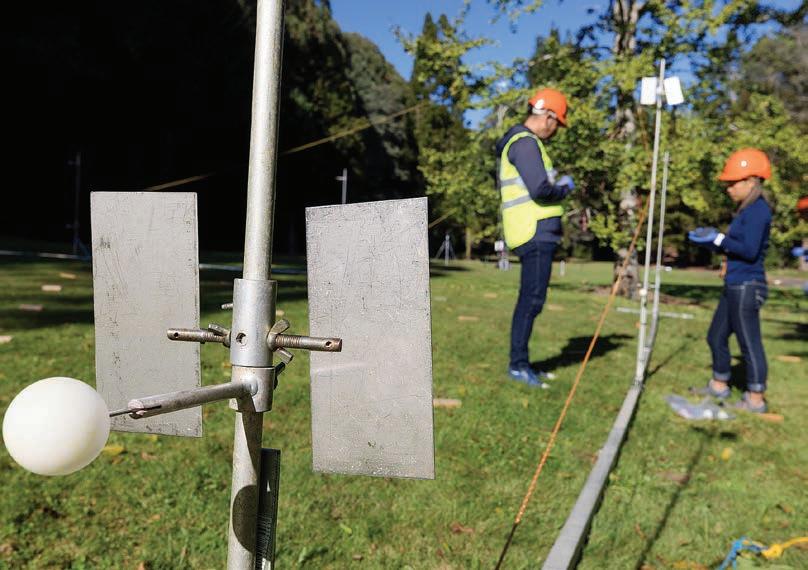
Chief scientist Simon Lambert says much of the Māori economy is in the primary sector and therefore highly reliant on the environment.
“Māori are increasingly aware of the vulnerability of their assets and cultural capital to biosecurity events and are not opposed to technological innovation but insist on early and ongoing engagement,” Lambert says.
Better Border Biosecurity (B3) director Desi Ramoo says Nairn’s research is an example of
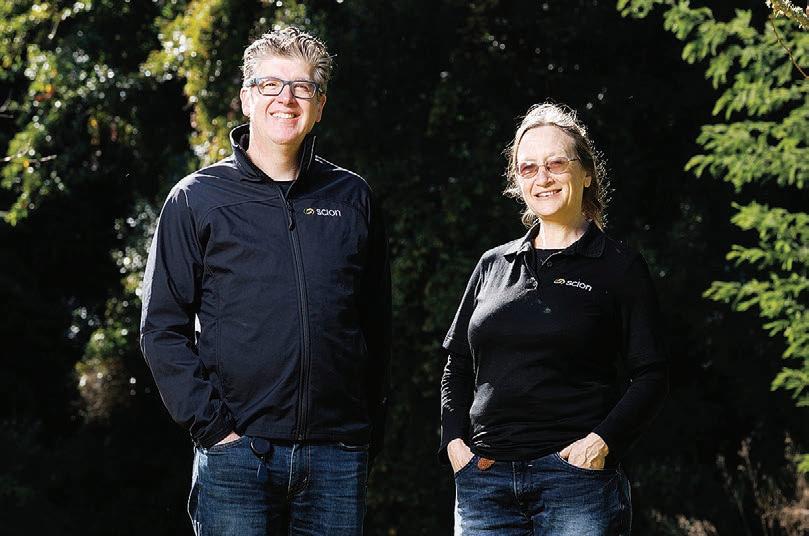
adapting existing technology into an applied biosecurity tool. B3 is a multi-partner joint venture researching ways to reduce entry and establishment of new plant pests and diseases in NZ.
“We must be prepared with a number of solutions developed from Western science and mātauranga Māori to ensure we are ahead of the game and move from a reactive to proactive biosecurity system.”
Forest Owners Association biosecurity manager Brendan Gould says successful intervention relies on the ability to respond, but community impacts and implications need to be considered as part of the process of operational design.
“There is no one tool that will work in every situation.”
Gould says engagement before an incursion is important but challenging when immediate action is needed. Scion’s research allows for pre-engagement to be considered.
Nairn’s research work was part funded by B3 while Grant’s was part funded by Forest Growers Research Trust. Both received Strategic Science Investment funding.
 Neal Wallace TECHNOLOGY Genetics
Neal Wallace TECHNOLOGY Genetics
SCIENTISTS say new fields of research will open following a decision to recategorize null segregants, organisms that are descended from genetically modified organisms but do not contain genetic modifications.
The Environmental Protection Agency (EPA) has accepted an application from AgResearch and 14 other research institutions to recategorize these organisms, which scientists said will enable the development of new and enhanced primary sector products. A null segregant is described as the offspring of a genetically modified plant or animal. It is not genetically modified, does it contain characteristics of being genetically modified and poses no greater risk than a conventionally bred or developed product.
Richard Scott, AgResearch science team leader, said that until now legislation has treated null
segregant organisms as genetically modified organisms (GMOs).
“We had a clear view as researchers that these null segregants were not GMOs, but now we have certainty from the EPA to support this.”
He said this decision will enable researchers to consider opportunities to use null segre-
gants in productive industries in areas such as health, nutrition and wellbeing. This process will accelerate the breeding of productive plant species such as new varieties of New Zealandadapted ryegrass, to make plants produce fruit sooner than would usually occur, or enhanced traits such as disease resistance.

The introduction of a null segregant organism into the environment will still need to be verified case by case by the Ministry for Primary Industries.
Chris Hill, the EPA’s general manager for hazardous substances and new organisms, said this decision brings NZ into line with Australia and the United States and will help NZ scientists keep pace with international researchers.
Plant & Food Research chief scientist Richard Newcomb said perennial plants can take five years to reach maturity and determining if a new variety is commercially viable can take a decade or more.
“Any tools that can be used to speed up this process are highly valuable.”
Jo Putterill, a professor in plant molecular genetics at Auckland University, said breeding plants with desirable traits can take decades.
“The ability to incorporate new breeding technologies into the
toolkit for plant breeding can change the equation.”
AgResearch Emeritus scientist Tony Conner said this decision was long overdue.
“I distinctly remember debating the null segregants issue with government officials prior to the HSNO Act in the mid-1990s.
“There was a lack of understanding of basic genetics and how genes segregate during sexual reproduction to result in null segregants.
“At the time there was no clear example of what value a null segregant might be.”
He said the technology will stimulate new ideas and applications for the improvement of plants and animals, but questions remain.
“While the decision on null segregants is most welcome, a major challenge remains.
“How do you get a null segregant out of containment? What burden of proof will be required for a null segregant to be declared not genetically modified?”
 TRichard Rennie MARKETS Horticulture
TRichard Rennie MARKETS Horticulture
HE visiting heads of Californian producegrowing giant Western Growers Association see New Zealand sharing more with their state than just cataclysmic weather events that disrupt food supplies and profits.
Dennis Donohue, head of the group’s innovation and technology centre, and his colleague Dr Jeana Cadby, the group environment and climate director, are visiting NZ to gain greater insight into its agritech sector.
They also hope ties to NZ will strengthen growers’ efforts to meet tightening demands on crop treatment types.
Western Growers is among the largest produce grower groups in the world, supplying 40-50% of the United States’ produce needs across a wide range of leafy greens, fruit, berries and nuts.
The relationship between the group and NZ growers extends back over seven years, when then AgriTech NZ head Peter WrenHilton signed a memorandum of understanding to share and accelerate the growth of agritech across both countries.
Wren-Hilton has since worked to form Platform 10, a multinational collaborative effort that aims to accelerate promising biopesticide companies and enable more rapid market adoption of the products.
That adoption is coming faster than many growers in NZ may appreciate.

Come 2030, almost half the pesticides now in use will be banned by the European Union.
This is compelling grower groups to consider softer biopesticides, but the rate of development and adoption demands more pace.
“New Zealand is seen as being slightly ahead of the game, thanks in part to our adoption of the Lighter Touch programme,” WrenHilton said.
But he pointed out that the five crop cycles left until 2030 are going to disappear quickly.
The $27 million, seven-year Lighter Touch programme jointly funded by the government and the
industry addresses the challenge of meeting demand for safe food produced under sustainable pest management programmes, while also being gentler on the environment.
It is now becoming increasingly important for growers to develop global field trials to enable continuity of testing for trials and approval processes, something a liaison with the Californian growers serves. “We have also identified specific crops to focus on in our first iteration, consisting of strawberries, leafy greens, tomatoes, almonds and table grapes,” Donohue said.
capitalise on the expected lift in Australian imports.
NEW Zealand dairy producers look set to capitalise on a sharp drop in Australian export volumes that has coincided with dairy imports spiking. These imports are expected to play a more significant role in Australia’s domestic supply chain in future with local milk production remaining constrained, Rabobank says in a new report that looks at the Australian dairy sector.
The overall trade profile for Australian dairy is in a period of transition “driven by a confluence of factors, including lower domestic milk production, an erosion of export competitiveness and more favourable domestic market returns impacting the product mix”, the report says.
The report’s author, RaboResearch senior dairy analyst Michael Harvey, said Australia is an important market for New Zealand dairy and that Kiwi exporters are well-positioned to
“Behind China, Australia is one of New Zealand’s largest export destinations for dairy products, accounting for approximately 5% of total New Zealand dairy exports by value,” he said.
“New Zealand already holds a dominant share of Australian dairy imports and is the largest supplier of butter and cheese into the Australian market.
Since the most recent production high in 2020/21, more than 700 million litres of milk have been lost from the supply chain.
Michael Harvey RaboResearch“It looks fairly clear that an ongoing shortage of milksolids will require Australian dairy companies to expand their dairy product and ingredient procurement capabilities over the medium term, creating growth opportunities in
The group wants to put the field trials firmly in growers’ hands, given their propensity for problem solving and adopting new technology to solve those problems, he said.
California has recently signed off on a pest management road map that incorporates softer crop treatments to deal with a growing list of problem pests.
One in particular shared by almost all growers is thrip control. A severe thrip outbreak two years ago in Salinas, California, resulted in the price of romaine and iceberg lettuces soaring to record highs of US$100 ($165) a carton and causing losses of over US$100 million for the industry.
“It is a good signal to also send to the marketplace that some of the best crop growers around have identified the problems and are getting the tools to address them,” Donahue said.
He also acknowledged there is a degree of “vegetable diplomacy” in forming a partnership with NZ growers.
Working together on trialling products provides greater clout when seeking environmental authority approval, something that can be as arduous in California as it is in NZ.
“If you want food security globally and we are able to provide third party validation on trials and science, it means EPAs [Environmental Protection Agencies] around the world would look to this work as a basis for approval of products.”
For NZ growers whose entire industry can sometimes be less
than that of a single California growers’ production, the union provides some serious horsepower to leverage on the world stage.
“There are a lot of moving parts when picking up new technology in biologicals, the interplay of education, equipment, application, and adoption.
It is a good signal to also send to the marketplace that some of the best crop growers around have identified the problems and are getting the tools to address them.
Dennis Donohue Western Growers Technology and Innovation Centre“It is easy for retailers to say we need X product by 2030 without that treatment, but the alternative is not always immediately available,” Donohue said.
He has been impressed with the level of commercial-research interaction shown by the likes of Plant & Food Research, where particular crops like Ruby Red kiwifruit have been developed and commercialised through clear pathways.
Gene editing is, perhaps surprisingly, not as high on the group’s agenda, with much of the US focus on it being through broadacre crops such as wheat and soy.
“There is an interest there, but our focus is more on biological controls at present.”
certain products and ingredients for global dairy exporters.
“And given New Zealand’s close proximity and strong existing trading relationship, Kiwi dairy exporters look well placed to take advantage.”
Dairy imports have played a crucial role in the Australian supply chain for a long time. But between 2013-2023, the annual dairy import volume in liquid milk equivalent doubled.
The pace of growth in dairy imports has shifted gears in recent years, with a broad-based lift in import volumes in 2022 and 2023.
Last year, Australia imported more than 1.4 billion litres of dairy product in liquid milk equivalents, excluding caseins.
The bank expects dairy imports to grow even further over the medium term, driven by shrinking Australian milk production, the comparative cost advantage of imported product and also a spike in demand for lower-budget dairy products among Australian consumers due to cost-of-living pressures.
Australia produced 8.129 billion
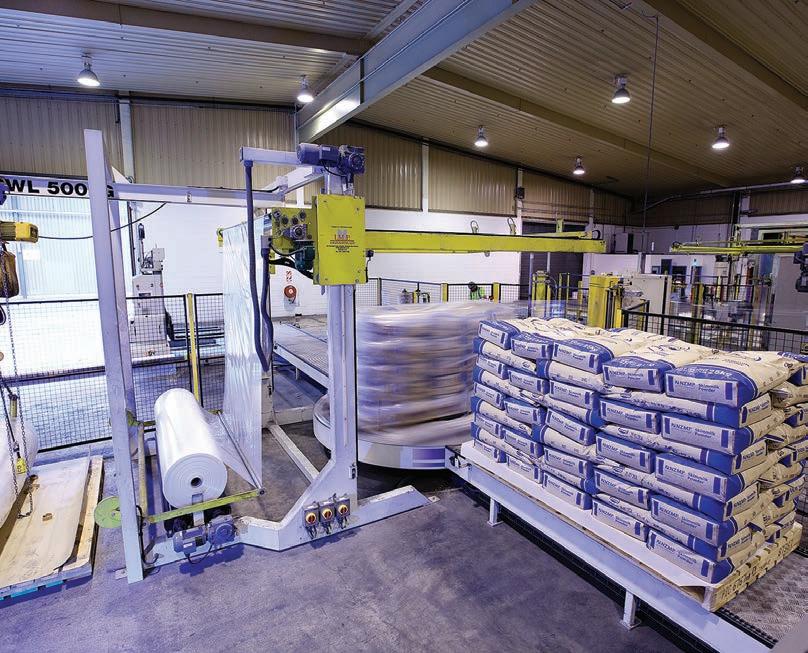
PRIME POSITION: Kiwi dairy exporters look well placed to take advantage of declining Australian dairy export volumes.
litres of milk in 2022/23, marking the “third consecutive year of decline” in milk production.
“Since the most recent production high in 2020/21, more than 700 million litres of milk have been lost from the supply chain resulting in a chronic shortage of milk for manufacturing – that is the total milk available outside what is used for domestic and export drinking milk.”
In 2022/23, the country’s milk supply available for manufacturing fell to its lowest level since the 1990s.
Australia has been on a slow retreat from the global dairy export arena for some time, with exports falling off a cliff last year, he said.
“For the calendar year 2023, dairy export volumes were down with double digits across most products, with the largest declines in liquid milk (down 41% year on year) and butter (down 52%).”
Despite the reduction, Australia remains a net exporter of dairy products, ranking as the fifthlargest dairy exporter in the world, with 4% of global trade.
















Farm con dence has recovered from last year’s record lows but high interest rates, poor commodity prices, and regulatory costs are weighing heavily on farmers.
The latest Federated Farmers Farm Con dence Survey shows there’s been a positive shift in the rural mood, but con dence is still languishing in historically low territory.
“It’s good to see the rst improvement in farmer con dence for quite some time now,” Federated Farmers national president Wayne Langford says.
“I want to be clear, though, that it’s only a slight improvement on the last survey in July 2023, when we saw farmer con dence plummet to an all-time low.
“Things are up, but we’re coming o a very low base. I wouldn’t say farmers are feeling more con dent yet – they’re just feeling less uncon dent.”
Langford says farmers are struggling with high in ation, high interest rates and lower commodity prices, and the impact that’s having on their pro tability.
“Most farmers are still feeling that general economic conditions are bad, and most are still making a loss.
“Where we are seeing a shift is in the number of farmers who expect things will improve in the next 12 months. So, times are tough, but
there’s a sense of cautious optimism.”
Compared to last July, the January survey shows more farmers expect their production and spending to increase, and fewer farmers expect their debt to increase, in the 12 months ahead.
Langford says there are a number of drivers behind the con dence recovery.
“In ation seems to be slowing, interest rates are softening, and commodity prices – at least for dairy – seem to have stabilised.
“We’ve also seen a change of Government in the last six months, with a real commitment to roll back some of the more impractical and expensive regulation that’s undermined farmer con dence.”
He’s optimistic this is the start of a genuine, steady increase in con dence.
“I think it is and I think Federated Farmers can help with that because we’re working hard with the new Government to reduce the burden on farmers, like xing unworkable freshwater rules.
“It’s all about cutting that red tape, making compliance on-farm easier, and getting our primary sector humming again.”
Tim Dangen, a beef farmer on Auckland’s west coast and the 2022 Young Farmer of the Year, says farmers are in “knuckle-down phase” and “weathering the storm” but he’s sensed the shift in rural con dence.





“I think farmers in general have started to adjust to the change in the climate.
“We’re slowly becoming more used to it, and the change in Government has helped too with some of the regulatory load.”
Dangen, a 2024 Zanda McDonald Award nalist (winner announced March 11-13), says the tight times have forced farmers to scrutinise their own businesses and nd e ciencies.
“In our personal farming situation, we’ve pulled everything apart and pulled it apart again, and we’ll continue to do so for the next 12 months. It’s just about making those adjustments.
“We know that once we get through this period, then ultimately what we’ll come out with will be a more e cient business – and that excites me.”
His main concern is around how long the economic downturn could last.
“How long are we going to be in this zone for? Even six months ago we would have thought our interest rates might be coming back by the end of 2024, whereas now that sort of seems like it’s out the window.
“If we’re lucky, we’ll be status quo by the end of the year.”
The survey identi ed farmers’ biggest concerns right now as: debt, interest and banks; farmgate and commodity prices; regulation

GAME PLAN: Federated Farmers president Wayne Langford took the organisation’s ‘rural con dence roadmap’ to Wellington straight after the election, outlining 12 policy priorities for the new Government.
and compliance costs; and climate change policy and the ETS.
Langford’s not surprised to see interest rates came out as the top concern.
“I’ve spoken to a lot of farmers who are getting work o -farm just to make ends meet. It’s exactly why Federated Farmers have been calling for an independent inquiry into rural banking.
“Farmers need to know why the banks are charging them so much more in interest than residential borrowers. An inquiry would provide that transparency.”
He encourages struggling farmers to reach out for help.

“Even though we’re talking about a slight con dence lift, it’s still extremely tough for farmers out there, so please reach out to the likes of Rural Support Trust if you need help.”
Listen to Wayne Langford and Tim Dangen discuss the state of rural con dence in episode four of the Federated Farmers Podcast, released March 11 at fedfarm.org.nz/podcast.
See the January 2024 Federated Farmers Mid-Season Farm Con dence Survey results at fedfarm.org.nz/ FarmCon dence

Farmers could be staring down the barrel of a whopping 24.2% rates hike as Environment Canterbury pushes ahead with premature and expensive changes to local freshwater rules.
Federated Farmers vice president Colin Hurst says such a steep increase in rates is completely unpalatable for local farmers already struggling with reduced incomes and increased costs.
A component of the increase is millions of dollars to be spent on planning processes.
“It’s pretty hard to stomach councils having to plough ahead, spending money they don’t have, on a new freshwater plan they won’t need. It’s a total waste of ratepayers’ money.
“The plan they’re working on is based on the direction of the previous Government’s fatally flawed National Policy Statement for Freshwater Management (NPS-FM).
“We all know the new Government are in the process of making significant changes to the NPS-FM policy that will have huge implications for regional councils.
“Unfortunately, while the law still sits on the books, councils are technically required to keep shovelling money out the door on the plan changes to implement it.” The rates increase is proposed as part of Environment Canterbury’s (ECan) draft work plan for the next 10 years.
Central Government needs to urgently step in to force a pause on changes to regional freshwater rules until the details of the new national policy direction are con rmed.
Colin Hurst Federated Farmers vice presidentECan’s preferred $346.3m work package for the first year (2024/25) would require a 24.2% increase in revenue collected from rates.
Hurst says, at a time when council finances are already stretched, they shouldn’t keep sending good money after bad pursuing a freshwater plan that will never be implemented.
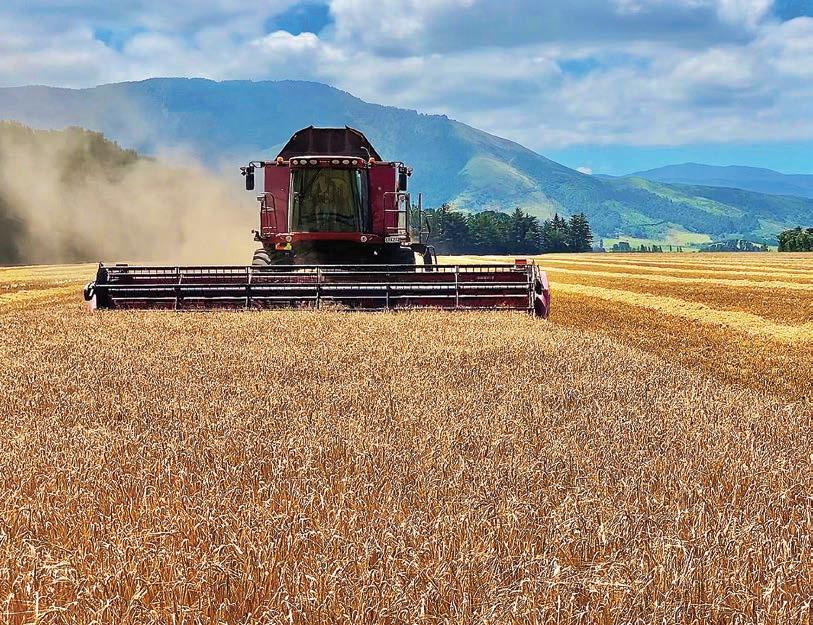
“Central Government needs to urgently step in to force a pause on changes to regional freshwater rules until the details of the new national policy direction are confirmed.”
The new coalition Government has pushed out the deadline for NPS-FM compliance from 2024 to 2027 and pledged to replace it with rules that are much more practical.
Hurst says these local government planning and consultation processes are very expensive and swallow up a huge amount of council staff time and resources.
“It’s not just the council who end up spending big dollars either – it’s organisations like Federated Farmers who end up having to fight this stuff on behalf of our members.
“As a farmer and a ratepayer, I find it infuriating to see such wasteful spending from the council at a time when so many in our community are struggling to keep a lid on their own budgets.
“To make matters worse, these changes are only going to make farming more difficult and expensive, completely undermining food production and farmers’ livelihoods.”
He says Canterbury already has a sound and communityagreed Land and Water Plan and sub-regional environment and freshwater plans – and it’s working.
“Not everyone was happy with that plan at the time, but you know the old adage: if there’s a little bit of grumpiness from all sides, then you’ve probably landed in the right place.”
The bad news for Canterbury ratepayers is the proposed 24.2% rate hike in 2024/25, probably the highest in the country, is not a one-off jump, Hurst says.
The council is also proposing 13.6% and 8.3% increases in the subsequent years.
Consultation runs from March 13 until April 14, and Hurst says members can trust that Federated


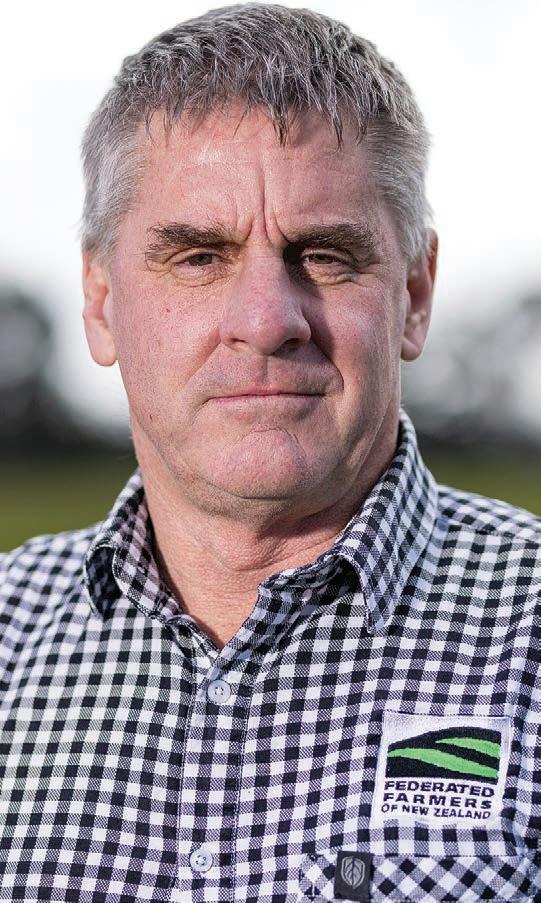
Farmers will be making a strong submission on their behalf. Under the proposed plan, ECan’s expenditure on environmental regulation and protection services would leap from $111m in the current year to $135m in 2024/25. Most of that increase would be incurred in regulatory framework costs, consenting and compliance, and no extra spending on pest management or indigenous biodiversity.
Federated Farmers Mid Canterbury president David Acland says while the federation has still to do a full analysis of ECan’s 301-page plan, farmers may not have a quibble with the council’s plans to lift spending on flood control and river resilience work by $10m to a total of $36m in 2024/25. Spending on this would rise to $43m a year by 2033/34. The intention is to move to a two-tier model of funding
NOT NOW: Federated Farmers vice president Colin Hurst says such a steep increase in rates is completely unpalatable for local farmers already struggling with reduced incomes and increased costs.
flood protection work, with a district-wide rate reflecting the fact that the entire community benefits from taming rivers when they flood, plus a targeted rate on land that directly benefits from particular flood protection projects.
“I’ve heard talk that councillors want to address blockages and cost areas that hamper ECan’s river teams from getting work done,” Acland says.
“It’s been estimated that for every dollar ECan collects to spend on rivers, 60 cents is spent on consenting, compliance, monitoring and reporting thanks to requirements imposed by central government and lobbying by NGOs.
“Farmers would much rather see a higher percentage of those dollars going on actual physical works that protect people and property from flooding.”
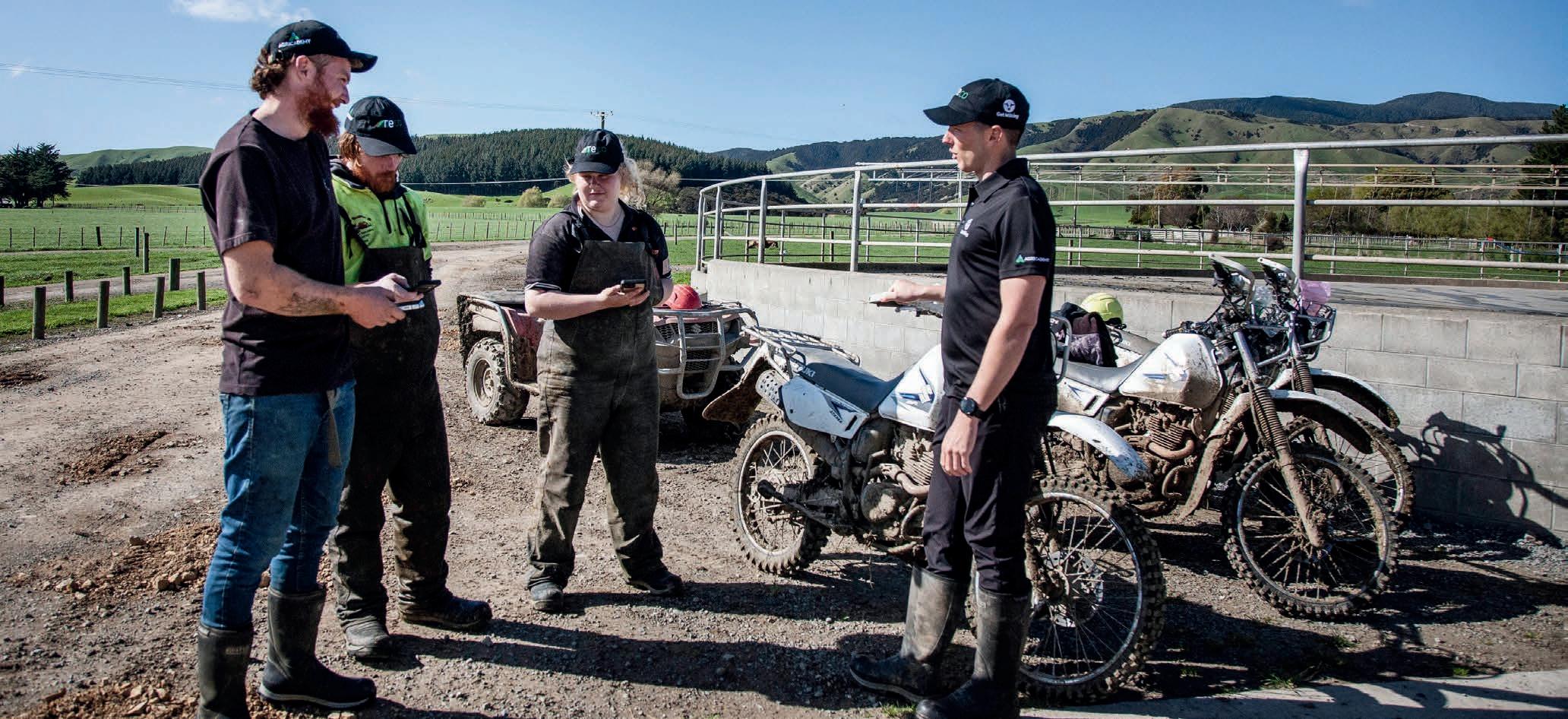

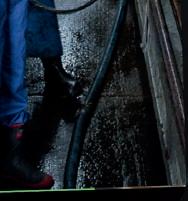


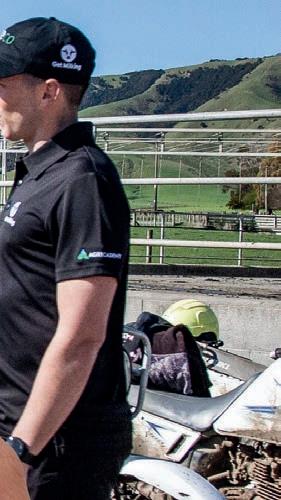



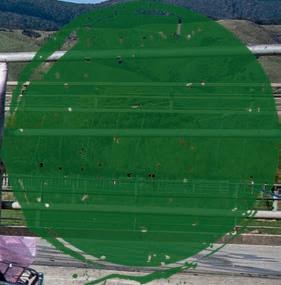

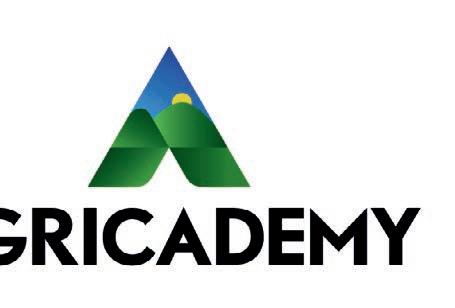
by now. Instead, emissions have increased since 2015.
Earlier this year James Shaw, the former Minister for Climate Change, stepped down from the co-leadership of the Green Party after almost a decade in the role.
While re ecting on his achievements in Government, Shaw was asked if he thought the global goal of limiting temperature change to less than 1.5C above pre-industrial levels was still possible.
“I think we’ve probably already passed that threshold, and I’m queasy about saying that because I don’t want people to lose hope or to give up, because in my mind that is a reason to double down rather than walk away.”
To put the scale of the challenge in context, to achieve the 1.5C goal, global greenhouse gas emissions would need to have halved between when the Paris Agreement was signed in 2015 and 2030.
If we were to be ‘on track’ to meet that target, the world would have needed to have seen emissions peak and begin to fall, ideally by 25%,
When New Zealand signed up to the Paris Agreement, the National Government of the time adopted an ambitious target of a 30% emissions reduction by 2030.
Not content with that level of ambition, in 2021 Shaw increased this target to be a 50% reduction by 2030. Yet, so far, our gross national emissions have fallen a paltry 6% –and 2030 is now less than six years away.
What this means is Shaw’s assessment is likely spot on: the world isn’t on track to meet a 1.5C target and New Zealand is part of the problem.
We clearly aren’t on course to achieve our Paris commitments –and this is con rmed in papers Shaw took to Cabinet in July last year – but we’re not alone.
Countries all around the world are expecting to fall short of emissions reductions they’ve pledged to make under the Paris Agreement.
The unfortunate reality here is that ‘emissions reduction targets’ and ‘emissions reductions’ are two very di erent things.
I’m rmly of the view that if we
continue to increase our level of ambition before we’ve seen any meaningful emissions reductions, people will begin to disengage with the process. This is entirely counterproductive to what we are trying to achieve.
Many people may not be aware the Paris Agreement doesn’t actually include a 1.5C target.
When the agreement was signed, world leaders knew a 1.5C target would be unachievable, but the pressure from green groups and environmental NGOs was immense.
In the end a compromise was reached: the target was for temperatures to be limited to ‘well below 2C’ while ‘pursuing e orts’ to limit warming to 1.5C.
Unfortunately, before the ink had even dried, those same green groups were already mischaracterising the agreement by repeating the 1.5C target enough times that it became the truth – despite what the actual text of the agreement says.
That mischaracterisation has had a signi cant impact on New Zealand’s climate policy and law.
Even the Climate Change Response Act, also known as the Zero Carbon




Act, has adopted a 1.5C target – and our carbon budgets must be set along the same lines.
All of this matters.
Since 2019 farmers have been required to reduce their biogenic methane emissions by 10% by 2030 – but since that target was set, biogenic methane emissions have fallen a mere 1%. What should we make of this?
In the coming years, the world will have to come to terms with the reality that the Paris Agreement targets are not being met – just like those set at Rio de Janeiro in 1992, Kyoto in 1997, and Copenhagen in 2009.
Should New Zealand continue striving for an unattainable target, or should we instead be committing to rational, achievable and sciencebased action on climate?
The National-led Government have committed to reviewing our methane target to be in line with the principle of no further warming –and Federated Farmers supports this approach.
Research commissioned by Oxford University found Kiwi farmers would need to reduce their methane 27% by 2050 under a 1.5C pathway but only 15% under a pathway more similar to a 2C warming.
While we’d all prefer the world
GOALS: The National-led Government have committed to reviewing our methane target and Federated Farmers supports this approach, GM policy and advocacy Paul Melville says.
could solve the challenge of climate change, whether through strong political action or rapid technological advancement, we also need to be realistic.
New Zealand’s climate policy should look at the practical reality the world faces, and our politicians should be making decisions based on what is going to happen in the real world, not what we wish would happen in a perfect world.
Paul Melville Federated Farmers GM policy and advocacy
New Zealand’s climate policy should look at the practical reality the world faces, and our politicians should be making decisions based on what is going to happen in the real world, not what we wish would happen in a perfect world.
While we are reviewing our methane targets, perhaps we should also be reviewing the targets in the Zero Carbon Act and our broader commitments under the Paris Agreement – with some honest re ections this time around.


Signals from the new Government have given Wairarapa residents hope that a stalled community water storage scheme – or some version of it – could soon be revived.
After 20 years’ debate and planning, and $12 million spent, the Wakamoekau community dam project was canned in 2021.
Now, there’s a sense of optimism among farmers and the wider community that the water storage scheme might be back on the table, Federated Farmers Wairarapa president David Hayes says.
“Water storage is critical to the future of our towns and rural hinterland, to employment, production and the health of our rivers and wider environment.
“A recent meeting with Minister for Rural Communities Mark Patterson, and other signals from the new Government, are giving us hope that the Wakamoekau scheme and other water storage projects around the country might get traction.”
In February, Patterson met with Wairarapa’s three mayors, Federated Farmers, the Rural Support Trust, Wairarapa MP Mike Butterick and others to discuss how Wairarapa is recovering from Cyclone Gabrielle. The meeting was a chance to raise the issue of water storage too, Hayes says.
“Talking about the recovery issues related to Gabrielle is really important, but long-term resilience is what really matters.
“We want Cabinet to look at their commitments for resource management reform and improved water storage, and consider the Wairarapa as a prime candidate for ‘ rst cab o the rank’.”
We want Cabinet to look at their commitments for resource management reform and improved water storage, and consider the Wairarapa as a prime candidate for ‘ rst cab o the rank’.
of trying to navigate planning restrictions.
Hayes says, while Patterson made no commitments at the February meeting, he spoke about the opportunities available to rural communities for water storage, irrigation and ood protection through the $1.2 billion Regional Infrastructure Fund.
“The new Government has also made commitments on resource management reform, fast-tracking of vital projects and recognition that water storage can unleash economic development,” Hayes says.
“Hopefully we’ll start to see concrete moves on that front.”
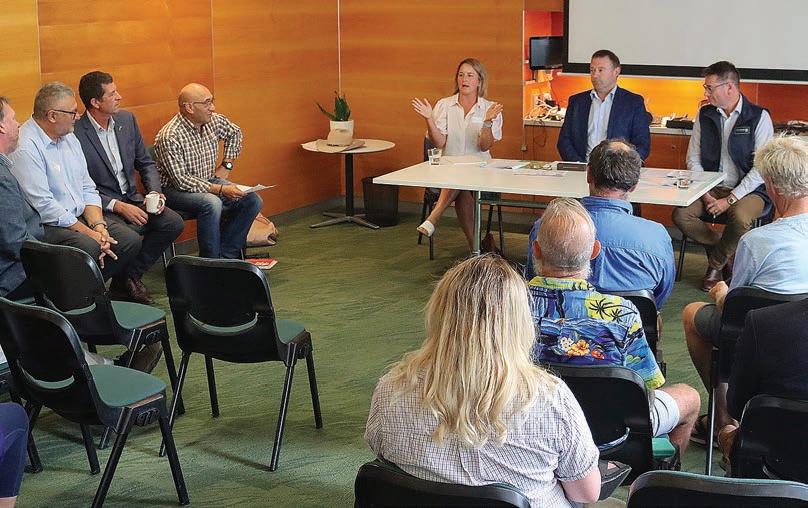
The Wakamoekau scheme, northwest of Masterton, was designed to harvest high winter ows of the Waingawa River into a 20-million-cubic-metre dam for use in summer.
It was seen as a foundation block of the region’s resilience strategy and received millions from the Provincial Growth Fund, regional council and private companies.
When abandoned in 2021, its backers cited the time and costs
Based on work done by MPI’s Water and Availability Group, the ‘brie ng to incoming ministers’ from Irrigation New Zealand urged the new Government to re-establish feasibility work for water storage projects in “high-need areas, focused on producing food”, including the Wairarapa, East Coast, Hawke’s Bay and Otago.
“There are many projects that with tweaks and support could begin immediately under a fast-track approach,” the brie ng says.
Irrigation NZ’s brie ng notes that when MPI launched its 10-year strategy in 2020, water storage was rst in line as a “transformational opportunity … to give farmers access to higher value land use


DO IT: Getting water storage potential flowing again was one topic at a February meeting chaired by Federated Farmers Wairarapa vice president Kate Wyeth with Minister for Rural Communities Mark Patterson (centre).
options, product supply chains, and higher employment”.
Unfortunately, with multiple agencies working on freshwater issues there’s a lack of co-ordination and direction.
“This often leads regional councils to interpret and implement rules that are not practical or have unintended negative consequences,” the brie ng states. There are positive signs progress will be made on water storage, with National’s Primary Sector Growth Plan calling for water storage on farmland to be a permitted activity, within limits; a requirement for councils to approve or decline consents for other types of water storage within two years of an application; to provide consents for water storage for at least 30 years to give certainty; and where appropriate to match water storage with renewable energy generation.
Irrigation NZ’s brie ng, which highlights the Wairarapa scheme as a case study, suggests the Government could reinstate an investigations fund, much like the Irrigation Acceleration Fund, provide low-interest nancing via government borrowing channels, and “ensure environmental and
economic factors are given equal weight in consent deliberations”.
Meanwhile, Federated Farmers believes new dam safety regulations go too far and will prove a signi cant block to on-farm water storage unless amended.
The Building (Dam Safety) Regulations 2022 are due to come into e ect in May. It’s estimated they’ll cover around 3000 dams throughout the country, which will need to be assessed by recognised engineers and reviewed every ve years.
Mark Hooper, Federated Farmers spokesperson for buildings and farm structures, says these and other costs, such as developing a Dam Safety Assurance Programme, are in many cases out of kilter with the potential risk posed by smaller dams to people and property.
The changes Federated Farmers sought around dam sizes captured by the regulations would drop the number needing management to about 800.
According to Irrigation NZ, there are currently only 13 recognised dam engineers in New Zealand, so farmers with dams in more remote areas will struggle to get an engineer out to do assessments, Hooper says.

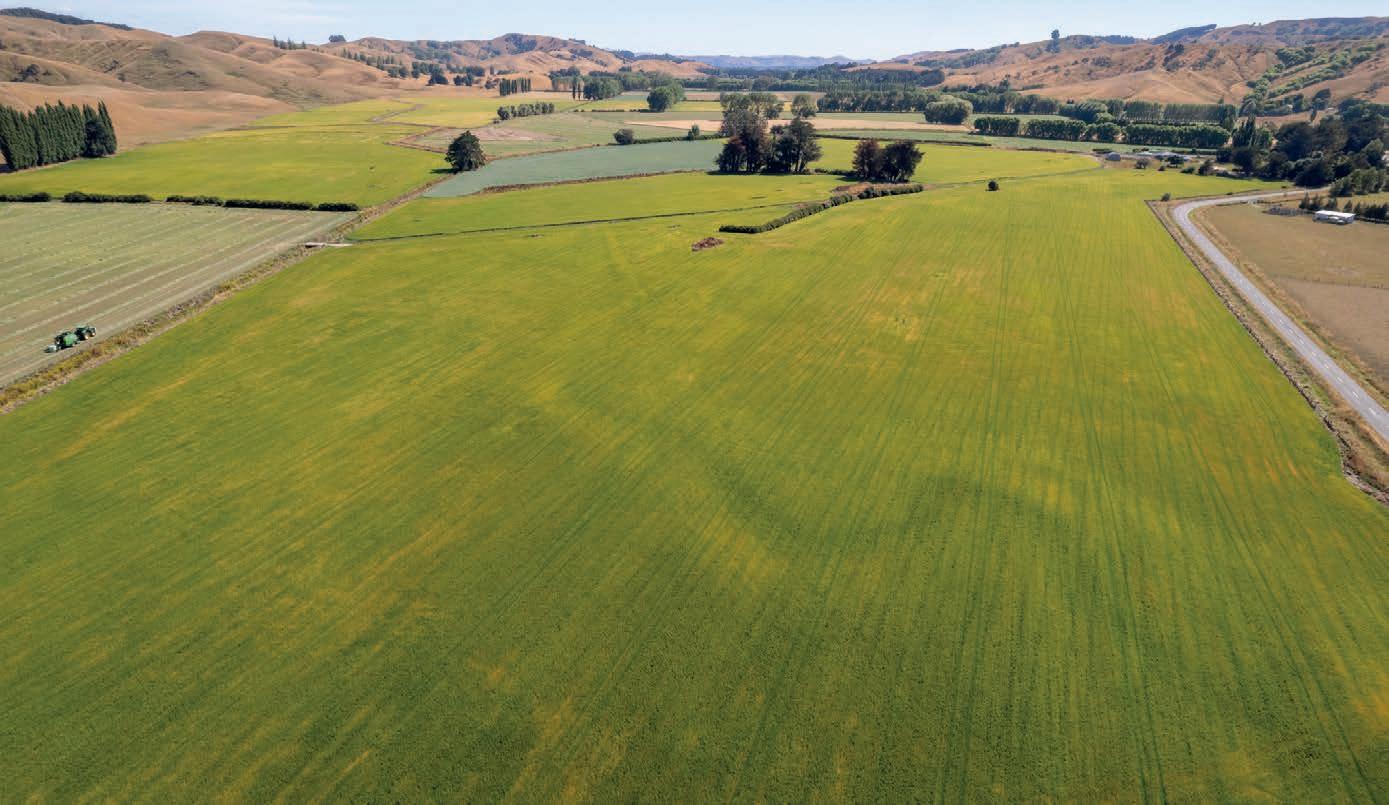



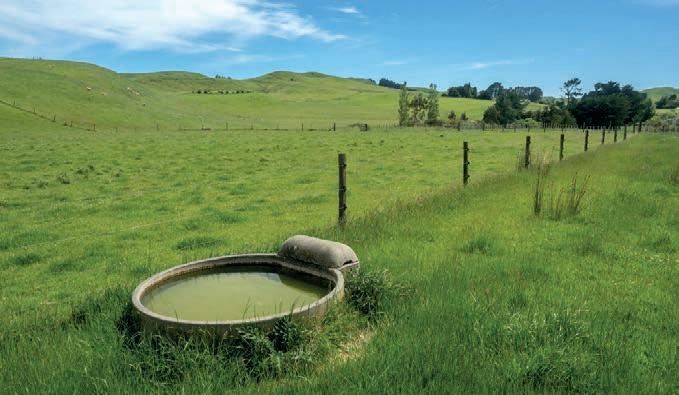
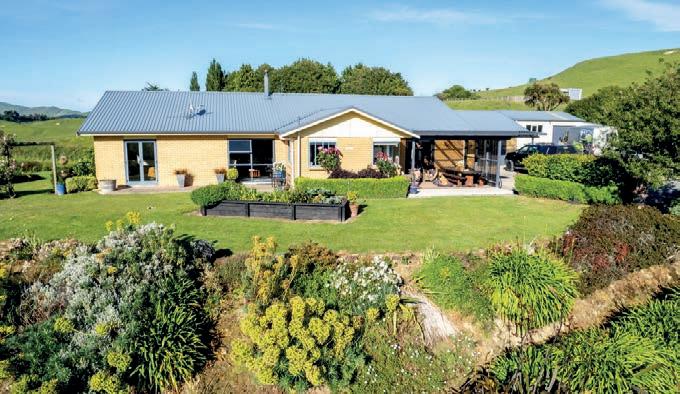
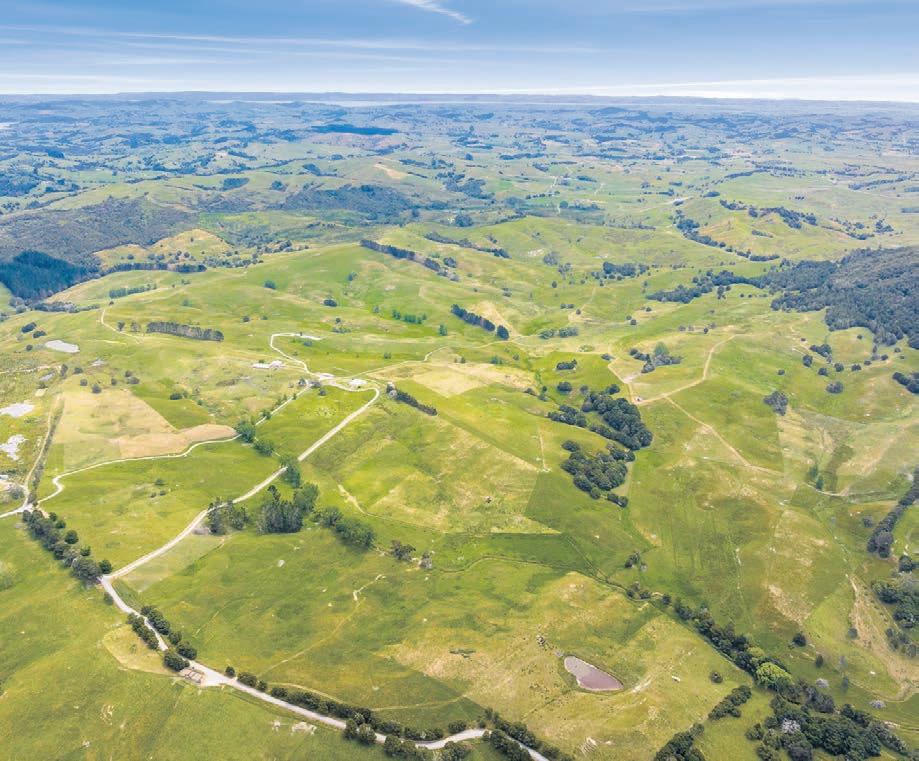
Paparoa 1228A
Beef farm with scale, in multiple
372.76

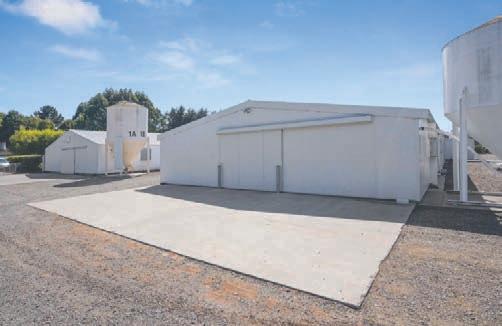




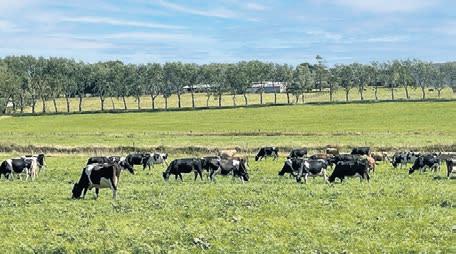
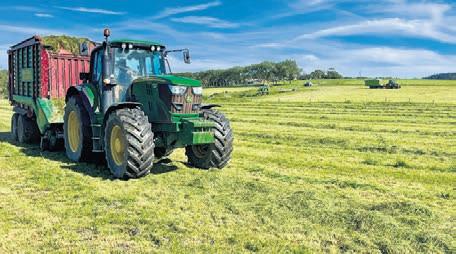
Mangawhai 1040 Pakiri Block Road,
Coastal farm & lifestyle!
and beyond. Embrace coastal living with access to popular surf and swimming beaches, world-renowned golf courses, Mangawhai, and an easy commute to Auckland. The farm has a full set of infrastructure in place, and ready to go. Plus, lease the neighbouring 60-hectare block to boost your production further. Begin everyday with views and a world of possibilities Take a virtual tour: www.vimeo.com/918115564 bayleys.co.nz/1203881
Ngongotaha Valley 53 Burnsdale Drive Auction



Sold the farm??? - 53 Burnsdale Drive Rotorua
If



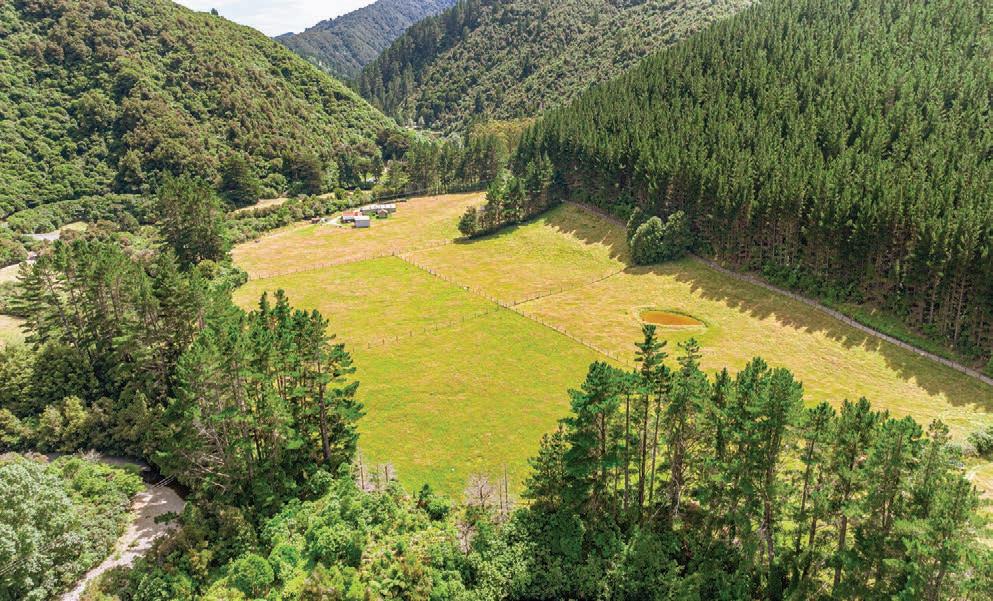


Chilly
Chilly
The mature pine forest is now ready for harvest. The pine forest encompasses a total of 132ha, including 95ha planted in 1997, 30ha planted 2007, and 7ha of 45-60 year old trees.
The property includes a timber homestead, commercial

Other property features include established roading, fully tracked access with skid sites.
The



FARMERS WEEKLY – farmersweekly.co.nz – March 11, 2024
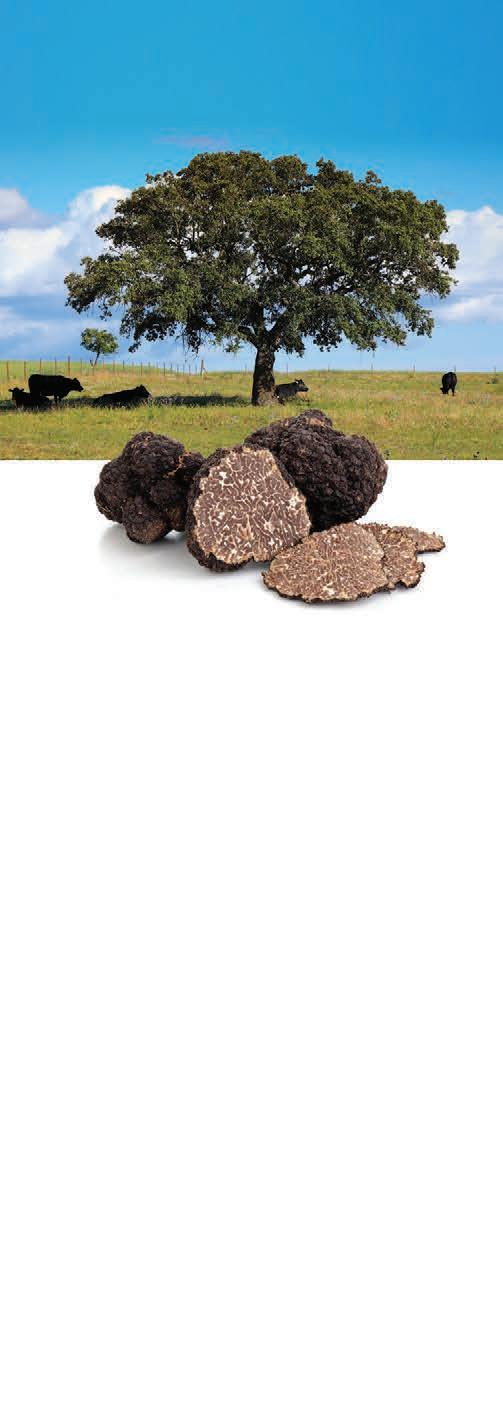

BW
(in top 10 All Breeds for NZ )
• Many cows contracted to LIC for 2011 matings
Livestock Marketplace
• Due to calve from 16-7-12, 6.5 weeks
AB Jersey and Kiwi cross
• Estimated to be 420 cows after non pregnant, culls, older cows & 5% rejection
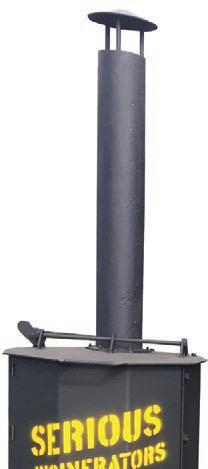

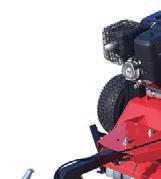
• Production last season 347kgs ms/cow, 1000kgs ms/ha, on rolling to steeper contoured farm, no meal, palm kernel or maize fed.
• Young replacement stock also available
• 24 Jersey + Jersey X, due to calve 12/7/24. Well bred line, long established herd. BW average 325, PW288. Northland
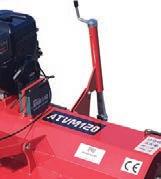


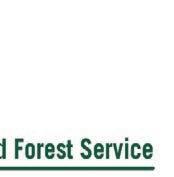
Want to grow some trees on your farm, but not pines? Come and see some great examples at free eld days starting in March.
Learn about the bene ts of planting alternative species.
NZ Farm Forestry members will share their experiences of what grows well and where, success and failure, costs and returns. They are showcasing farm forestry in 20 locations across the country.
Hosted by the NZFFA, with support from Te Uru Rākau – NZ Forest Service, the rst 3-hour eld days
14
21
21
23
23
24
27
28
5
1
• 25 Crossbred, BW average 313, PW 327. Due to calve from 10/7/24, CRL. Waikato
Outstanding genetics & potential to be one of the countries leading suppliers of Genetics to the dairy industry for years to come. Full details available.


• CRL 70 Frsn, Fx and Ayrshire I/c Heifers. Will sell breeds separately, fully recorded. Due to calve end July to Hereford Bulls. Herd sold, Manawatu
Enquiries to the sole marketing agents:
Enquiries to:
Brian Robinson
Brian Robinson BRLL
Phone 0272 410 051
PH: 0272 410051 or 07 8583132
Gary Falkner
Jersey Marketing Service
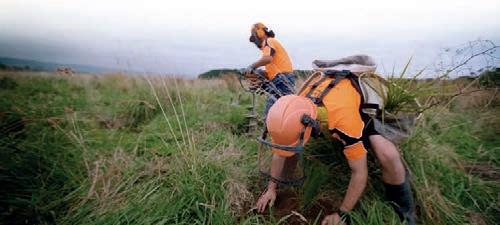

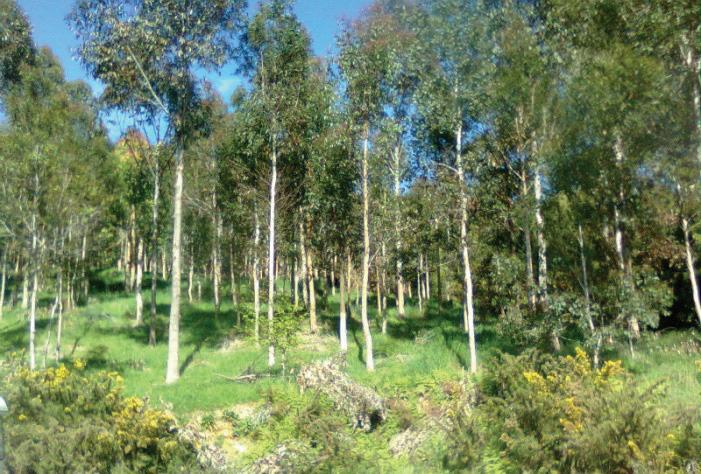
After waiting nearly an hour to play a hole, the men try yelling out to them, to no avail.
When the men reach the 4th tee, they wait another 30 minutes while one of the ladies takes 10 shots to get out of a sand trap. The boss says to his subordinate, “I’m going to head up and ask if we can play through.”
The boss gets about 50 yards from the green and abruptly turns around and drives back to the tee. The subordinate asks, “What happened? Why didn’t you say anything to them?”
The boss says, “I got about 50-60 yards away, and I could tell that the two women were my wife and my mistress.”
NZ
HORTICULTURE
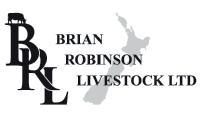
HUNTING WANTED
EXPERIENCED HUNTERS IN Canterbury looking for large numbers of paradise ducks, pigs, deer goats etc. Phone 027 636 3710.
LEASE LAND FOR LEASE, 67 hectares of prime land located in the Waikite valley, plus silage or winter grazing. Phone 027 443 6565.
LIVESTOCK FOR SALE
THE GULLIES Wiltshire & Low Input Rams. SIL; FE and worm tolerance. Lower your shearing costs. Look after your bottom line. Richard Morrison, 021 626 513, richard@thegullies.nz
wordads@agrihq.co.nz
PRIVATE HUNTING BLOCK
WE ARE A couple of semiretired active and responsible farmers from Northland looking for a private block to meat hunt on [deer] anywhere in the North Island. Happy to pay the going rate. Ideally any sort of shed/ shearers quarters to camp in would be great. Phone Trev 021 271 8878.
PUMPS
HIGH PRESSURE WATER
PUMPS, suitable on high headlifts. Low energy usage for single/3-phase motors, waterwheel and turbine drives. Low maintenance costs and easy to service. Enquiries phone 04 526 4415, email sales@hydra-cell.co.nz
RAMS FOR SALE
GOOD TERMINAL SIRES
Southdown/ Su olk X & Southdown rams for heavy lambs. Suit ewes or hogget or mating $300 - $500. Phone 021 133 7533.
GOOD TERMINAL SIRES
LK0118141© 32 Marketplace Marketplace 32 DOLOMITE For a delivered price call .... NZ’s finest BioGro certified Mg fertiliser 0800 436 566 ATTENTION FARMERS ZON BIRDSCARER electro-tek@xtra.co.nz Phone: 06 357 2454 ELECTRO-TEK ENGINEERING FLY OR LICE problem? Electrodip – the magic eye sheepjetter since 1989 with unique self adjusting sides. Incredible chemical and time savings with proven e ectiveness. Phone 07 573 8512 www.electrodip.com ANIMAL HANDLING BALAGE FOR SALE ROUND BALES - Baled December 2022. Excellent quality. $90/bale excl GST. Located Maraekako SH50 Hawke’s Bay. Phone 027 4863 906. GOATS WANTED. All weights. All breeds. Prompt service. Payment on pick up. My on farm prices will not be beaten. Phone David Hutchings 07 895 8845 or 0274 519 249. Feral goats mustered on a 50/50 share basis. GOATS WANTED HAY/BALAGE FOR SALE HAY SQUARE AT $75, Rounds at $85 plus GST. Wheat and barley straw available now. BALAGE EXCELLENT QUALITY, $75 per bale plus GST. Unit loads available for hay and balage. Phone 021 455 787.
Southdown/ Su olk X & Southdown rams for heavy lambs. Suit ewes or hogget or mating $300 - $500. Phone 021 133 7533.
WANTED TO BUY
Enrol on the website (https://www.nz a.org.nz/events/) or scan this QR code if you want to attend a eld day in your area, or learn more about them. It will take you to more information and the registration form. Everyone is welcome. Tea and co ee will be provided.

The subordinate says, “We ain’t got all day. Let me go talk with them.” So he drives up, gets about 50 yards away, and abruptly turns around.
When he gets back to the tee, he says, “Unbelievable. What a coincidence.
Due To A Change In Farming Practice
Farmed in the Central North Island
2000 MA Red Hinds R3YR-R10YR
1000 R2YR Red Hinds
Breeding: Focus Genetics
Weight: MA Hinds 120kg, R2YR 103kg
Previous years fawns wean to stags mated 87%
Sell now or RW stag
R2YR’s stag in 26th Feb,MA stag 10th Mar
Sell any reasonable runout.
All enquiries to:
Brent and Anna Fisher
1069 Hudson Road, Greenpark - 3pm
> 15 Charolais Mixed Age Cows (PTIC)
> 13 Charolais R2 Heifers (PTIC)
> 15 Charolais Heifer Calves
> 4 Flushes > 3 Semen Packages
Further enquiries:
Guy
Liz Hampton, Cave - Online Bidr Auction
Thursday 14th March - 7pm
> 5 Pure Bred 2th Rams
> 5 Pure Bred Ram Lambs
> 45 F1 Kerry Hills x Perendale Ewe Lambs
Videos and catalogue will be available to view on Bidr®.

Ro ss s Dyer
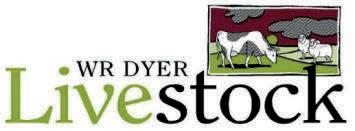
[Cell] 0274 333 381

[Email] ross@dyerlivestock.co.nz

hazlett.nz
SIL

NZ’s






To register for Bidr® please go to www.bidr.co.nz. If you would like assistance registering please call the bidr team on 0800 TO BIDR (0800 86 2437).
Further enquiries:
Callum Dunnett (Hazlett) 027 462 0126
Wayne Andrews (Hazlett) 027 484 8232
Liz Hampton (Vendor) 021 082 6946


Friday 15th March 1pm


A/c Faraway Ltd D Van Bysterveldt
Date: Thursday 14th March
Address: Matamata Saleyard
Start Time: 11.30am
will be available for online bidding
COMPRISING:
238 x Mixed Aged Autumn Calving Cows
DETAILS:
• BW: 319 PW: 427 (BWs up to 450, PWs up to 913)
• All April calving, blanket dry cow. TB Tested.
• All in-calf to AI Charolais only, no bulls used.
AUCTIONEERS NOTE:
This exclusive line of strong Friesian to Friesian cross carryover cows were handpicked from herds from Waikato to the North. Were milked through and mated for autumn calving. Will come forward in excellent condition.
All cows guaranteed sound and in-calf by the vendor.
PAYMENT TERMS:
14 days after sale
OUR VENDOR:
David Bysterverldt 021 189 9888
CARRFIELDS LIVESTOCK AGENT:
Reuben Wright 027 284 6384
Or your local Carrfields Agent


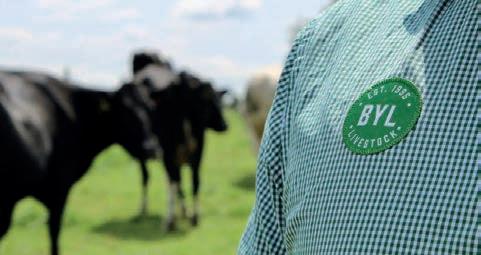
65

A/c Clearview Trust – S & K McDonald
Date: Wednesday 27th March 2024
Address: 84 Clearview Road, New Plymouth, Taranaki
Start time: 12 Noon (undercover, complimentary hospitality provided)
COMPRISING:
On Account of Clearview Simmentals:
DETAILS:
• All stock will be pregnancy tested prior to the auction.
• All in-calf animals have been run with bull.
• Outstanding temperament.
• Well grown.
• TB, BVD & EBL tested negative and vaccinated.
AUCTIONEERS NOTE:
A grand opportunity to purchase top quality beef cattle from a



80 2th rams
- Romney (including a selection ideal for mating Merinos)
- Romdale
- Texel x Romney
- Perendale X Texel X Romney
- k. X Romney
- k. Maternal (hogget Mating)
- Terminator - Tough Hill-bred Blackface
To be sold on-farm and online through Yourbid. Videos and online bidding open March 8th at

But is this current lift in interest a directional shift in demand – or is it being driven by the recent lack of product out of New Zealand?
 EMel Croad MARKETS
EMel Croad MARKETS
ARLIER forecasts pointed to a blanket drop in average farmgate lamb prices to mid-$5/kg by February. Fortunately, the lack of lambs into processing plants from late-January to March meant no one had to suffer that fate. That’s not to say that the fall in AgriHQ’s lamb indicators to $5.80-$6.10/kg has been anything to crow about, but it still looks better against earlier budgets.
While a shortage of lamb over the past six weeks put a floor into lamb prices, we have also seen some improvement in demand from some of our more traditional markets.
Many customers held off buying late last year, on the back of our potential drought and surge in supply. They are now finding their inventories are lower than they would like.
If this momentum can be maintained it will be positive for farmgate prices.
What needs to be determined, however, is if this current lift in interest is a directional shift in demand or is being driven by
the recent lack of product out of New Zealand. Ultimately a solid recovery in export prices and therefore farmgate returns needs to be demand driven rather than reactionary to supply constraints.
The broader global picture still points to supplies outpacing demand, especially when we add Australia into the equation. While this drove export prices down, it enabled the continued flow of lamb into markets, preventing any build-up of stocks.
Global consumers are still showing willingness to purchase lamb, but their ability to pay a high price has eroded. The lower prices have helped keep lamb on the menu for a lot of consumers, which is considered a win during an almost global cost-of-living crisis. This crisis is determining how and where consumers choose to spend their money – and consumer spending is expected to remain sluggish through 2024.
Driving most of the upside in global supplies have been shipments out of Australia, signalling growth in its breeding flock and subsequent lamb production. In the 10 months to the end of February 2024, Australia exported 294,000 tonnes of lamb. This is a 70,000t increase


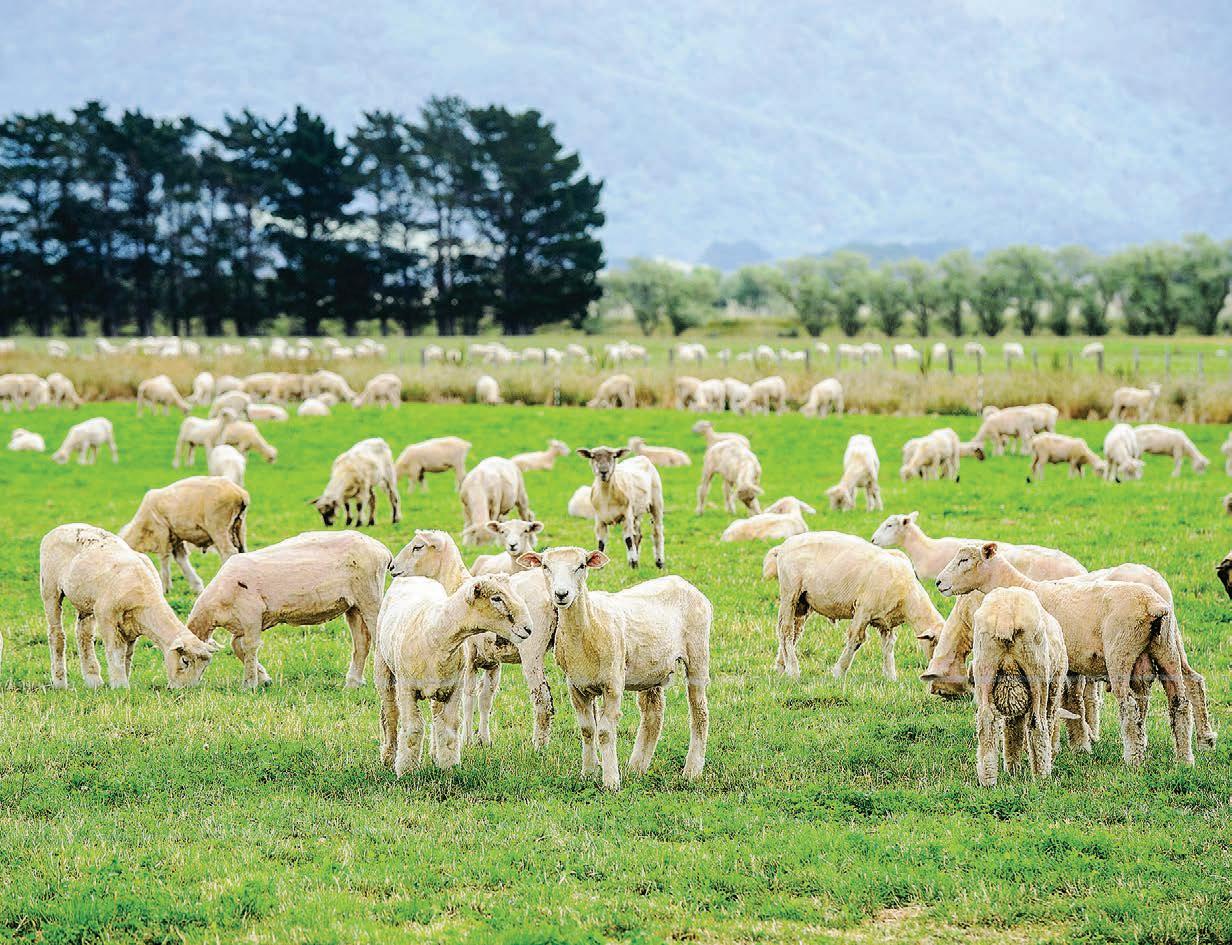
Global consumers are still showing willingness to purchase lamb, but their ability to pay a high price has eroded.
on the same period for the four years prior.
Recent analysis from Meat & Livestock Australia (MLA) highlights another big production year for Australian lamb, with 2024 exports forecast to lift by another 9000t to a record 335,000t. Heading in the opposite direction are NZ lamb production and exports.

Tighter supplies may have supported NZ returns on an individual market basis in recent weeks, but that advantage almost evaporates on a wider, global scale. Australia’s sheer size on the global market now means it sways the direction of global lamb prices. If this sounds familiar, it’s because it wasn’t long ago that NZ held this position.
MLA is forecasting Australian lamb production to peak in 2024. On face value that should mean NZ will start to face less competition in our export markets in the years following. But it’s not that simple.
Not only has the Australian sheep flock experienced significant growth in the past
two years, but productivity gains have also been substantial. Any downside is only forecast to drop production and exports back to the 2023 levels.
Balancing this, however, is the expectation that global demand will start to outpace supplies as economic conditions improve from later this year. Ultimately this means a further wait for a sustained improvement in export returns and farmgate prices.
The alternative scenario is that global economic conditions improve faster than forecast and the upside to farmgate prices is felt sooner. This aligns with sheep farmers’ wish for the sector, but gut feel is that we are not quite at that scenario yet.
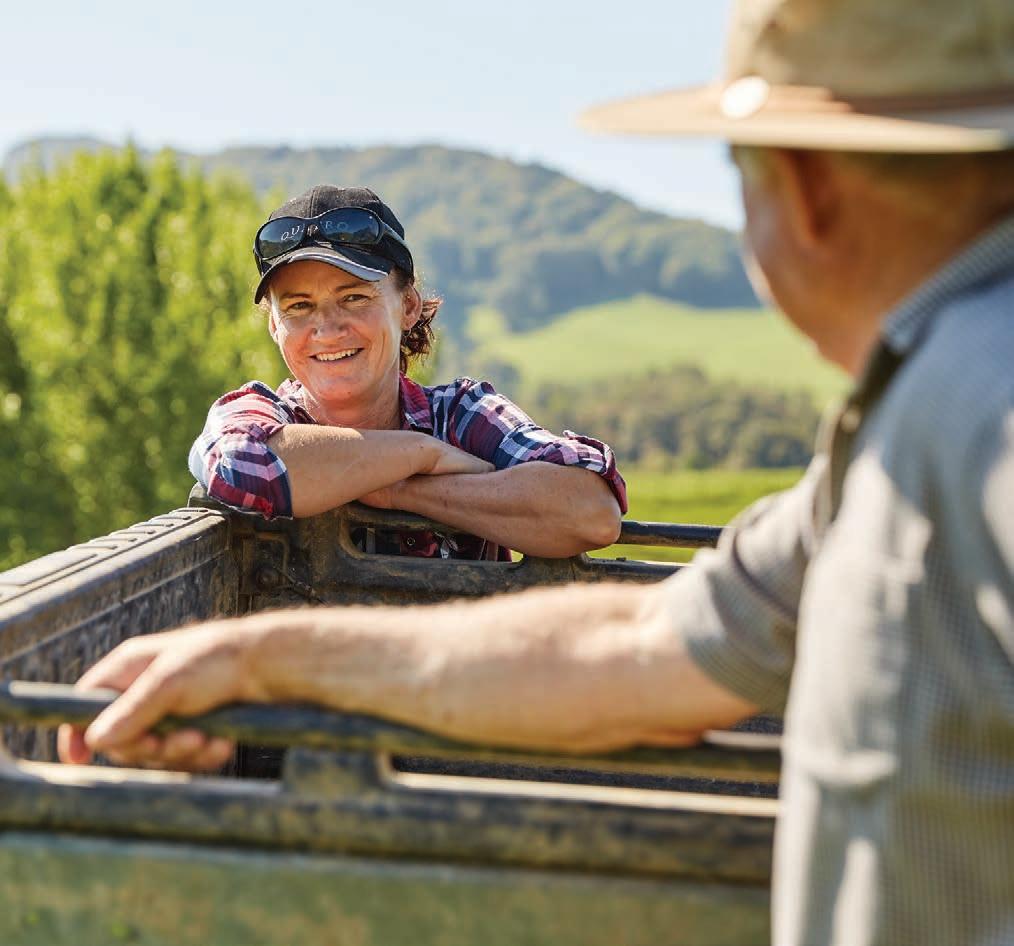

’Tis the season for beef weaner fairs and they are in full swing now. Stortford Lodge ticked off its first two fairs, steers on Tuesday and bulls and heifers on Wednesday. Traditional breeding got nudged to the side in favour of creamy exotic types, and Simmental-Gelbvieh were a particular hit. The top two lines of steers fetched $1305$1380 and their sisters collected $880 the next day. In both cases, they made the top per kilogram return for their class at $4.40/kg and $3.67/kg respectively. Good grass covers across much of the North Island are adding to competition, but will the South follow suit?
Feilding | March 1 | 549 cattle, 7095 sheep
Feilding
Temuka
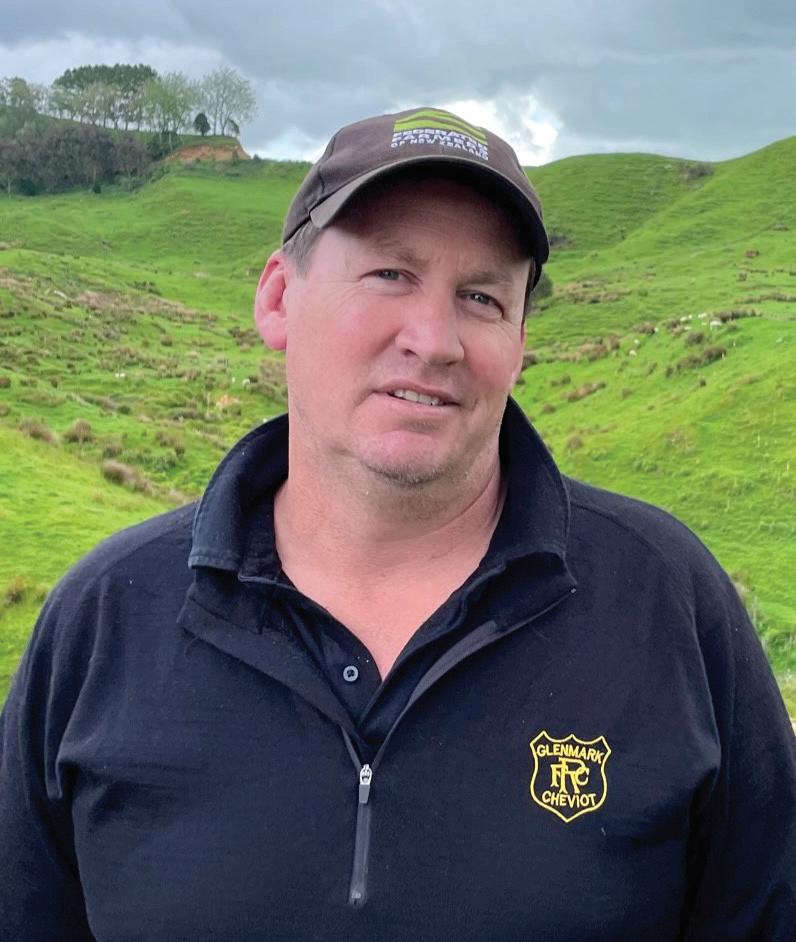
“ It’s the credible paper. Farmers Weekly is the go-to one that you have to read.”
Reon Verry, Provincial Meat and Wool Chair, Waikato
Rangiuru | March 6 | 1255 cattle
Weaner
Weaner
Weaner
Paeroa | February 23 | 730 cattle











Steer slaughter price ($/kgCW)
Lamb slaughter price ($/kgCW)
Australia beef exports (Dec-Feb, thous. tonnes)
Australia lamb exports (Dec-Feb, thous. tonnes)
Stag Slaughter price ($/kgCW)
Data provided by

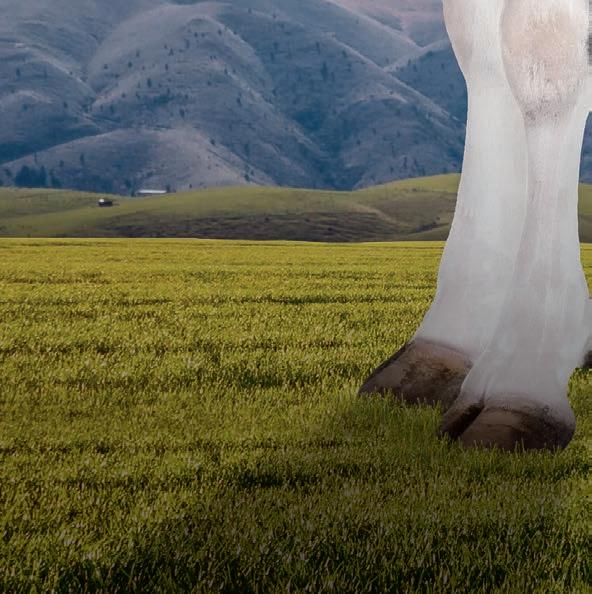




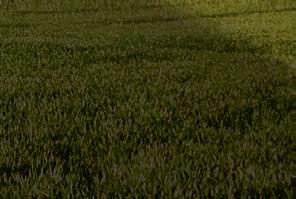

 TPhilip Duncan NEWS Weather
TPhilip Duncan NEWS Weather
HERE has been some rain relief in our driest regions over the past week or so and while many regions remain drier than usual for this time of year, the rain and showers that recently fell will be helpful.
Northland, Auckland, Waikato, East Cape, coastal Bay of Plenty, dry parts of the lower North Island and parts of Marlborough and Canterbury all had relief. The nature of the fractured fronts means it was hit and miss even within regions.
As we said recently in our March ClimateWatch update, this month is likely to be dominated by high pressure. Having two highly commercial government forecasters these days competing against each other drives weather narratives that don’t always come true.
This can be frustrating for those who need rain and see news stories about possible tropical cyclones that may come down our way and bring relief.
WeatherWatch.co.nz has always had one strict philosophy – to forecast the weather most likely to happen, not to forecast the weather most people want.
It can be hard to tell everyone you’re not going to get what you want.
Those who love thunderstorms know all too well we’re quite often “Captain Comedown”, telling people “sorry, we don’t expected any thunder activity today”.
We encourage people who see big dramatic weather headlines from other outlets to doublecheck that forecast with RuralWeather.co.nz.
Same goes in winter when many people (perhaps not so many farmers!) love the low-level snow.
Other forecasters and news outlets might hype the excitement value, but with our roots firmly in the same reality you in the rural sector are in, it would be unprofessional of us to hype 1cm of snow that may or may not fall.
We encourage people who see
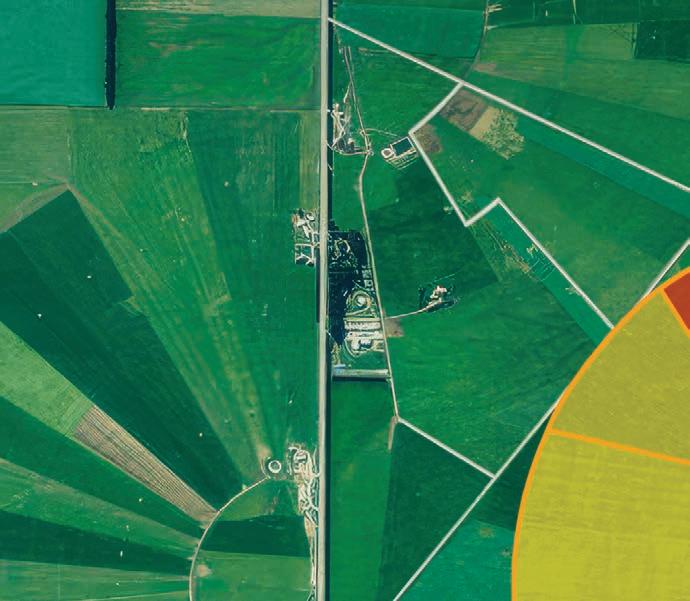
big dramatic weather headlines from other outlets to double-check that forecast with RuralWeather. co.nz. Get that second opinion. There is a tropical system north of NZ this week that wants to pull down towards us – but it can only do so if high pressure in NZ clears out of the way.
This is the case for ALL tropical lows and cyclones.
The high-pressure belt that moves from west to east across us is like the main highway, and the tropics is like a small road wanting to pull out and across this busy main highway.
In this analogy it means big northern rainmakers can be frustratingly close but may not bring relief.
Other forecasters and news outlets may not be so interested in that small difference and talk of a major rain event on the way, but we don’t want to give you false hope. Sometimes being honest can be a bit depressing – but in the long run, to be a reliable weather forecaster it pays to park any excitement for what you personally may want and instead always focus on what is most likely to happen.

AFTER YOU: For heavy rain in the tropics to reach New Zealand, we first need high pressure around NZ to move out of the way.
Highlights this week
• More high pressure
• Weak cold front(s) will move up the country but won’t deliver much
• A tropical low wants to reach NZ, but high pressure over NZ is the controlling factor. It’s complicated – worth monitoring late week/weekend.
